Substituted pyrrolidines as mGluR5 antagonists
Chen , et al.
U.S. patent number 10,328,054 [Application Number 15/771,920] was granted by the patent office on 2019-06-25 for substituted pyrrolidines as mglur5 antagonists. This patent grant is currently assigned to Hua Medicine (Shanghai) Ltd.. The grantee listed for this patent is Hua Medicine (Shanghai) Ltd.. Invention is credited to Li Chen, Yuejiao Duan, Jin She, Chengde Wu.



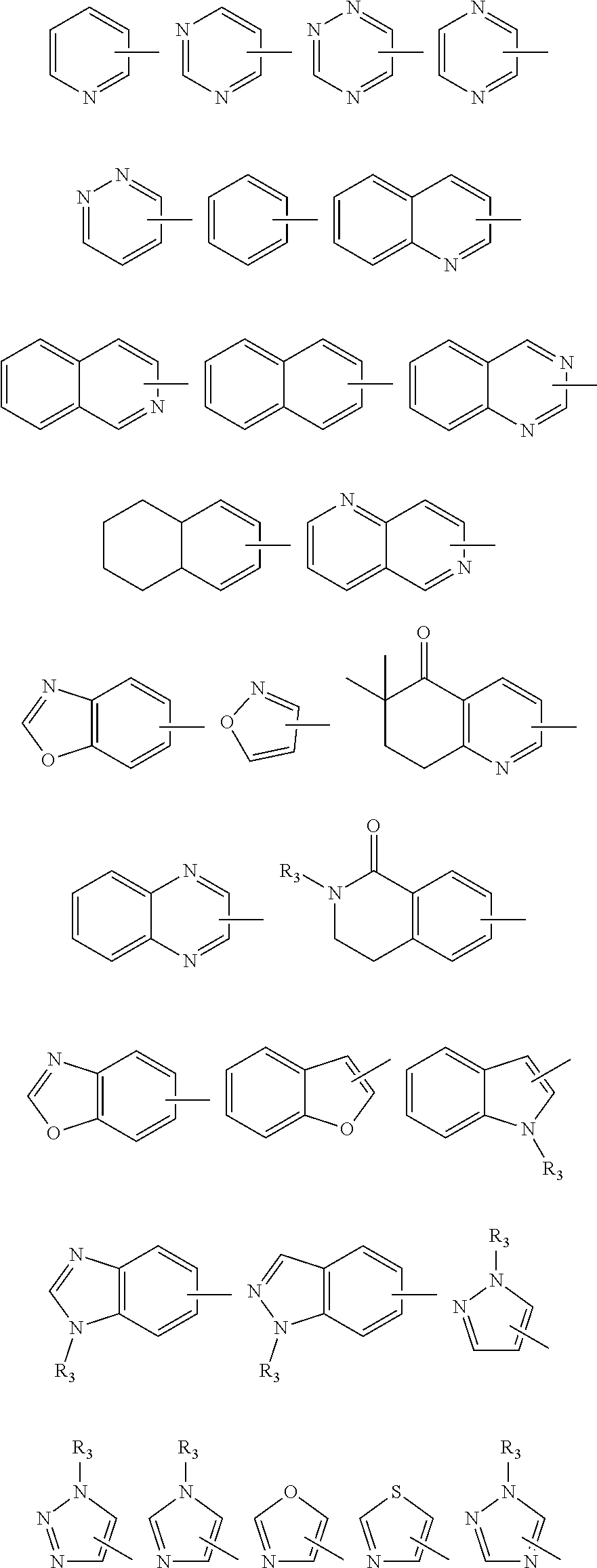








View All Diagrams
| United States Patent | 10,328,054 |
| Chen , et al. | June 25, 2019 |
Substituted pyrrolidines as mGluR5 antagonists
Abstract
Provided herein are compounds of the formula (I), as well as pharmaceutically acceptable salts thereof, wherein the substituents are as those disclosed in the specification. These compounds, and the pharmaceutical compositions containing them, are useful for the treatment or prevention of mGluR5 mediated disorders, such as acute and/or chronic neurological disorders, cognitive disorders and memory deficits, as well as acute and chronic pain. ##STR00001##
| Inventors: | Chen; Li (Shanghai, CN), Duan; Yuejiao (Shanghai, CN), She; Jin (Shanghai, CN), Wu; Chengde (Shanghai, CN) | ||||||||||
|---|---|---|---|---|---|---|---|---|---|---|---|
| Applicant: |
|
||||||||||
| Assignee: | Hua Medicine (Shanghai) Ltd.
(Shanghai, CN) |
||||||||||
| Family ID: | 58629839 | ||||||||||
| Appl. No.: | 15/771,920 | ||||||||||
| Filed: | October 21, 2016 | ||||||||||
| PCT Filed: | October 21, 2016 | ||||||||||
| PCT No.: | PCT/CN2016/102946 | ||||||||||
| 371(c)(1),(2),(4) Date: | April 27, 2018 | ||||||||||
| PCT Pub. No.: | WO2017/071536 | ||||||||||
| PCT Pub. Date: | May 04, 2017 |
Prior Publication Data
| Document Identifier | Publication Date | |
|---|---|---|
| US 20180318254 A1 | Nov 8, 2018 | |
Foreign Application Priority Data
| Oct 28, 2015 [CN] | 2015 1 0713865 | |||
| Current U.S. Class: | 1/1 |
| Current CPC Class: | A61K 31/4025 (20130101); A61K 31/437 (20130101); A61K 31/506 (20130101); A61K 31/497 (20130101); A61K 31/403 (20130101); C07D 401/14 (20130101); C07D 417/06 (20130101); A61K 31/501 (20130101); A61P 25/28 (20180101); A61K 31/4184 (20130101); C07D 403/06 (20130101); C07D 417/14 (20130101); C07D 401/06 (20130101); A61K 31/4439 (20130101); C07D 471/04 (20130101) |
| Current International Class: | A61K 31/403 (20060101); A61K 31/437 (20060101); A61K 31/4184 (20060101); A61K 31/4025 (20060101); A61P 25/28 (20060101); C07D 471/04 (20060101); C07D 417/14 (20060101); C07D 417/06 (20060101); C07D 403/06 (20060101); C07D 401/06 (20060101); C07D 401/14 (20060101); C07D 209/52 (20060101); A61K 31/497 (20060101); A61K 31/4439 (20060101); A61K 31/506 (20060101); A61K 31/501 (20060101) |
| Field of Search: | ;514/412 ;548/452 |
References Cited [Referenced By]
U.S. Patent Documents
| 2008/0269250 | October 2008 | Glatthar |
| 3000794 | May 2017 | CA | |||
| 2014/124560 | Aug 2014 | WO | |||
Other References
|
Jordan, V. C. Nature Reviews: Drug Discovery, 2, 2003, 205. cited by examiner . Hackam, et al. JAMA, 296(14), 2006, 1731-1732. cited by examiner . Komeyama, et al., "Intramolecular Alkynylcyclopropanation of Olefins Catalyzed by Bi(OTf)3:Stereoselective Synthesis of 1-Alkynyl-3-azabicyclo[3.1.0]hexanes," Angewandte Chemie, International Edition, vol. 48, No. 52, Dec. 31, 2009, pp. 9875-9878. cited by applicant . International Preliminary Report on Patentability for PCT/CN2016/102946, dated Mar. 5, 2018. cited by applicant . Written Opinion and International Search Report for PCT/CN2016/102946, dated Jan. 4, 2018 and Jan. 11, 2018. cited by applicant. |
Primary Examiner: Willis; Douglas M
Attorney, Agent or Firm: McDonnell Boehnen Hulbert & Berghoff LLP
Claims
The invention claimed is:
1. A compound of formula (I): ##STR00182## or a pharmaceutically acceptable salt thereof, wherein: R.sub.1 is a 5- to 10-membered monocyclic or bicyclic heteroaryl that contains 1, 2 or 3 heteroatoms selected from the group consisting of nitrogen, oxygen and sulfur, wherein the 5- to 10-membered monocyclic or bicyclic heteroaryl is optionally substituted with 1, 2 or 3 substituents independently selected from the group consisting of alkyl, halogen, --OH, --CN, --NO.sub.2, --CF.sub.3, --O--CF.sub.3, --O-alkyl, --O-aryl, --S-alkyl, --S-aryl, --S(O)-alkyl, --S(O)-aryl, --S(O).sub.2-alkyl, --S(O).sub.2-aryl, --CH.sub.2-aryl, aryl, heteroaryl, --O--CH.sub.2-aryl, --N(CH.sub.3).sub.2, cycloalkyl, heterocycloalkyl, --C(O)-alkyl, --C(O)-cycloalkyl, --C(O)-heterocycloalkyl, --C(O)-aryl, --C(O)-- heteroaryl, --C(O)O-alkyl, --C(O)O-cycloalkyl, --C(O)O-heterocycloalkyl, --C(O)O-aryl, --C(O)O-heteroaryl, --C(O)NH-alkyl, --C(O)NH-cycloalkyl, --C(O)NH-heteroalkyl, --C(O)NH-aryl and --C(O)NH-heteroaryl, wherein the substituents may combine to form a 5-7 membered fused carbocyclyl or heterocyclyl; and R.sub.2 is --C(O)-alkyl, --C(O)-arylalkyl, --C(O)-aryl, --C(O)-heteroaryl, --S(O).sub.2-aryl, --S(O).sub.2-heteroaryl, --C(O)O-alkyl, --C(O)O-aryl, --C(O)O-arylalkyl or --C(O)--NH.sub.2, wherein the aryl or heteroaryl portion of the --C(O)-arylalkyl, --C(O)-aryl, --C(O)-heteroaryl, --S(O).sub.2-aryl, --S(O).sub.2-heteroaryl, --C(O)O-aryl and --C(O)O-arylalkyl is optionally substituted with 1, 2 or 3 substituents independently selected from the group consisting of alkyl, halogen, --OH, --CN, --NO.sub.2, --CF.sub.3, --O--CF.sub.3, --O-alkyl, --O-aryl, --S-alkyl, --S-aryl, --S(O)-alkyl, --S(O)-aryl, --S(O).sub.2-alkyl, --S(O).sub.2-aryl, --CH.sub.2-aryl, heteroaryl, --O--CH.sub.2-aryl, --N(CH.sub.3).sub.2, cycloalkyl, heterocycloalkyl, --C(O)-alkyl, --C(O)-cycloalkyl, --C(O)-heterocycloalkyl, --C(O)-aryl, --C(O)-heteroaryl, --C(O)O-alkyl, --C(O)O-cycloalkyl, --C(O)O-heterocycloalkyl, --C(O)O-aryl, --C(O)O-heteroaryl, --C(O)NH-- alkyl, --C(O)NH-cycloalkyl, --C(O)NH-heteroalkyl, --C(O)NH-aryl and --C(O)NH-heteroaryl, wherein the substituents may combine to form a 5-7 membered fused carbocyclyl or heterocyclyl; or R.sub.2 is a 5- to 10-membered monocyclic or bicyclic heteroaryl that contains 1, 2 or 3 heteroatoms selected from the group consisting of nitrogen, oxygen and sulfur, wherein the 5- to 10-membered monocyclic or bicyclic heteroaryl is optionally substituted with 1, 2 or 3 substituents independently selected from the group consisting of alkyl, halogen, --OH, --CN, --NO.sub.2, --CF.sub.3, --O--CF.sub.3, --O-alkyl, --O-aryl, --S-alkyl, --S-aryl, --S(O)-alkyl, --S(O)-aryl, --S(O).sub.2-alkyl, --S(O).sub.2-aryl, --CH.sub.2-aryl, aryl, heteroaryl, --O--CH.sub.2-aryl, --N(CH.sub.3).sub.2, cycloalkyl, heterocycloalkyl, --C(O)-alkyl, --C(O)-cycloalkyl, --C(O)-heterocycloalkyl, --C(O)-aryl, --C(O)-- heteroaryl, --C(O)O-alkyl, --C(O)O-cycloalkyl, --C(O)O-heterocycloalkyl, --C(O)O-aryl, --C(O)O-heteroaryl, --C(O)NH-alkyl, --C(O)NH-cycloalkyl, --C(O)NH-heteroalkyl, --C(O)NH-aryl and --C(O)NH-heteroaryl, wherein the substituents may combine to form a 5-7 membered fused carbocyclyl or heterocyclyl; or R.sub.2 is a 5- to 10-membered monocyclic or bicyclic aryl, wherein the 5- to 10-membered monocyclic or bicyclic aryl is optionally substituted with 1, 2 or 3 substituents independently selected from the group consisting of alkyl, halogen, --OH, --CN, --NO.sub.2, --CF.sub.3, --O--CF.sub.3, --O-alkyl, --O-aryl, --S-alkyl, --S-aryl, --S(O)-alkyl, --S(O)-aryl, --S(O).sub.2-alkyl, --S(O).sub.2-aryl, --CH.sub.2-aryl, aryl, heteroaryl, --O--CH.sub.2-aryl, --N(CH.sub.3).sub.2, cycloalkyl, heterocycloalkyl, --C(O)-alkyl, --C(O)-cycloalkyl, --C(O)-heterocycloalkyl, --C(O)-aryl, --C(O)-heteroaryl, --C(O)O-alkyl, --C(O)O-cycloalkyl, --C(O)O-heterocycloalkyl, --C(O)O-aryl, --C(O)O-heteroaryl, --C(O)NH-- alkyl, --C(O)NH-cycloalkyl, --C(O)NH-heteroalkyl, --C(O)NH-aryl and --C(O)NH-heteroaryl, wherein the substituents may combine to form a 5-7 membered fused carbocyclyl or heterocyclyl.
2. The compound according to claim 1, or a pharmaceutically acceptable salt thereof, wherein: R.sub.1 is a 5- to 6-membered monocyclic heteroaryl that contains 1, 2 or 3 heteroatoms selected from the group consisting of nitrogen, oxygen and sulfur, optionally substituted with 1 or 2 substituents; and R.sub.2 is --C(O)--C.sub.1-C.sub.5-alkyl, --C(O)--C.sub.1-C.sub.5-alkylaryl, --C(O)-aryl, --C(O)-heteroaryl, --C(O)O--C.sub.1-C.sub.5-alkyl, --C(O)O--C.sub.1-C.sub.5-arylalkyl or --S(O).sub.2-phenyl, wherein the aryl, phenyl or heteroaryl portion of the --C(O)--C.sub.1-C.sub.5-alkylaryl, --C(O)-aryl, --C(O)-heteroaryl, --C(O)O--C.sub.1-C.sub.5-arylalkyl and --S(O).sub.2-phenyl is optionally substituted; or R.sub.2 is a 5- to 10-membered monocyclic or bicyclic heteroaryl that contains 1, 2 or 3 heteroatoms selected from the group consisting of nitrogen, oxygen and sulfur, wherein the 5- to 10-membered monocyclic or bicyclic heteroaryl is optionally substituted with 1 or 2 substituents; or R.sub.2 is a 5- to 10-membered monocyclic or bicyclic aryl, wherein the 5- to 10-membered monocyclic or bicyclic aryl is optionally substituted with 1 or 2 substituents.
3. The compound according to claim 1, or a pharmaceutically acceptable salt thereof, wherein: R.sub.1 is selected from the group consisting of: ##STR00183## and R.sub.3 is --H or lower alkyl.
4. The compound according to claim 1, or a pharmaceutically acceptable salt thereof, wherein R.sub.1 is optionally substituted thiazolyl, optionally substituted pyridin-4-yl, optionally substituted pyridazinyl, optionally substituted pyrimidinyl or optionally substituted pyrazinyl.
5. The compound according to claim 1, or a pharmaceutically acceptable salt thereof, wherein R.sub.1 is optionally substituted pyridin-2-yl.
6. The compound according to claim 1, wherein the compound is selected from the group consisting of: 3-fluoro-5-(1-(pyridin-2-ylethynyl)-3-azabicyclo[3.1.0]hexan-3-yl)benzoni- trile, 3-(4-fluorophenyl)-1-(pyridin-2-ylethynyl)-3-azabicyclo[3.1.0]hexan- e, 1-(pyridin-2-ylethynyl)-3-(4-(trifluoromethoxy)phenyl)-3-azabicyclo[3.1- .0]hexane, 3-phenyl-1-(pyridin-2-ylethynyl)-3-azabicyclo[3.1.0]hexane, 3-(2-fluorophenyl)-1-(pyridin-2-ylethynyl)-3-azabicyclo[3.1.0]hexane, 3-(2-chlorophenyl)-1-(pyridin-2-ylethynyl)-3-azabicyclo[3.1.0]hexane, 3-(3-chlorophenyl)-1-(pyridin-2-ylethynyl)-3-azabicyclo[3.1.0]hexane, 3-(4-chlorophenyl)-1-(pyridin-2-ylethynyl)-3-azabicyclo[3.1.0]hexane, 3-(3-chloro-5-fluorophenyl)-1-(pyridin-2-ylethynyl)-3-azabicyclo[3.1.0]he- xane, 3-(4-chloro-2-fluorophenyl)-1-(pyridin-2-ylethynyl)-3-azabicyclo[3.1- .0]hexane, 3-(4-chloro-3-fluorophenyl)-1-(pyridin-2-ylethynyl)-3-azabicycl- o[3.1.0]hexane, 3-(1-(pyridin-2-ylethynyl)-3-azabicyclo[3.1.0]hexan-3-yl)benzonitrile, 3-(3,5-difluorophenyl)-1-(pyrimidin-2-ylethynyl)-3-azabicyclo[3.1.0]hexan- e, 3-(3-fluorophenyl)-1-(pyrimidin-2-ylethynyl)-3-azabicyclo[3.1.0]hexane, 3-(1-((2-methylthiazol-4-yl)ethynyl)-3-azabicyclo[3.1.0]hexan-3-yl)benzon- itrile, 4-(3-(5-fluoropyridin-3-yl)-3-azabicyclo[3.1.0]hexan-1-yl)ethynyl)- -2-methylthiazole, and 3-(1-(pyrimidin-2-ylethynyl)-3-azabicyclo[3.1.0]hexan-3-yl)benzonitrile, or a pharmaceutically acceptable salt thereof.
7. The compound according to claim 1, wherein the compound is selected from the group consisting of: 3-(5-fluoropyridin-3-yl)-1-(pyridin-2-ylethynyl)-3-azabicyclo[3.1.0]hexan- e, 3-(5-fluoropyridin-2-yl)-1-(pyridin-2-ylethynyl)-3-azabicyclo[3.1.0]hex- ane, 2-(1-(pyridin-2-ylethynyl)-3-azabicyclo[3.1.0]hexan-3-yl)isonicotinon- itrile, 5-(1-(pyridin-2-ylethynyl)-3-azabicyclo[3.1.0]hexan-3-yl)-1H-pyrro- lo[3,2-b]pyridine, 5-(1-(pyridin-2-ylethynyl)-3-azabicyclo[3.1.0]hexan-3-yl)-1H-benzo[d]imid- azole, 6-(1-(pyridin-2-ylethynyl)-3-azabicyclo[3.1.0]hexan-3-yl)picolinoni- trile, 3-(5-fluoropyridin-3-yl)-1-((6-methylpyridin-2-yl)ethynyl)-3-azabic- yclo[3.1.0]hexane, 5-(1-(pyridin-2-ylethynyl)-3-azabicyclo[3.1.0]hexan-3-yl)nicotinonitrile, and 3-(5-fluoropyridin-3-yl)-1-(pyrimidin-2-ylethynyl)-3-azabicyclo[3.1.0- ]hexane, or a pharmaceutically acceptable salt thereof.
8. The compound according to claim 1, wherein the compound is selected from the group consisting of: 3-(phenylsulfonyl)-1-(pyridin-2-ylethynyl)-3-azabicyclo[3.1.0]hexane, (3-chlorophenyl)(1-(pyridin-2-ylethynyl)-3-azabicyclo[3.1.0]hexan-3-yl)me- thanone, pyridin-2-yl(1-(pyridin-2-ylethynyl)-3-azabicyclo[3.1.0]hexan-3-y- l)methanone, phenyl(1-(pyridin-2-ylethynyl)-3-azabicyclo[3.1.0]hexan-3-yl)methanone, 2-phenyl-1-(1-(pyridin-2-ylethynyl)-3-azabicyclo[3.1.0]hexan-3-yl)ethanon- e, (2-chlorophenyl)(1-(pyridin-2-ylethynyl)-3-azabicyclo[3.1.0]hexan-3-yl)- methanone, 1-(1-(pyridin-2-ylethynyl)-3-azabicyclo[3.1.0]hexan-3-yl)pentan- -1-one, 3-phenyl-1-(1-(pyridin-2-ylethynyl)-3-azabicyclo[3.1.0]hexan-3-yl)- propan-1-one, (4-chlorophenyl)(1-(pyridin-2-ylethynyl)-3-azabicyclo[3.1.0]hexan-3-yl)me- thanone, 3-((3-chlorophenyl)sulfonyl)-1-(pyridin-2-ylethynyl)-3-azabicyclo- [3.1.0]hexane, 3-((4-chlorophenyl)sulfonyl)-1-(pyridin-2-ylethynyl)-3-azabicyclo[3.1.0]h- exane, 3-((2-chlorophenyl)sulfonyl)-1-(pyridin-2-ylethynyl)-3-azabicyclo[3- .1.0]hexane, 1-(pyridin-2-ylethynyl)-3-tosyl-3-azabicyclo[3.1.0]hexane, (3-fluorophenyl)(1-(pyridin-2-ylethynyl)-3-azabicyclo[3.1.0]hexan-3-yl)me- thanone, 3-((2-fluorophenyl)sulfonyl)-1-(pyridin-2-ylethynyl)-3-azabicyclo- [3.1.0]hexane, (3-fluorophenyl)(1-((6-methylpyridin-2-yl)ethynyl)-3-azabicyclo[3.1.0]hex- an-3-yl)methanone, (3-chlorophenyl)(1-((2-methylthiazol-4-yl)ethynyl)-3-azabicyclo[3.1.0]hex- an-3-yl)methanone, cyclopentyl(1-(pyridin-2-ylethynyl)-3-azabicyclo[3.1.0]hexan-3-yl)methano- ne, 2,2-dimethyl-1-(1-(pyridin-2-ylethynyl)-3-azabicyclo[3.1.0]hexan-3-yl)- propan-1-one, methyl-1-(pyridin-2-ylethynyl)-3-azabicyclo[3.1.0]hexane-3-carboxylate (5-chloropyridin-3-yl)-(1-(pyridin-2-ylethynyl)-3-azabicyclo[3.1.0]hexan-- 3-yl)methanone, (4-chloropyridin-2-yl)(1-(pyridin-2-ylethynyl)-3-azabicyclo[3.1.0]hexan-3- -yl)methanone, (6-chloropyridin-3-yl)(1-(pyridin-2-ylethynyl)-3-azabicyclo[3.1.0]hexan-3- -yl)methanone, (3-chlorophenyl)(1-(pyrimidin-2-ylethynyl)-3-azabicyclo[3.1.0]hexan-3-yl)- methanone, 2-methyl-1-(1-((6-methylpyridin-2-yl)ethynyl)-3-azabicyclo[3.1.- 0]hexan-3-yl)propan-1-one, 1-(1-((6-chloropyridin-2-yl)ethynyl)-3-azabicyclo[3.1.0]hexan-3-yl)-2-met- hylpropan-1-one, (1-((2-methylthiazol-4-yl)ethynyl)-3-azabicyclo[3.1.0]hexan-3-yl)(phenyl)- methanone, 1-(1-((2-methylthiazol-4-yl)ethynyl)-3-azabicyclo[3.1.0]hexan-3- -yl)pentan-1-one, 2-methyl-1-(1-((2-methylthiazol-4-yl)ethynyl)-3-azabicyclo[3.1.0]hexan-3-- yl)propan-1-one, and 2,2-dimethyl-1-(1-((2-methylthiazol-4-yl)ethynyl)-3-azabicyclo[3.1.0]hexa- n-3-yl)propan-1-one, or a pharmaceutically acceptable salt thereof.
9. The compound according to claim 1, wherein the compound is selected from the group consisting of: 3-fluoro-5-(1-(pyrazin-2-ylethynyl)-3-azabicyclo[3.1.0]hexan-3-yl)benzoni- trile, 3-fluoro-5-(1-(pyrimidin-2-ylethynyl)-3-azabicyclo[3.1.0]hexan-3-yl- )benzonitrile, 3-fluoro-5-(1-((3-methylpyridin-2-yl)ethynyl)-3-azabicyclo[3.1.0]hexan-3-- yl)benzonitrile, 3-fluoro-5-(1-(pyridazin-3-ylethynyl)-3-azabicyclo[3.1.0]hexan-3-yl)benzo- nitrile, 3-(1-((2-chloropyridin-4-yl)ethynyl)-3-azabicyclo[3.1.0]hexan-3-y- l)-5-fluorobenzonitrile, 3-fluoro-5-(1-((6-methylpyridin-2-yl)ethynyl)-3-azabicyclo[3.1.0]hexan-3-- yl)benzonitrile, 3-(1-(6-chloropyridin-2-yl)-3-azabicyclo[3.1.0]hexan-3-yl)-5-fluorobenzon- itrile, 3-fluoro-5-(1-((6-methoxypyridin-2-yl)ethynyl)-3-azabicyclo[3.1.0]- hexan-3-yl)benzonitrile, and 3-fluoro-5-(1-((2-methylthiazol-4-yl)ethynyl)-3-azabicyclo[3.1.0]hexan-3-- yl)benzonitrile, or a pharmaceutically acceptable salt thereof.
10. A pharmaceutical composition comprising a compound according to claim 1, or a pharmaceutically acceptable salt thereof, and a pharmaceutically acceptable carrier or diluent.
11. A pharmaceutical composition comprising a compound according to claim 6, or a pharmaceutically acceptable salt thereof, and a pharmaceutically acceptable carrier or diluent.
12. A pharmaceutical composition comprising a compound according to claim 7, or a pharmaceutically acceptable salt thereof, and a pharmaceutically acceptable carrier or diluent.
13. A pharmaceutical composition comprising a compound according to claim 8, or a pharmaceutically acceptable salt thereof, and a pharmaceutically acceptable carrier or diluent.
14. A pharmaceutical composition comprising a compound according to claim 9, or a pharmaceutically acceptable salt thereof, and a pharmaceutically acceptable carrier or diluent.
15. A method for antagonizing metabotropic glutamate receptor 5 activity in a subject, comprising administering to the subject a compound according to claim 1, or a pharmaceutically acceptable salt thereof.
16. A method for antagonizing metabotropic glutamate receptor 5 activity in a subject, comprising administering to the subject a compound according to claim 6, or a pharmaceutically acceptable salt thereof.
17. A method for antagonizing metabotropic glutamate receptor 5 activity in a subject, comprising administering to the subject a compound according to claim 7, or a pharmaceutically acceptable salt thereof.
18. A method for antagonizing metabotropic glutamate receptor 5 activity in a subject, comprising administering to the subject a compound according to claim 8, or a pharmaceutically acceptable salt thereof.
19. A method for antagonizing metabotropic glutamate receptor 5 activity in a subject, comprising administering to the subject a compound according to claim 9, or a pharmaceutically acceptable salt thereof.
20. A method for antagonizing metabotropic glutamate receptor 5 activity in a subject, comprising administering to the subject a pharmaceutical composition according to claim 10.
21. A compound selected from the group consisting of: N-phenyl-1-(pyridin-2-ylethynyl)-3-azabicyclo[3.1.0]hexane-3-carboxamide, N-propyl-1-(pyridin-2-ylethynyl)-3-azabicyclo[3.1.0]hexane-3-carboxamide, (1-(pyridin-2-ylethynyl)-3-azabicyclo[3.1.0]hexan-3-yl)(pyrrolidin-1-yl)m- ethanone, and 1-(pyridin-2-ylethynyl)-N-(2,2,2-trifluoroethyl)-3-azabicyclo[3.1.0]hexan- e-3-carboxamide, or a pharmaceutically acceptable salt thereof.
22. A pharmaceutical composition comprising a compound according to claim 21, or a pharmaceutically acceptable salt thereof, and a pharmaceutically acceptable carrier or diluent.
23. A method for antagonizing metabotropic glutamate receptor 5 activity in a subject, comprising administering to the subject a compound according to claim 21, or a pharmaceutically acceptable salt thereof.
24. A method for antagonizing metabotropic glutamate receptor 5 activity in a subject, comprising administering to the subject a pharmaceutical composition according to claim 22.
Description
CROSS-REFERENCE TO RELATED APPLICATIONS
This application is a national stage application under 35 U.S.C. .sctn. 371 of International Application No. PCT/CN2016/102946, filed Oct. 21, 2016, which claims priority to the Chinese Patent Application No. 201510713865.7, filed on Oct. 28, 2015, the disclosures of which are explicitly incorporated by reference herein.
BACKGROUND OF THE INVENTION
Field of the Invention
The invention is directed to mGluR5 antagonists useful for the treatment or prevention of mGluR5 mediated disorders, such as acute and/or chronic neurological disorders, cognitive disorders and memory deficits, as well as acute and chronic pain.
Description of Related Art
Glutamate is the most prominent neurotransmitter in the body, being present in over 50% of nervous tissue. Glutamate mediates its effects through two major groups of receptors: ionotropic and metabotropic. Ionotropic glutamate receptors are ion channel receptors which are often responsible for fast excitatory transmission. They are generally divided into N-methyl-D-aspartate (NMDA), .alpha.-amino-3-hydroxy-5-methyl-4-isoxazole propionic acid (AMPA) and kainite receptors. By contrast, metabotropic glutamate receptors (mGluRs) belong to the class C G-protein-coupled receptor (GPCR) protein family and are mainly involved in the modulation of fast excitatory transmission. As such, they are attractive therapeutic targets for treatment of disorders involving malfunction of glutamate signaling. The mGluRs are further divided into three groups (Group I, II and III) based on amino acid sequence homology, signal transduction mechanism and pharmacological properties. Group I receptors include mGluR1 and mGluR5, Group II includes mGluR2 and mGluR3 and Group III includes mGluR4, mGluR6, mGluR7 and mGluR8. The Group I mGluR1 and mGluR5 couple to G-proteins of the Gq family, Gq and G11, and their activation leads to activation of phospholipase C, resulting in the hydrolysis of membrane phosphatidylinositol (4, 5)-bisphosphate to diacylglycerol, which subsequently activates protein kinase C, and inositol trisphosphate, which in turn activates the inositol trisphosphate receptor to promote the release of intracellular calcium.
Anatomical studies demonstrate a broad and selective distribution of mGluRs in the mammalian nervous system. For example, mGluR5 are abundantly expressed in the striatum, cortex, hippocampus, caudate-putamen and nucleus accumbens; see for example: Shigemoto, R., Nomura, S., Hidemitsu, S., et al. Neuroscience Lett. 1993, 163, 53-57. As these brain areas have been shown to be involved in emotion, motivational processes, learning and memory, as well as motor control, mGluR5 modulators have long been regarded as possessing therapeutic potential for a wide range of indications.
mGluR5 antagonists can be used for modulating the activity of the mGluR5 and for use in the treatment or prevention of mGluR5 mediated disorders, such as acute and/or chronic neurological disorders, cognitive disorders and memory deficits, acute and chronic pain, protection against drug or disease induced liver damage or failure, urinary inconsistence. Other diseases contemplated include cerebral ischemia, chronic neurodegeneration including Huntington's chorea, amyotrophic lateral sclerosis, Alzheimer's disease, Parkinson's disease, psychiatric disorders, schizophrenia, mood disorders, emotion disorders, disorders of extrapyramidal motor function, obesity, disorders of pulmonary system and respiration, motor control and function, attention deficit disorders, concentration disorders, mental retardation (including mental retardation related to Fragile X syndrome), autism spectrum disorders (ASDs), pain disorders, neurodegenerative disorders, epilepsy, convulsive disorders, migraine, dyskinesia, eating disorders, vomiting, muscle spasms, urinary inconsistence, sleep disorders, sexual disorders, circadian disorders, drug withdrawal, drug addiction, compulsive disorders, anxiety, panic disorders, depressive disorders, skin disorders, retinal ischemia, retinal degeneration, glaucoma, disorders associated with organ transplantation, asthma, ischemia and astrocytomas, diseases of the cardiovascular system, diseases of the gastrointestinal system such as gastroesophageal reflux disease and irritable bowel syndrome, diseases of the endocrine system, diseases of the exocrine system, diseases of the skin, cancer and diseases of the ophthalmic system. The development and use of mGluR5 antagonists has been summarized in numerous review articles for example: Gasparini, F., Bilbe, G., Gomez-Mancilla, G., and Spooren, W., Current Opinion in Drug Discovery & Developmen, 655-665, 2008, 11(5); Rocher, J.-P., Bonnet, B., Bolea, C., et al., Current Topics in Medicinal Chemistry. 2011, 11, 680-695; Dekundy, A., Gravius, A., Hechenberger, M, et al., J. Neural Transm. 2011, 118, 1703-1716; Niswender, C. M.; Conn, P. J., Annu Rev Pharmacol Toxicol, 2010, 50, 295-322; Emmitte K A. mGluR5 negative allosteric modulators: a patent review (2010-2012). Guiying Li, Morten Jorgensen, Expert Opin Ther Pat. 2013, Apr. 23(4), 393-408; and Brian M Campbell. Metabotropic glutamate receptor 5-negative allosteric modulators for the treatment of psychiatric and neurological disorders (2009-July 2013), Pharmaceutical Patent Analyst. 2(6): 767-802.
SUMMARY OF THE INVENTION
The present invention is directed to compounds of the formula (I),
##STR00002## or a pharmaceutically acceptable salt thereof, to pharmaceutical compositions containing said compounds or a pharmaceutically acceptable salt thereof, wherein the definitions of R.sub.1, R.sub.2, are as defined below, and to methods of treating diseases and disorders. The compounds and compositions disclosed herein are mGluR5 antagonists useful for the treatment of mGluR5 mediated disorders, including acute and/or chronic neurological disorders, cognitive disorders and memory deficits, as well as acute and chronic pain.
All documents cited or relied upon below are expressly incorporated herein by reference.
DETAILED DESCRIPTION OF THE INVENTION
In an embodiment of the present invention, provided are compounds of formula (I):
##STR00003## or a pharmaceutically acceptable salt thereof,
wherein:
R.sub.1 is a 5- to 10-membered mono- or bicyclic heteroaryl ring that contains 1-3 heteroatoms selected from the group consisting of N, O and S, wherein the 5- to 10-membered ring system is optionally substituted with 0-3 substituents independently selected from alkyl, halogen, --OH, --CN, nitro, --CF.sub.3, --O--CF.sub.3, --O-alkyl, --O-aryl, --S-alkyl, --S-aryl, --S(O)-alkyl, --S(O)-aryl, --S(O.sub.2)-alkyl, --S(O.sub.2)-aryl, --CH.sub.2-aryl, aryl, heteroaryl, --O--CH.sub.2-aryl, --N(CH.sub.3).sub.2, cycloalkyl, heterocycloalkyl, --C(O)-alkyl, --C(O)cycloalkyl, --C(O)heterocycloalkyl, --C(O)-aryl, --C(O)-heteroaryl, --C(O)O-alkyl, --C(O)O-cycloalkyl, --C(O)O-heterocycloalkyl, --C(O)O-aryl, --C(O)O-heteroaryl, --C(O)N-alkyl, --C(O)N-cycloalkyl, --C(O)N-heteroalkyl, --C(O)N-aryl, --C(O)N-heteroaryl or substituted lower alkyl, wherein the substituents may combine to form an optionally substituted 5-7 membered fused and optionally substituted carbocyclic or heterocyclic ring; or a 5- to 10-membered mono- or bicyclic aryl ring, wherein the 5- to 10-membered aryl ring is optionally substituted with 0-3 substituents independently selected from alkyl, halogen, --OH, --CN, nitro, --CF.sub.3, --OCF.sub.3, --O-alkyl, --O-aryl, --S-alkyl, --S-aryl, --S(O)-alkyl, --S(O)-aryl, --S(O.sub.2)-alkyl, --S(O.sub.2)-aryl, --CH.sub.2-aryl, aryl, heteroaryl, --O--CH.sub.2-aryl, --N(CH.sub.3).sub.2, cycloalkyl, heterocycloalkyl, --C(O)-alkyl, --C(O)cycloalkyl, --C(O)-heterocycloalkyl, --C(O)-aryl, --C(O)-heteroaryl, --C(O)O-alkyl, --C(O)O-cycloalkyl, --C(O)O-heterocycloalkyl, --C(O)O-aryl, --C(O)O-heteroaryl, --C(O)N-alkyl, --C(O)N-cycloalkyl, --C(O)N-heteroalkyl, --C(O)N-aryl, --C(O)N-heteroaryl or substituted lower alkyl, wherein the substituents may combine to form a 5-7 membered fused and optionally substituted carbocyclic or heterocyclic ring. R.sub.2 is alkanoyl, arylalkanoyl, heteroaryl acyl, aryl sulfonyl, heteroaryl sulfonyl, alkoxycarbonyl, --C(O)O-aryl, arylalkoxycarbonyl, or acylamino, wherein the aryl or heteroaryl are optionally substituted with 0-3 substituents independently selected from alkyl, halogen, --OH, --CN, nitro, --CF.sub.3, --OCF.sub.3, --O-alkyl, --O-aryl, --S-alkyl, --S-aryl, --S(O)-- alkyl, S(O)-aryl, --S(O.sub.2)-alkyl, --S(O.sub.2)aryl, --CH.sub.2-aryl, heteroaryl, --O--CH.sub.2-aryl, --N(CH.sub.3).sub.2, cycloalkyl, heterocycloalkyl, --C(O)-alkyl, --C(O)cycloalkyl, --C(O)-heterocycloalkyl, --C(O)-aryl, --C(O)-heteroaryl, --C(O)O-alkyl, --C(O)O-cycloalkyl, --C(O)O-heterocycloalkyl, --C(O)O-aryl, --C(O)O-heteroaryl, --C(O)N-alkyl, --C(O)N-cycloalkyl, --C(O)N-heteroalkyl, --C(O)N-aryl, --C(O)N-heteroaryl or substituted lower alkyl, wherein the substituents may combine to form an optionally substituted 5-7 membered fused carbocyclic or heterocyclic ring; or a 5- to 10-membered mono- or bicyclic heteroaryl ring that contains 1-3 heteroatoms selected from the group consisting of N, O and S, wherein the 5- to 10-membered ring system is optionally substituted with 0-3 substituents independently selected from alkyl, halogen, --OH, --CN, nitro, --CF.sub.3, --O--CF.sub.3, --O-alkyl, --O-aryl, --S-alkyl, --S-aryl, --S(O)-alkyl, --S(O)-aryl, --S(O.sub.2)-alkyl, --S(O.sub.2)-aryl, --CH.sub.2-aryl, aryl, heteroaryl, --O--CH.sub.2-aryl, --N(CH.sub.3).sub.2, cycloalkyl, heterocycloalkyl, --C(O)-alkyl, --C(O)cycloalkyl, --C(O)heterocycloalkyl, --C(O)-aryl, --C(O)-heteroaryl, --C(O)O-alkyl, --C(O)O-cycloalkyl, --C(O)O-heterocycloalkyl, --C(O)O-aryl, --C(O)O-heteroaryl, --C(O)N-alkyl, --C(O)N-cycloalkyl, --C(O)N-heteroalkyl, --C(O)N-aryl, --C(O)N-heteroaryl or substituted lower alkyl, wherein the substituents may combine to form an optionally substituted 5-7 membered fused and optionally substituted carbocyclic or heterocyclic ring; or a 5- to 10-membered mono- or bicyclic aryl ring, wherein the 5- to 10-membered ring system is optionally substituted with 0-3 substituents independently selected from alkyl, halogen, --OH, --CN, nitro, --CF.sub.3, --OCF.sub.3, --O-alkyl, --O-aryl, --S-alkyl, --S-aryl, --S(O)-alkyl, S(O)-aryl, --S(O.sub.2)-alkyl, --S(O.sub.2)aryl, --CH.sub.2-aryl, aryl, heteroaryl, --O--CH.sub.2-aryl, --N(CH.sub.3).sub.2, cycloalkyl, heterocycloalkyl, --C(O)-alkyl, --C(O)cycloalkyl, --C(O)-heterocycloalkyl, --C(O)-aryl, --C(O)-heteroaryl, --C(O)O-alkyl, --C(O)O-cycloalkyl, --C(O)O-heterocycloalkyl, --C(O)O-aryl, --C(O)O-heteroaryl, --C(O)N-alkyl, --C(O)N-cycloalkyl, --C(O)N-heteroalkyl, --C(O)N-aryl, --C(O)N-heteroaryl or substituted lower alkyl, wherein the substituents may combine to form an optionally substituted 5-7 membered fused carbocyclic or heterocyclic ring.
In a further embodiment of the present invention, provided is a compound according to formula (I), or a pharmaceutically acceptable salt thereof, wherein: R.sub.1 is a substituted or unsubstituted ring selected from the following list:
##STR00004## wherein the ring is optionally substituted with 0-3 substituents independently selected from alkyl, halogen, --OH, --CN, nitro, --CF.sub.3, --OCF.sub.3, --O-alkyl, --O-aryl, --S-alkyl, --S-aryl, --S(O)-alkyl, S(O)-aryl, --S(O.sub.2)-alkyl, --S(O.sub.2)aryl, --CH.sub.2-aryl, aryl, heteroaryl, --O--CH.sub.2-aryl, --N(CH.sub.3).sub.2, cycloalkyl, heterocycloalkyl, --C(O)-alkyl, --C(O)cycloalkyl, --C(O)-- heterocycloalkyl, --C(O)-aryl, --C(O)-heteroaryl, --C(O)O-alkyl, --C(O)O-cycloalkyl, --C(O)O-heterocycloalkyl, --C(O)O-aryl, --C(O)O-heteroaryl, --C(O)N-alkyl, --C(O)N-- cycloalkyl, --C(O)N-heteroalkyl, --C(O)N-aryl, --C(O)N-heteroaryl or substituted lower alkyl, wherein the substituents may combine to form an optionally substituted 5-7 membered fused carbocyclic or heterocyclic ring; R.sub.3 is --H or lower alkyl; R.sub.2 is alkanoyl, arylalkanoyl, heteroaryl acyl, aryl sulfonyl, heteroaryl sulfonyl, alkoxycarbonyl, --C(O)O-aryl, arylalkoxycarbonyl, or acylamino, wherein the aryl or heteroaryl are optionally substituted with 0-3 substituents independently selected from alkyl, halogen, --OH, --CN, nitro, --CF.sub.3, --OCF.sub.3, --O-alkyl, --O-aryl, --S-alkyl, --S-aryl, --S(O)-- alkyl, S(O)-aryl, --S(O.sub.2)-alkyl, --S(O.sub.2)aryl, --CH.sub.2-aryl, heteroaryl, --O--CH.sub.2-aryl, --N(CH.sub.3).sub.2, cycloalkyl, heterocycloalkyl, --C(O)-alkyl, --C(O)cycloalkyl, --C(O)-heterocycloalkyl, --C(O)-aryl, --C(O)-heteroaryl, --C(O)O-alkyl, --C(O)O-cycloalkyl, --C(O)O-heterocycloalkyl, --C(O)O-aryl, --C(O)O-heteroaryl, --C(O)N-alkyl, --C(O)N-cycloalkyl, --C(O)N-heteroalkyl, --C(O)N-aryl, --C(O)N-heteroaryl or substituted lower alkyl, wherein the substituents may combine to form an optionally substituted 5-7 membered fused carbocyclic or heterocyclic ring; or a 5- to 10-membered mono- or bicyclic heteroaryl ring that contains 1-3 heteroatoms selected from the group consisting of N, O and S, wherein the 5- to 10-membered ring system is optionally substituted with 0-3 substituents independently selected from alkyl, halogen, --OH, --CN, nitro, --CF.sub.3, --O--CF.sub.3, --O-alkyl, --O-aryl, --S-alkyl, --S-aryl, --S(O)-alkyl, --S(O)-aryl, --S(O.sub.2)-alkyl, --S(O.sub.2)-aryl, --CH.sub.2-aryl, aryl, heteroaryl, --O--CH.sub.2-aryl, --N(CH.sub.3).sub.2, cycloalkyl, heterocycloalkyl, --C(O)-alkyl, --C(O)cycloalkyl, --C(O)heterocycloalkyl, --C(O)-aryl, --C(O)-heteroaryl, --C(O)O-alkyl, --C(O)O-cycloalkyl, --C(O)O-heterocycloalkyl, --C(O)O-aryl, --C(O)O-heteroaryl, --C(O)N-alkyl, --C(O)N-cycloalkyl, --C(O)N-heteroalkyl, --C(O)N-aryl, --C(O)N-heteroaryl or substituted lower alkyl, wherein the substituents may combine to form an optionally substituted 5-7 membered fused and optionally substituted carbocyclic or heterocyclic ring; or a 5- to 10-membered mono- or bicyclic aryl ring, wherein the 5- to 10-membered ring system is optionally substituted with 0-3 substituents independently selected from alkyl, halogen, --OH, --CN, nitro, --CF.sub.3, --OCF.sub.3, --O-alkyl, --O-aryl, --S-alkyl, --S-aryl, --S(O)-alkyl, S(O)-aryl, --S(O.sub.2)-alkyl, --S(O.sub.2)aryl, --CH.sub.2-aryl, aryl, heteroaryl, --O--CH.sub.2-aryl, --N(CH.sub.3).sub.2, cycloalkyl, heterocycloalkyl, --C(O)-alkyl, --C(O)cycloalkyl, --C(O)-heterocycloalkyl, --C(O)-aryl, --C(O)-heteroaryl, --C(O)O-alkyl, --C(O)O-cycloalkyl, --C(O)O-heterocycloalkyl, --C(O)O-aryl, --C(O)O-heteroaryl, --C(O)N-alkyl, --C(O)N-cycloalkyl, --C(O)N-heteroalkyl, --C(O)N-aryl, --C(O)N-heteroaryl or substituted lower alkyl, wherein the substituents may combine to form an optionally substituted 5-7 membered fused carbocyclic or heterocyclic ring.
In a further embodiment of the present invention, provided is a compound according to formula (I), or a pharmaceutically acceptable salt thereof, wherein: R.sub.1 is an optionally mono- or disubstituted 5- to 6-membered monocyclic heteroaryl ring that contains 1-3 heteroatoms selected from the group consisting of N, O and S; and R.sub.2 is optionally mono- or disubstituted 5- to 10-membered mono- or bicyclic aryl, or optionally mono- or disubstituted mono- or bicyclic heteroaryl that contains 1-3 heteroatoms selected from the group consisting of N, O and S, or optionally substituted --C(O)--C.sub.1-C.sub.5-alkyl, --C(O)--C.sub.1-C.sub.5-alkyl-aryl, --C(O)-aryl, --C(O)-heteroaryl, --C(O)O--C.sub.1-C.sub.5-alkyl, --C(O)O--C.sub.1-C.sub.5-alkyl-aryl or --S(O.sub.2)-phenyl.
In a further embodiment of the present invention, provided is a compound according to formula (I), or a pharmaceutically acceptable salt thereof, wherein:
R.sub.1 is 2-pyridinyl or substituted 2-pyridinyl, 4-pyridinyl or substituted 4-pyridinyl, or
R.sub.1 is pyrimidinyl, pyrazinyl, pyridazinyl or thiazoly.
In a further embodiment of the present invention, provided is a compound according to formula (I), or a pharmaceutically acceptable salt thereof, wherein: R.sub.1 is 2-pyridinyl optionally substituted with 1 or 2 substituents independently selected from halogen, --C.sub.1-C.sub.4-alkyl, --O--C.sub.1-C.sub.4-alkyl, wherein halogen includes --F, --C1, --Br or --I; --C.sub.1-C.sub.4-alkyl includes, but are not limited to, methyl, ethyl, propyl, iso-propyl, butyl, iso-butyl, tert-butyl; --O--C.sub.1-C.sub.4-alkyl includes, but are not limited to methoxyl, ethyoxyl, propoxyl, iso-propoxyl, butoxyl, iso-butoxyl or tert-butoxyl, or R.sub.1 is 4-pyridinyl optionally substituted with 1 or 2 substituents independently selected from halogen, --C.sub.1-C.sub.4-alkyl, --O--C.sub.1-C.sub.4-alkyl, wherein halogen includes --F, --Cl, --Br or --I; --C.sub.1-C.sub.4-alkyl includes, but are not limited to, methyl, ethyl, propyl, iso-propyl, butyl, iso-butyl, tert-butyl, --O--C.sub.1-C.sub.4-alkyl includes, but are not limited to methoxyl, ethyoxyl, propoxyl, iso-propoxyl, butoxyl, iso-butoxyl or tert-butoxyl; or R.sub.1 is pyrimidinyl, pyrazinyl, pyridazinyl or thiazoly optionally substituted with 1 or 2 substituents independently selected from halogen, --C.sub.1-C.sub.4-alkyl, --O--C.sub.1-C.sub.4-alkyl, wherein halogen includes --F, --Cl, --Br or --I; --C.sub.1-C.sub.4-alkyl includes, but are not limited to, methyl, ethyl, propyl, iso-propyl, butyl, iso-butyl, tert-butyl; the --O--C.sub.1-C.sub.4-alkyl includes, but are not limited to methoxyl, ethyoxyl, propoxyl, iso-propoxyl, butoxyl, iso-butoxyl or tert-butoxyl. R.sub.2 is a 5- to 10-membered mono- or bicyclic aryl or heteroaryl ring that contains 1, 2, or 3 heteroatoms independently selected from the group consisting of N, O and S, wherein the 5- to 10-membered ring system is optionally substituted with 1 or 2 substituents independently selected from --C.sub.1-C.sub.4-alkyl, halogen, --CN, nitro, --CF.sub.3, --OCF.sub.3, --O--C.sub.1-C.sub.4-alkyl, --SCH.sub.3, --S(O)--CH.sub.3, --S(O.sub.2)--CH.sub.3, --CO.sub.2CH.sub.3, --C(O)NH.sub.2, --C(O)NH(CH.sub.3), --C(O)N(CH.sub.3).sub.2, phenyl, wherein halogen includes --F, --Cl, --Br or --I; the --C.sub.1-C.sub.4-alkyl includes, but are not limited to methyl, ethyl, propyl, iso-propyl, butyl, iso-butyl, tert-butyl; the --O--C.sub.1-C.sub.4-alkyl includes, but are not limited to methoxyl, ethoxyl, propoxyl, iso-proxyl, butoxyl, iso-butoxyl, tert-butoxyl, wherein the 5- to 10-membered ring system is preferably phenyl, pyridinyl, benzimidazolyl, azaindolyl; or R.sub.2 is --C(O)--C.sub.1-C.sub.5-alkyl, --C(O)--C.sub.1-C.sub.5-alkyl-aryl, --C(O)-phenyl, --C(O)-benzyl, --CO-pyridinyl, --C(O)O--C.sub.1-C.sub.5-alkyl, --C(O)O--C.sub.1-C.sub.5-alkyl-phenyl, --C(O)O-phenyl, --C(O)O-benzyl --S(O.sub.2)-phenyl, --C(O)N-aryl, --C(O)N-alkyl, --C(O)N-alkyl-CF.sub.3, wherein --C.sub.1-C.sub.5-alkyl includes methyl, ethyl, propyl, iso-propyl, butyl, iso-butyl, tert-butyl, pentyl, iso-pentyl, tert-pentyl, neo-pentyl. The benzyl or phenyl in the substitutions is optionally further substituted with 1 or 2 substituents selected from halogen, --C.sub.1-C.sub.4-alkyl, --CN or --O--CF.sub.3 which is optionally further substituted with a 1 or 2 substituents independent selected from halogen, --C.sub.1-C.sub.4-alkyl, --CN or --O--CF.sub.3 wherein halogen includes --F, --C1, --Br or --I; --C.sub.1-C.sub.4-alkyl includes, but are not limited to, methyl, ethyl, propyl, iso-propyl, butyl, iso-butyl, tert-butyl.
In a still further embodiment of the present invention, provided is a pharmaceutical composition, comprising a therapeutically effective amount of a compound according to formula (I) or a pharmaceutically acceptable salt thereof and a pharmaceutically acceptable carrier.
It is to be understood that the terminology employed herein is for the purpose of describing particular embodiments, and is not intended to be limiting. Further, although any methods, devices and materials similar or equivalent to those described herein can be used in the practice or testing of the invention, the preferred methods, devices and materials are now described.
As used herein, the term "alkyl", alone or in combination with other groups, refers to a branched or straight-chain monovalent saturated aliphatic hydrocarbon radical of one to twenty carbon atoms, preferably one to sixteen carbon atoms, more preferably one to ten carbon atoms.
As used herein, the term "alkenyl", alone or in combination with other groups, refers to a straight-chain or branched hydrocarbon residue having an olefinic bond of two to twenty carbon atoms, preferably two to sixteen carbon atoms, more preferably two to ten carbon atoms.
The term "cycloalkyl" refers to a monovalent mono- or polycarbocyclic radical of three to ten, preferably three to six carbon atoms. This term is further exemplified by radicals such as cyclopropyl, cyclobutyl, cyclopentyl, cyclohexyl, cycloheptyl, norbornyl, adamantyl, indanyl and the like. In a preferred embodiment, the "cycloalkyl" moieties can optionally be substituted with one, two, three or four substituents, with the understanding that said substituents are not, in turn, substituted further unless indicated otherwise in the Examples or claims below.
Each substituent can independently be, alkyl, alkoxy, halogen, amino, hydroxyl or oxygen (O.dbd.) unless otherwise specifically indicated. Examples of cycloalkyl moieties include, but are not limited to, optionally substituted cyclopropyl, optionally substituted cyclobutyl, optionally substituted cyclopentyl, optionally substituted cyclopentenyl, optionally substituted cyclohexyl, optionally substituted cyclohexylene, optionally substituted cycloheptyl, and the like or those which are specifically exemplified herein.
The term "heterocycloalkyl" denotes a mono- or polycyclic alkyl ring, wherein one, two or three of the carbon ring atoms is replaced by a heteroatom such as N, O or S. Examples of heterocycloalkyl groups include, but are not limited to, morpholinyl, thiomorpholinyl, piperazinyl, piperidinyl, pyrrolidinyl, tetrahydropyranyl, tetrahydrofuranyl, 1,3-dioxanyl and the like. The heterocycloalkyl groups may be unsubstituted or substituted and attachment may be through their carbon frame or through their heteroatom(s) where appropriate, with the understanding that said substituents are not, in turn, substituted further unless indicated otherwise in the Examples or claims below.
The term "lower alkyl", alone or in combination with other groups, refers to a branched or straight-chain alkyl radical of one to nine carbon atoms, preferably one to six carbon atoms, more preferably one to four carbon atoms. This term is further exemplified by radicals such as methyl, ethyl, n-propyl, isopropyl, n-butyl, s-butyl, isobutyl, t-butyl, n-pentyl, 3-methylbutyl, n-hexyl, 2-ethylbutyl and the like.
The term "aryl" refers to an aromatic mono- or polycarbocyclic radical of 6 to 12 carbon atoms having at least one aromatic ring. Examples of such groups include, but are not limited to, phenyl, naphthyl, 1, 2, 3, 4-tetrahydronaphthalene, 1, 2-dihydronaphthalene, indanyl, 1H-indenyl and the like.
The alkyl, lower alkyl and aryl groups may be substituted or unsubstituted. When substituted, there will generally be, for example, 1 to 4 substituents present, with the understanding that said substituents are not, in turn, substituted further unless indicated otherwise in the Examples or claims below. These substituents may optionally form a ring with the alkyl, lower alkyl or aryl group with which they are connected. Substituents may include, for example: carbon-containing groups such as alkyl, aryl, arylalkyl (e.g. substituted and unsubstituted phenyl, substituted and unsubstituted benzyl); halogen atoms and halogen-containing groups such as haloalkyl (e.g. trifluoromethyl); oxygen-containing groups such as alcohols (e.g. hydroxyl, hydroxyalkyl, aryl(hydroxyl)alkyl), ethers (e.g. alkoxy, aryloxy, alkoxyalkyl, aryloxyalkyl, more preferably, for example, methoxy and ethoxy), aldehydes (e.g. carboxaldehyde), ketones (e.g. alkylcarbonyl, alkylcarbonylalkyl, arylcarbonyl, arylalkylcarbonyl, arycarbonylalkyl), acids (e.g. carboxy, carboxyalkyl), acid derivatives such as esters (e.g. alkoxycarbonyl, alkoxycarbonylalkyl, alkylcarbonyloxy, alkylcarbonyloxyalkyl), amides (e.g. aminocarbonyl, mono- or di-alkylaminocarbonyl, aminocarbonylalkyl, mono- or di-alkylaminocarbonylalkyl, arylaminocarbonyl), carbamates (e.g. alkoxycarbonylamino, aryloxycarbonylamino, aminocarbonyloxy, mono- or di-alkylaminocarbonyloxy, arylminocarbonloxy) and ureas (e.g. mono- or di-alkylaminocarbonylamino or arylaminocarbonylamino); nitrogen-containing groups such as amines (e.g. amino, mono- or di-alkylamino, aminoalkyl, mono- or di-alkylaminoalkyl), azides, nitriles (e.g. cyano, cyanoalkyl), nitro; sulfur-containing groups such as thiols, thioethers, sulfoxides and sulfones (e.g. alkylthio, alkylsulfinyl, alkylsulfonyl, alkylthioalkyl, alkylsulfinylalkyl, alkylsulfonylalkyl, arylthio, arysulfinyl, arysulfonyl, arythioalkyl, arylsulfinylalkyl, arylsulfonylalkyl); and heterocyclic groups containing one or more heteroatoms, (e.g. thienyl, furanyl, pyrrolyl, imidazolyl, pyrazolyl, thiazolyl, isothiazolyl, oxazolyl, oxadiazolyl, thiadiazolyl, aziridinyl, azetidinyl, pyrrolidinyl, pyrrolinyl, imidazolidinyl, imidazolinyl, pyrazolidinyl, tetrahydrofuranyl, pyranyl, pyronyl, pyridyl, pyrazinyl, pyridazinyl, piperidyl, hexahydroazepinyl, piperazinyl, morpholinyl, thianaphthyl, benzofuranyl, isobenzofuranyl, indolyl, oxyindolyl, isoindolyl, indazolyl, indolinyl, 7-azaindolyl, benzopyranyl, coumarinyl, isocoumarinyl, quinolinyl, isoquinolinyl, naphthridinyl, cinnolinyl, quinazolinyl, pyridopyridyl, benzoxazinyl, quinoxalinyl, chromenyl, chromanyl, isochromanyl, phthalazinyl and carbolinyl).
The term "heteroaryl," refers to an aromatic mono- or polycyclic radical of 5 to 12 atoms having at least one aromatic ring containing one, two, or three ring heteroatoms selected from N, O, and S, with the remaining ring atoms being C. One or two ring carbon atoms of the heteroaryl group may be replaced with a carbonyl group. Examples of such groups include, but are not limited to, pyrimidinyl, pyridyl, indoyl, quinolinyl, pyridon-2-yl, isoquinolinyl, 5,6,7,8-tetrahydroquinolinyl, thienyl, furanyl, imidazolyl, pyrazolyl, thiazolyl, isothiazolyl, oxazolyl, oxadiazolyl, thiadiazolyl, pyrazolidinyl, pyrazinyl, pyridazinyl, thianaphthyl, benzofuranyl, isobenzofuranyl, oxyindolyl, isoindolyl, indazolyl, indolinyl, 7-azaindolyl, benzopyranyl, coumarinyl, isocoumarinyl, isoquinolinyl, naphthridinyl, cinnolinyl, quinazolinyl, pyridopyridyl, benzoxazinyl, quinoxalinyl, chromenyl, chromanyl, isochromanyl, phthalazinyl and the like.
The heteroaryl group described above may be substituted independently with one, two, or three substituents, with the understanding that said substituents are not, in turn, substituted further unless indicated otherwise in the Examples or claims below. These substituents may optionally form a ring with the heteroaryl group to which they are connected. Substituents may include, for example: carbon-containing groups such as alkyl, aryl, arylalkyl (e.g. substituted and unsubstituted phenyl, substituted and unsubstituted benzyl); halogen atoms and halogen-containing groups such as haloalkyl (e.g. trifluoromethyl); oxygen-containing groups such as alcohols (e.g. hydroxyl, hydroxyalkyl, aryl(hydroxyl)alkyl), ethers (e.g. alkoxy, aryloxy, alkoxyalkyl, aryloxyalkyl), aldehydes (e.g. carboxaldehyde), ketones (e.g. alkylcarbonyl, alkylcarbonylalkyl, arylcarbonyl, arylalkylcarbonyl, arylcarbonylalkyl), acids (e.g. carboxy, carboxyalkyl), acid derivatives such as esters (e.g. alkoxycarbonyl, alkoxycarbonylalkyl, alkylcarbonyloxy, alkylcarbonyloxyalkyl), amides (e.g. aminocarbonyl, mono- or di-alkylaminocarbonyl, aminocarbonylalkyl, mono- or di-alkylaminocarbonylalkyl, arylaminocarbonyl), carbamates (e.g. alkoxycarbonylamino, aryloxycarbonylamino, aminocarbonyloxy, mono- or di-alkylaminocarbonyloxy, arylminocarbonloxy) and ureas (e.g. mono- or di-alkylaminocarbonylamino or arylaminocarbonylamino); nitrogen-containing groups such as amines (e.g. amino, mono- or di-alkylamino, aminoalkyl, mono- or di-alkylaminoalkyl), azides, nitriles (e.g. cyano, cyanoalkyl), nitro; sulfur-containing groups such as thiols, thioethers, sulfoxides and sulfones (e.g. alkylthio, alkylsulfinyl, alkylsulfonyl, alkylthioalkyl, alkylsulfinylalkyl, alkylsulfonylalkyl, arylthio, arysulfinyl, arysulfonyl, arythioalkyl, arylsulfinylalkyl, arylsulfonylalkyl); and heterocyclic groups containing one or more heteroatoms, (e.g. thienyl, furanyl, pyrrolyl, imidazolyl, pyrazolyl, thiazolyl, isothiazolyl, oxazolyl, oxadiazolyl, thiadiazolyl, aziridinyl, azetidinyl, pyrrolidinyl, pyrrolinyl, imidazolidinyl, imidazolinyl, pyrazolidinyl, tetrahydrofuranyl, pyranyl, pyronyl, pyridyl, pyrazinyl, pyridazinyl, piperidyl, hexahydroazepinyl, piperazinyl, morpholinyl, thianaphthyl, benzofuranyl, isobenzofuranyl, indolyl, oxyindolyl, isoindolyl, indazolyl, indolinyl, 7-azaindolyl, benzopyranyl, coumarinyl, isocoumarinyl, quinolinyl, isoquinolinyl, naphthridinyl, cinnolinyl, quinazolinyl, pyridopyridyl, benzoxazinyl, quinoxalinyl, chromenyl, chromanyl, isochromanyl, phthalazinyl, benzothiazoyl and carbolinyl).
As used herein, the term "alkoxy" means alkyl-O--; and "alkanoyl" means alkyl-CO--. Alkoxy substituent groups or alkoxy-containing substituent groups may be substituted by, for example, one or more alkyl groups, with the understanding that said substituents are not, in turn, substituted further unless indicated otherwise in the Examples or claims below.
As used herein, the term "halogen" means a fluorine, chlorine, bromine or iodine radical, preferably a fluorine, chlorine or bromine radical, and more preferably a fluorine or chlorine radical.
Compounds of formula (I) can have one or more asymmetric carbon atoms and can exist in the form of optically pure enantiomers, mixtures of enantiomers such as, for example, racemates, optically pure diastereoisomers, mixtures of diastereoisomers, diastereoisomeric racemates or mixtures of diastereoisomeric racemates. The optically active forms can be obtained for example by resolution of the racemates, by asymmetric synthesis or asymmetric chromatography (chromatography with a chiral adsorbents or eluant). The invention embraces all of these forms.
As used herein, the term "pharmaceutically acceptable salt" means any pharmaceutically acceptable salt of the compound of formula (I). Salts may be prepared from pharmaceutically acceptable non-toxic acids and bases including inorganic and organic acids and bases. Such acids include, for example, acetic, benzenesulfonic, benzoic, camphorsulfonic, citric, ethenesulfonic, dichloroacetic, formic, fumaric, gluconic, glutamic, hippuric, hydrobromic, hydrochloric, isethionic, lactic, maleic, malic, mandelic, methanesulfonic, mucic, nitric, oxalic, pamoic, pantothenic, phosphoric, succinic, sulfuric, tartaric, oxalic, p-toluenesulfonic and the like. Particularly preferred are fumaric, hydrochloric, hydrobromic, phosphoric, succinic, sulfuric and methanesulfonic acids. Acceptable base salts include alkali metal (e.g. sodium, potassium), alkaline earth metal (e.g. calcium, magnesium) and aluminum salts.
In the practice of the method of the present invention, an effective amount of any one of the compounds of this invention or a combination of any of the compounds of this invention or a pharmaceutically acceptable salt thereof, is administered via any of the usual and acceptable methods known in the art, either singly or in combination. The compounds or compositions can thus be administered orally (e.g., buccal cavity), sublingually, parenterally (e.g., intramuscularly, intravenously, or subcutaneously), rectally (e.g., by suppositories or washings), transdermally (e.g., skin electroporation) or by inhalation (e.g., by aerosol), and in the form or solid, liquid or gaseous dosages, including tablets and suspensions. The administration can be conducted in a single unit dosage form with continuous therapy or in a single dose therapy ad libitum. The therapeutic composition can also be in the form of an oil emulsion or dispersion in conjunction with a lipophilic salt such as pamoic acid, or in the form of a biodegradable sustained-release composition for subcutaneous or intramuscular administration.
Useful pharmaceutical carriers for the preparation of the compositions hereof, can be solids, liquids or gases. Thus, the compositions can take the form of tablets, pills, capsules, suppositories, powders, enterically coated or other protected formulations (e.g. binding on ion-exchange resins or packaging in lipid-protein vesicles), sustained release formulations, solutions, suspensions, elixirs, aerosols, and the like. The carrier can be selected from the various oils including those of petroleum, animal, vegetable or synthetic origin, e.g., peanut oil, soybean oil, mineral oil, sesame oil, and the like. Water, saline, aqueous dextrose, and glycols are preferred liquid carriers, particularly (when isotonic with the blood) for injectable solutions. For example, formulations for intravenous administration comprise sterile aqueous solutions or of the active ingredient(s) which are prepared by dissolving solid active ingredient(s) in water to produce an aqueous solution, and rendering the solution sterile. Suitable pharmaceutical excipients include starch, cellulose, talc, glucose, lactose, talc, gelatin, malt, rice, flour, chalk, silica, magnesium stearate, sodium stearate, glycerol monostearate, sodium chloride, dried skim milk, glycerol, propylene glycol, water, ethanol, and the like. The compositions may be subjected to conventional pharmaceutical additives such as preservatives, stabilizing agents, wetting or emulsifying agents, salts for adjusting osmotic pressure, buffers and the like. Suitable pharmaceutical carriers and their formulation are described in Remington's Pharmaceutical Sciences by E. W. Martin. Such compositions will, in any event, contain an effective amount of the active compound together with a suitable carrier so as to prepare the proper dosage form for proper administration to the recipient.
The dose of a compound of the present invention depends on a number of factors, such as, for example, the manner of administration, the age and the body weight of the subject, and the condition of the subject to be treated, and ultimately will be decided by the attending physician or veterinarian. Such an amount of the active compound as determined by the attending physician or veterinarian is referred to herein, and in the claims, as a "therapeutically effective amount". For example, the dose of a compound of the present invention is typically in the range of about 1 mg to about 1000 mg per day. Preferably, the therapeutically effective amount is in an amount of from about 1 mg to about 500 mg per day.
It will be appreciated, that the compounds of general formula (I) in this invention may be derivatized at functional groups to provide derivatives which are capable of conversion back to the parent compound in vivo. Physiologically acceptable and metabolically labile derivatives, which are capable of producing the parent compounds of general formula (I) in vivo are also within the scope of this invention.
Compounds of the present invention can be prepared beginning with commercially available starting materials and utilizing general synthetic techniques and procedures known to those skilled in the art. Chemicals may be purchased from companies such as for example Aldrich, Argonaut Technologies, VWR and Lancaster.
The compounds of formula (I) can be prepared by the following General Reaction Scheme:
##STR00005## In Scheme 1 compound of formula 1, in which PG is a protecting group, for example a 1,1-dimethylethoxycarbonyl (Boc) group, is known as a common intermediate, and the preparation of compound 1 would be described in Scheme 3.
Reaction of compounds 1 and 2 to form the alkyne 3 can be achieved by Sonogashira coupling of the alkyne 1 and halohydrocarbon 2 in a suitable inert solvent, for example THF, by adding Pd(PPH.sub.3).sub.2Cl.sub.2, Et.sub.3N and CuI, then the reaction mixture microwaved at a medium temperature, for example 90.degree. C., after reaction is complete and the newly formed compound 3 can be isolated using conventional techniques, for example by quenching the reaction with an aqueous solution followed by extraction of the products into an organic solvent, washing with brine, drying and chromatography over silica gel, if necessary (Sonogashira, K. (2002), "Development of Pd--Cu catalyzed cross-coupling of terminal acetylenes with sp.sup.2-carbon halides", J. Organomet. Chem. 653: 46-49; King, A. O.; Yasuda, N. (2004), "Palladium-Catalyzed Cross-Coupling Reactions in the Synthesis of Pharmaceuticals Organometallics in Process Chemistry", Top. Organomet. Chem. 6: 205-245).
Conditions for the removal of the protecting group in 3 to give a compound of structure 4, will depend on the particular choice of protecting group employed. Skilled organic chemists will be familiar with the various potential protecting and the procedures for their removal. In this regard, reference to a compendium of protecting groups such asWuts, P. G. and Greene, T. W., Greene's Protective Groups in Organic Synthesis, 4.sup.th ed., cited above may be useful. In one convenient implementation, a Boc ((1,1-dimethylethoxy)carbonyl) group may be used. In this case, its removal to give a compound of structure 4 may be readily achieved by treatment with an acid, for example trifluoroacetic acid (TFA) in a suitable solvent, for example dichloromethane followed by a conventional workup.
Further transformation of compounds of structure 4 to compounds of the invention will depend on the particular target compound desired. In the case that introduction of a sulfonyl group is desired to give a compound of structure 8, a compound of structure 4 may be treated with an activated sulfonyl derivative 5 in which Lv is a leaving group, for example a chloride. Such transformations are generally carried out in the presence of an organic or inorganic base, for example trimethylamine (TEA) in a suitable solvent such as dichloromethane. Skilled organic chemists will be familiar with the general reaction scope and be able to choose appropriate conditions for the target compound of interest.
In the event that an amide or carbamate of structure 9 is desired (R.sub.4=aryl, heteroaryl, alkyl, alkoxy, or arylalkoxy), a compound of structure 4 may be treated with an activated ester derivative 6 in which Lv is a suitable leaving group for acylation reactions, for example a halogen atom such as a chloride. Such reactions may be carried out under a wide variety of conditions well known to skilled organic chemists. In one set of conditions, an acyl chloride 6, in which Lv is chloride can be allowed to react with the amine 4 in an inert solvent such as dichloromethane at a suitable temperature, for example room temperature in the presence of base, for example TEA followed by a conventional workup involving quenching with an aqueous solution, extraction of the product into an organic solvent, drying, evaporation and optionally, chromatographic purification of the residue.
In case the desired compound is an N-aryl or N-heteroaryl derivative of structure 11, a compound of structure 4 may be reacted with a compound of structure 7 in which Lv represents a leaving group suitable for participation in a Buchwald reaction or Chan-Lam coupling reaction and R.sub.2'' represents a R.sub.2 of the invention or incorporates functionality that can transformed into a R.sub.2 of the invention through manipulation of substituents and protecting groups after the coupling reaction. Typical groups include iodide, bromide and chloride. Reactions typically are run in the presence of a base, which can either be a strong base such as LiHMDS or a weaker base such as Cs.sub.2CO.sub.3 in the presence of a palladium catalyst and suitable ligand. The selection of the base, solvent and ligand for a particular desired transformation may be guided by literature precedent (Surry, D. S. and Buchwald, S. L, Chem. Sci. 2011, 2: 27-50; D. M. T. Chan, K. L. Monaco, R.-P. Wang, M. P. Winteres, Tetrahedron Lett. 1998, 39: 2933-2936). For aryl and heteroaryl moieties with highly reactive leaving groups, for example 2-fluoropyridine, a direct reaction between that compound and compound 4 in the presence of a suitable base, for example potassium carbonate at an elevated temperature, for example 90-130.degree. C. can affect their transformation to a compound of structure 11.
In case the desired compound is the urea derivative of structure of 12 (R.sub.5=aryl, heteroaryl, C.sub.1-C.sub.4-alkyl, trifluoromethylalkyl, R.sub.5'=hydrogen, C.sub.1-C.sub.4-alkyl, wherein R.sub.5, R.sub.5' and the nitrogen atom to which they are attached may be combined to form an azacycloalkane), compound of structure 4 may be treated with isocyanate in the presence of presence of base, for example TEA, or treated with amine in the presence of CDI, to get the desired compound of structure of 12 (Johnson Douglas S., Ahn Kay, Kesten Suzanne, et al. Bioorganic & medicinal chemistry letters 2009, 19(10):2865-2869; Satoshi Sasaki, Nobuo Cho, Yoshi Nara, et al. J. Med. Chem. 2003, 46 (1): 113-124).
##STR00006##
The method for preparation of compounds of formula (I) (for R.sub.2=3-cyano-5-fluorophenyl) is shown in Scheme 2. Compounds 1 as described in Scheme 1 by deprotecting to give alkyne 13, may then undergo a Buchwald coupling reaction with compound 14 in which X' is halogen, like iodide, bromide and chloride to give compound 15. Compound 15 and 16 undergo a Sonogashira coupling reaction (Sonogashira, K., "Development of Pd--Cu catalyzed cross-coupling of terminal acetylenes with sp.sup.2-carbon halides", J. Organomet. Chem. 2002, 653: 46-49) to give the compounds of formula (I) (for R.sub.2=3-cyano-5-fluorophenyl).
##STR00007##
The procedure for preparation of compound 1 is shown in Scheme 3. Compound A is commercially available from Wuxi AppTech, treatmentment of A with an appropriate oxidant, like IBX in an inert solvent DMSO for example to give aldehyde B (Frigerio, M.; Santadostino, M.; Sputore, S.; Palmisano, G. J. Org. Chem. 1995, 60, 7272). Reacting B with Bestmann-Ohira Reagent Dimethyl (1-diazo-2-oxopropyl)-phosphonate through Seyferth-Gilbert homologation in the presence of base like potassium carbonate in a solvent such as methanol yields the desired compounds of formular 1 (S. Muller, B. Liepold, G. J. Roth, H. J. Bestmann, Synlett, 1996, 521-522; Ohira, S. Synthetic Commun. 1989, 19: 561-564).
The invention will now be further described in the Examples below, which are intended as an illustration only and do not limit the scope of the invention.
EXAMPLES
Example 1
Preparation of tert-butyl 1-ethynyl-3-azabicyclo[3.1.0]hexane-3-carboxylate
##STR00008##
Experimental Section
Procedure for Preparation of B
##STR00009##
To a solution of compound A (3.50 g, 16.4 mmol) in DMSO (30 mL) was added IBX (6.89 g, 24.6 mmol). The mixture was stirred at rt. for 16 hrs. TLC indicated compound A was consumed completely. The white suspension was diluted with EA (50 mL), filtered by celite pad. The filter was washed with saturated NaHCO.sub.3 (50 mL), then saturated Na.sub.2SO.sub.3 (50 mL) (KI paper test, negative), brine (50 mL), dried over anhydrous Na.sub.2SO.sub.4, filtered and concentrated. The crude product B (2.95 g, yield: 85%) was used for the next step without further purification.
Procedure for Preparation of 1
##STR00010##
To a solution of compound B (2.95 g, 13.9 mmol) in MeOH (30 mL) was added K.sub.2CO.sub.3 (5.79 g, 41.8 mmol), and then C (4.83 g, 25.1 mmol) was added at 0.degree. C. The mixture was stirred at rt. for 16 hrs. TLC indicated compound B was consumed completely and one new spot formed. The reaction mixture was diluted with DCM (50 mL) and H.sub.2O (40 mL). The combined organic layers were washed with brine (60 mL), dried over anhydrous Na.sub.2SO.sub.4, filtered and concentrated under reduced pressure to give a residue. The residue was purified by column chromatography to give product 1 (2.70 g, yield: 93%).
Example 2
Procedure for Preparation of 1-ethynyl-3-azabicyclo[3.1.0]hexane
##STR00011##
To a solution of 1 (2.0 g, 9.65 mmol) in DCM (20 mL) was added TFA (10 mL). The mixture was stirred at rt. for 1 hr., LCMS showed that 1 was consumed completely. The reaction mixture was concentrated under reduced pressure. The residue was dissolved in MeOH, then neutralized pH to 8-9 by basic resin, filtered and concentrated under reduced pressure to give the crude product 2 (1.0 g, crude), which was used for the next step without purification.
Example 3
Preparation of 3-(1-ethynyl-3-azabicyclo[3.1.0]hexan-3-yl)-5-fluorobenzonitrile
##STR00012##
Experimental Section
Procedure for Preparation of 4
To a solution of 2 (1.0 g, 9.33 mmol) and 3 (1.5 g, 11.2 mmol) in DMF (10 mL) was added K.sub.2CO.sub.3 (2.5 g, 18.6 mmol). The mixture was stirred at 110.degree. C. for 16 hrs. The reaction mixture was concentrated under reduced pressure. The residue was diluted with water (20 mL) and extracted with EA (30 mL.times.3), filtered and concentrated under reduced pressure to give a residue, which was purified by prep-HPLC to give product 4 (450 mg, yield: 21%).
Example 4
Preparation of 1-(pyridin-2-ylethynyl)-3-azabicyclo[3.1.0]hexane
##STR00013##
Experimental Section
Procedure for Preparation of 5
##STR00014##
A mixture of 1 (640.00 mg, 3.09 mmol), 4 (732.33 mg, 4.64 mmol), Pd(PPh.sub.3).sub.2Cl.sub.2 (216.89 mg, 309.00 .mu.mol), Et.sub.3N (625.35 mg, 6.18 mmol) and CuI (58.85 mg, 309.00 .mu.mol) were taken up into a microwave tube in THF (20 mL). The sealed tube was degassed with N.sub.2 twice and then heated at 90.degree. C. for 1 hr under microwave. TLC showed the starting material was consumed. After cooling to rt., EA (20 mL) and water (20 mL) were added. The aqueous layer was extracted with EA (20 mL.times.2). The combined organic layers were washed with brine (30 mL), dried over anhydrous Na.sub.2SO.sub.4, concentrated in vacuo to give the crude product, which was purified by chromatograph column to give product 5 (800.00 mg, yield: 91.05%).
LCMS: m/z, 285 (M+H).sup.+.
Procedure for Preparation of 6
##STR00015##
To a mixture of 5 (700.00 mg, 2.46 mmol) in DCM (20 mL) was added TFA (4 mL) in one portion at rt., the mixture was stirred at rt. for 1 hr. LCMS showed the reaction was completed. The mixture was concentrated in reduced pressure at 50.degree. C. The residue was poured into saturated NaHCO.sub.3 solution (50 mL) and stirred for 10 min. The aqueous phase was extracted with EA (30 mL.times.3). The combined organic phase was washed with saturated brine (30 mL.times.1), dried over anhydrous Na.sub.2SO.sub.4, filtered and concentrated in vacuo to afford product 6 (400.00 mg, yield: 88.26%).
Example Compound 1
Preparation of 3-fluoro-S-(1-(pyridin-2-ylethynyl)-3-azabicyclo[3.1.0]hexan-3-yl) benzonitrile
##STR00016##
Experimental Section
Procedure for Preparation of Compound 1
A mixture of 6 (400.00 mg, 2.17 mmol) and 3 (868.04 mg, 4.34 mmol) in toluene (20 mL) was added Pd(dba).sub.2 (124.84 mg, 217.00 .mu.mol), Cs.sub.2CO.sub.3 (1.41 g, 4.34 mmol) and Xantphos (125.62 mg, 217.00 .mu.mol) in one portion at rt. under N.sub.2 atmosphere. The mixture was then heated at 110.degree. C. and stirred for 18 hrs. LCMS showed the reaction was completed. The mixture was cooled to rt. and filtered. The filtrate was concentrated in reduced pressure at 60.degree. C. The residue was purified by prep-HPLC to afford Compound 1 (292.00 mg, yield: 44.06%).
LCMS: m/z, 304 (M+H).sup.+;
.sup.1H NMR (400 MHz, CDCl3): .delta. 8.54 (d, J=4.65 Hz, 1H), 7.63 (td, J=7.76, 1.59 Hz, 1H), 7.38 (d, J=7.83 Hz, 1H), 7.21 (dd, J=7.09, 5.38 Hz, 1H), 6.66 (d, J=7.58 Hz, 1H), 6.54 (s, 1H), 6.38-6.45 (m, 1H), 3.72 (d, J=9.05 Hz, 1H), 3.41-3.54 (m, 3H), 2.19 (dt, J=8.31, 4.40 Hz, 1H), 1.43 (dd, J=8.07, 4.89 Hz, 1H), 0.98 (t, J=5.01 Hz, 1H).
Example Compound 2
Preparation of 3-(4-fluorophenyl)-1-(pyridin-2-ylethynyl)-3-azabicyclo[3.1.0]hexane
##STR00017##
Experimental Section
Procedure for Preparation of Compound 2
To a mixture of 6 (100.00 mg, 542.77 .mu.mol) and 7 (361.49 mg, 1.63 mmol) in toluene (5.00 mL) was added Pd(dba).sub.2 (31.21 mg, 54.28 .mu.mol), Cs.sub.2CO.sub.3 (353.69 mg, 1.09 mmol) and Xantphos (31.41 mg, 54.28 .mu.mol) in one portion at rt. under N.sub.2 atmosphere. The mixture was then heated to 110.degree. C. and stirred for 18 hrs. LCMS showed the reaction was completed. The mixture was cooled to rt. and filtered. The filtrate was concentrated in reduced pressure at 60.degree. C. The residue was purified by prep-HPLC to afford the desired product Compound 2 (15.00 mg, yield: 9.72%).
LCMS: m/z, 279 (M+H).sup.+;
.sup.1HNMR (400 MHz, CDCl3): .delta. 8.48 (d, J=4.85 Hz, 1H), 7.56 (td, J=7.72, 1.76 Hz, 1H), 7.32 (d, J=7.94 Hz, 1H), 7.09-7.17 (m, 1H), 6.86 (t, J=8.71 Hz, 2H), 6.37-6.47 (m, 2H), 3.69 (d, J=8.60 Hz, 1H), 3.48 (d, J=8.82 Hz, 1H), 3.19-3.35 (m, 2H), 2.07 (dt, J=8.21, 4.38 Hz, 1H), 1.27 (dd, J=8.05, 4.52 Hz, 1H), 1.05 (t, J=4.63 Hz, 1H).
Example Compound 3
Preparation of 1-(pyridin-2-ylethynyl)-3-(4-(trifluoromethoxy)phenyl)-3-azabicyclo[3.1.0- ]hexane
##STR00018##
Experimental Section
Procedure for Preparation of Compound 3
To a mixture of 6 (100.00 mg, 542.77 .mu.mol) and 8 (299.73 mg, 1.09 mmol) in toluene (5.00 mL) was added Pd(dba).sub.2(31.21 mg, 54.28 .mu.mol), Cs.sub.2CO.sub.3 (353.69 mg, 1.09 mmol) and Xantphos (31.41 mg, 54.28 .mu.mol) in one portion at rt. under N.sub.2 atmosphere. The mixture was then heated to 110.degree. C. and stirred for 18 hours. LCMS showed the reaction was completed. The mixture was cooled to rt. and filtered. The filtrate was concentrated in reduced pressure at 60.degree. C. The residue was purified by prep-HPLC to afford the desired product Compound 3 (8.00 mg, yield: 4.36%).
LCMS: m/z, 345 (M+H).sup.+;
.sup.1HNMR (400 MHz, CDCl3): .delta. 8.54 (d, J=4.85 Hz, 1H), 7.63 (td, J=7.72, 1.76 Hz, 1H), 7.39 (d, J=7.72 Hz, 1H), 7.20 (dd, J=7.06, 5.51 Hz, 1H), 7.07 (d, J=8.60 Hz, 2H), 6.51 (d, J=9.26 Hz, 2H), 3.76 (d, J=8.82 Hz, 1H), 3.55 (d, J=9.04 Hz, 1H), 3.32-3.46 (m, 2H), 2.10-2.19 (m, 1H), 1.36 (dd, J=8.05, 4.52 Hz, 1H), 1.05 (t, J=4.63 Hz, 1H).
Example Compound 4
Preparation of 3-(5-fluoropyridin-3-yl)-1-(pyridin-2-ylethynyl)-3-azabicyclo[3.1.0]]hexa- ne
##STR00019##
Experimental Section
Procedure for Preparation of Compound 4
To a mixture of 6 (100.00 mg, 542.77 .mu.mol) and 9 (152.96 mg, 1.09 mmol) in DCM (20 mL), was added Cu(OAc).sub.2 (197.17 mg, 1.09 mmol) and Pyridine (128.80 mg, 1.63 mmol) in one portion at rt. in the open air. The mixture was stirred at rt. for 15 hrs. TLC showed the reaction was completed. The mixture was concentrated in reduced pressure. The residue was purified by prep-TLC followed by prep-HPLC purification to afford the desired product Compound 4 (30.00 mg, yield: 19.64%).
LCMS: m/z, 280.0 (M+H).sup.+;
.sup.1HNMR (400 MHz, CDCl3): .delta. 8.55-8.54 (m, 1H), 7.84 (s, 1H), 7.79 (s, 1H), 7.64-7.61 (m, 1H), 7.40-7.38 (m, 1H), 7.23-7.21 (m, 1H), 6.54-6.51 (m, 1H), 3.78-3.76 (m, 1H), 3.57-3.55 (m, 1H), 3.48-3.45 (m, 2H), 2.20-2.18 (m, 1H), 1.44-1.40 (m, 1H), 1.04-1.01 (m, 1H).
Example Compound 5
Preparation of 3-(phenylsulfonyl)-1-(pyridin-2-ylethynyl)-3-azabicyclo[3.1.0]hexane
##STR00020##
Experimental Section
Procedure for Preparation of Compound 5
To a mixture of 6 (150.00 mg, 814.16 .mu.mol) and TEA (247.15 mg, 2.44 mol) in DCM (15 mL), was added 10 (287.59 mg, 1.63 mmol) dropwise at rt. The mixture was stirred at rt. for 3 hr. LCMS showed the reaction was completed. The mixture was quenched with water (10 mL), the aqueous phase was extracted with DCM (20 mL.times.2). The combined organic phase was washed with saturated brine (5 mL), dried over anhydrous Na.sub.2SO4, filtered and concentrated in vacuo. The residue was purified by prep-HPLC to afford product Compound 5 (100.00 mg, yield: 33.51%).
LCMS: m/z, 325.0 (M+H).sup.+;
1HNMR (400 MHz, CDCl3): .delta. 8.51-8.49 (m, 1H), 7.80-7.79 (m, 2H), 7.63-7.54 (m, 4H), 7.33-7.31 (m, 1H), 7.20-7.18 (m, 1H), 3.76-3.74 (m, 1H), 3.60-3.58 (m, 1H), 3.18-3.12 (m, 2H), 1.90-1.88 (m, 1H), 1.23-1.20 (m, 1H), 1.14-1.11 (m, 1H).
Example Compound 6
Preparation of 3-(5-fluoropyridin-2-yl)-1-(pyridin-2-ylethynyl)-3-azabicyclo[3.1.0]hexan- e
##STR00021##
Experimental Section
Procedure for Preparation of Compound 6
A mixture of 6 (100.00 mg, 542.77 .mu.mol), 11 (191.04 mg, 1.09 mmol), Xantphos (31.41 mg, 54.28 .mu.mol), Cs.sub.2CO.sub.3 (530.54 mg, 1.63 mmol) and Pd(dba).sub.2 (31.21 mg, 54.28 .mu.mol) were taken up into a microwave tube in toluene (8 mL). The sealed tube was heated at 130.degree. C. for 1 hr under microwave. TLC showed the starting material was consumed completely, after cooling to rt., the reaction mixture was concentrated in reduced pressure. The residue was purified by prep-TLC followed by prep-HPLC purification to afford Compound 6 (17.00 mg, yield: 5.10%).
LCMS: m/z, 280.0 (M+H).sup.+;
.sup.1HNMR (400 MHz, CDCl3): .delta. 8.54-8.53 (m, 1H), 8.01-7.99 (m, 1H), 7.64-7.62 (m, 1H), 7.39-7.37 (m, 1H), 7.23-7.20 (m, 2H), 6.31-6.28 (m, 1H), 3.92-3.89 (m, 1H), 3.75-3.72 (m, 1H), 3.57-3.50 (m, 2H), 2.16-2.12 (m, 1H), 1.39-1.36 (m, 1H), 1.02-1.00 (m, 1H).
Example Compound 7
Preparation of 3-fluoro-5-(1-(pyrazin-2-ylethynyl)-3-azabicyclo[3.1.0]hexan-3-yl) benzonitrile
##STR00022##
Experimental Section
Procedure for Preparation of 13
##STR00023##
To a solution of 1 (300.00 mg, 1.45 mmol) and 12 (345.16 mg, 2.17 mmol) in THF (5 mL), Pd(PPh.sub.3).sub.2Cl.sub.2 (50.80 mg, 72.37 .mu.mol), TEA (439.38 mg, 4.34 mmol) and CuI (27.57 mg, 144.74 .mu.mol) were added, the reaction mixture was taken up into a microwave tube. The sealed tube was heated at 90.degree. C. for 1 hr under microwave. TLC showed the starting material was consumed completely, the reaction mixture was diluted with EA (10 mL), washed with brine (5 mL), dried over anhydrous Na.sub.2SO.sub.4, concentrated in vacuo to give the crude product which was purified by prep-HPLC to afford product 13 (300.00 mg, yield: 72.41%).
Procedure for Preparation of 14
##STR00024##
Compound 13 (300.00 mg, 1.05 mmol) was dissolved in TFA (1 mL) and DCM (5 mL), the solution was stirred at rt. for 3 hr, TLC showed the reaction was completed. The reaction mixture was concentrated to dryness and the residue was basified by adding 15% aq. NaOH (10 mL), extracted with EA (10 mL.times.3). The combined organic phase was washed with water (10 mL), brine (10 mL), dried over anhydrous Na.sub.2SO.sub.4, and concentrated to dryness to afford product 14 (160.00 mg, crude), which was used for the next step directly.
Procedure for Preparation of Compound 7
##STR00025##
A mixture of 3 (160.00 mg, 863.84 .mu.mol), 14 (320.06 mg, 1.30 mmol), Pd(dba).sub.2 (49.67 mg, 86.38 .mu.mol), Cs.sub.2CO.sub.3 (844.37 mg, 2.59 mmol) and Xantphos (41.18 mg, 86.38 .mu.mol) were taken up into a microwave tube in toluene (4 mL). The sealed tube was heated at 120.degree. C. for 1 hr under microwave. TLC showed the starting material was consumed completely. After cooling to rt., EA (10 mL) and water (10 mL) were added. The aqueous layer was extracted with EA (5 mL.times.3). The combined organic layers were washed with brine (5 mL), dried over anhydrous Na.sub.2SO.sub.4, concentrated in vacuo to give the crude product which was purified by prep-HPLC to afford product Compound 7 (85.00 mg, yield: 32.33%).
LCMS: m/z, 305.1 (M+H).sup.+;
.sup.1HNMR (400 MHz, CDCl3): .delta. 1.06 (t, J=5.2 Hz, 1H), 1.48 (dd, J=5.2, 8.0 Hz, 1H), 2.25 (t, J=4.0 Hz, 1H), 3.48-3.53 (m, 3H), 3.76 (d, J=9.2 Hz, 1H), 6.44 (d, J=11.8 Hz, 1H), 6.57 (s, 1H), 6.69 (d, J=7.6 Hz, 1H), 8.47 (d, J=2.8 Hz, 1H), 8.52 (s, 1H), 8.64 (s, 1H).
Example Compound 8
Preparation of 3-fluoro-5-(1-(pyrimidin-2-ylethynyl)-3-azabicyclo[3.1.0]hexan-3-yl) benzonitrile
##STR00026##
Experimental Section
Procedure for Preparation of 16
##STR00027##
A mixture of 1 (300.00 mg, 1.45 mmol), 15 (460.21 mg, 2.89 mmol), CuI (27.57 mg, 144.74 .mu.mol), TEA (439.38 mg, 4.34 mmol) and Pd(PPh.sub.3).sub.2Cl.sub.2 (50.80 mg, 72.37 .mu.mol,) were taken up into a microwave tube in THF (10 mL). The sealed tube was heated at 90.degree. C. for 1 hr under microwave. LCMS showed the starting material was consumed completely. After cooling to rt., the reaction mixture was concentrated under reduced pressure. The residue was purified by silica gel chromatography to afford product 16 (300.00 mg, yield: 61.89%).
LCMS: m/z, 230.2 (M+H).sup.+.
Procedure for Preparation of 17
##STR00028##
To a solution of 16 (250.00 mg, 876.15 .mu.mol) in DCM (4.5 mL), was added TFA (1.5 mL) in one portion at rt. The mixture was stirred at rt. for 3 hr. LCMS showed the reaction was completed. The reaction mixture was added saturated Na.sub.2CO.sub.3 (3 mL). The aqueous phase was extracted with DCM (20 mL.times.3). The combined organic phase was dried over anhydrous Na.sub.2SO.sub.4, filtered and concentrated in vacuo to afford product 17 (150.00 mg, crude).
LCMS: m/z, 186.1 (M+H).sup.+.
Procedure for Preparation of Compound 8
##STR00029##
A mixture of 17 (150.00 mg, 809.85 .mu.mol), 3 (400.08 mg, 1.62 mmol), Xantphos (46.86 mg, 80.98 .mu.mol), Cs.sub.2CO.sub.3 (791.59 mg, 2.43 mmol) and Pd(dba).sub.2 (46.57 mg, 80.98 .mu.mol) were taken up into a microwave tube in toluene (8 mL). The sealed tube was heated at 110.degree. C. for 1 hr under microwave. LCMS showed the starting material was consumed completely, after cooling to rt., the reaction mixture was concentrated in reduced pressure. The residue was purified by prep-HPLC to afford product Compound 8 (30.00 mg, yield: 12.15%).
LCMS: m/z, 305.1 (M+H).sup.+;
.sup.1HNMR (400 MHz, CDCl3): .delta. 8.71-8.69 (m, 1H), 7.25-7.22 (m, 1H), 6.68-6.66 (m, 1H), 6.54 (s, 1H), 6.43-6.40 (m, 1H), 3.75-3.73 (m, 1H), 3.54-3.52 (m, 2H), 3.46-3.44 (m, 1H), 2.29-2.25 (m, 1H), 1.53-1.49 (m, 1H), 1.05-1.02 (m, 1H).
Example Compound 9
Preparation of 3-fluoro-S-(1-((3-methylpyridin-2-yl) ethynyl)-3-azabicyclo[3.1.0]]hexan-3-yl) benzonitrile
##STR00030##
Experimental Section
Procedure for Preparation of 19
##STR00031##
A mixture of 1 (500.00 mg, 2.41 mmol), 18 (539.46 mg, 3.14 mmol), CuI (22.97 mg, 120.62 .mu.mol), Et.sub.3N (732.31 mg, 7.24 mmol) and Pd(PPh.sub.3).sub.2Cl.sub.2 (84.66 mg, 120.62 .mu.mol) were taken up into a microwave tube in THF (8 mL). The sealed tube was heated at 95.degree. C. for 1 hr under microwave. LCMS showed the starting material was consumed completely and the title compound was detected. After cooling to rt., EA (80 mL) and saturated aqueous of Na.sub.2CO.sub.3 (20 mL) were added. The aqueous layer was extracted with EA (40 mL.times.2). The combined organic layers were washed with brine (30 mL), dried over anhydrous Na.sub.2SO.sub.4, concentrated in vacuo to give the crude product, which was purified by column chromatography to afford product 19 (600.00 mg, yield: 83.44%).
LCMS: m/z, 299.1 (M+H).sup.+.
Procedure for Preparation of 20
##STR00032##
To a solution of 19 (350.00 mg, 1.17 mmol) in DCM (5 mL) was added TFA (1 mL) at rt., the mixture was stirred at rt. for 2 hr. LCMS showed the starting material was consumed completely and the title compound was detected, then, the reaction mixture was concentrated to dryness and diluted with water (10 mL). The aqueous phase was basified with saturated aqueous NaHCO.sub.3 till pH=7, the aqueous layer was extracted with EA (40 mL.times.2), the organic layer was washed with brine (20 mL), dried over anhydrous Na.sub.2SO.sub.4 and evaporated in vacuo to afford product 20 (200.24 mg, crude).
LCMS: m/z, 199.2 (M+H).sup.+.
Procedure for Preparation of Compound 9
##STR00033##
A mixture of 20 (150.00 mg, 756.58 .mu.mol), 3 (224.26 mg, 907.90 .mu.mol), Xantphos (3.61 mg, 7.57 .mu.mol), Cs.sub.2CO.sub.3 (739.53 mg, 2.27 mmol) and Pd(dba).sub.2 (4.35 mg, 7.57 .mu.mol) were taken up into a microwave tube in DMF (8 mL). The sealed tube was heated at 120.degree. C. for 1 hr under microwave. TLC showed the starting material was consumed completely. After cooling to rt., EA (80 mL) and saturated aqueous of Na.sub.2CO.sub.3 (20 mL) were added. The aqueous layer was extracted with EA (60 mL.times.2). The combined organic layers were washed with brine (30 mL), dried over anhydrous Na.sub.2SO.sub.4, concentrated in reduced pressure to give the crude product, which was purified by prep-HPLC to afford product Compound 9 (59.00 mg, yield: 24.42%).
LCMS: m/z, 318.1 (M+H).sup.+;
.sup.1HNMR (400 MHz, CDCl3): .delta. 8.38 (d, J=4.19 Hz, 1H), 7.51-7.47 (m, 1H), 7.15-7.12 (m, 1H), 6.68-6.62 (m, 1H), 6.55 (s, 1H), 6.45-6.41 (m, 1H), 3.77-3.74 (m, 1H), 3.42-3.58 (m, 3H), 2.42 (s, 3H), 2.14-2.25 (m, 1H), 1.38-1.51 (m, 1H), 1.00 (t, J=4.96 Hz, 1H).
Example Compound 10
Preparation of 3-phenyl-1-(pyridin-2-ylethynyl)-3-azabicyclo[3.1.0]hexane
##STR00034##
Experimental Section
Procedure for Preparation of Compound 10
To a mixture of 6 (100.00 mg, 542.77 .mu.mol) and 21 (110.73 mg, 542.77 .mu.mol) in toluene (5 mL) was added Pd(dba).sub.2 (31.21 mg, 54.28 .mu.mol), Cs.sub.2CO.sub.3 (353.69 mg, 1.09 mmol) and Xantphos (31.41 mg, 54.28 .mu.mol) in one portion at rt. under N.sub.2 atmosphere. The mixture was then heated to 110.degree. C. and stirred for 18 hrs. LCMS showed the reaction was completed. The mixture was cooled to rt. and filtered. The filtrate was concentrated in reduced pressure at 60.degree. C. The residue was purified by prep-HPLC to afford product Compound 10 (9.00 mg, yield: 6.14%).
LCMS: m/z, 261.1 (M+H).sup.+;
.sup.1HNMR (400 MHz, CDCl.sub.3): .delta. ppm 8.54 (d, J=4.41 Hz, 1H), 7.55-7.69 (m, 1H), 7.40 (s, 1H), 7.21 (d, J=7.72 Hz, 3H), 6.72 (t, J=7.28 Hz, 1H), 6.57 (d, J=8.16 Hz, 2H), 3.80 (d, J=8.82 Hz, 1H), 3.59 (d, J=9.26 Hz, 1H), 3.31-3.46 (m, 2H), 2.10-2.18 (m, 1H), 1.34 (dd, J=8.05, 4.52 Hz, 1H), 1.08 (t, J=4.63 Hz, 1H).
Example Compound 11
Preparation of 3-fluoro-5-(1-(pyridazin-3-ylethynyl)-3-azabicyclo[3.1.0]hexan-3-yl)benzo- nitrile
##STR00035##
Experimental Section
Procedure for Preparation of 23
##STR00036##
A mixture of 1 (300.54 mg, 1.45 mmol), 22 (448.01 mg, 2.17 mmol), Pd(PPh.sub.3).sub.2Cl.sub.2 (101.78 mg, 145.00 .mu.mol), Et.sub.3N (293.45 mg, 2.90 mmol) and CuI (27.62 mg, 145.00 .mu.mol) were taken up into a microwave tube in THF (10 mL). The sealed tube was degassed with N.sub.2 twice and then heated at 90.degree. C. for 1 hr under microwave. TLC showed the starting material was consumed. After cooling to rt., EA (60 mL) and water (60 mL) were added. The aqueous layer was extracted with EA (60 mL.times.2). The combined organic layers were washed with brine (60 mL), dried over anhydrous Na.sub.2SO.sub.4, concentrated in vacuo to give the crude product, which was purified by chromatograph column to give product 23 (220.00 mg, yield: 53.17%).
LCMS: m/z, 286.1 (M+H).sup.+.
Procedure for Preparation of 24
##STR00037##
To a mixture of 23 (220.00 mg, 771.01 .mu.mol) in DCM (8 mL) was added TFA (2 mL) in one portion at rt. The mixture was stirred at rt. for 1 hr. LCMS showed the reaction was completed. The mixture was concentrated in reduced pressure at 50.degree. C. The residue was poured into saturated NaHCO.sub.3 solution (30 mL) and stirred for 2 min. The aqueous phase was extracted with EA (20 mL.times.3). The combined organic phase was washed with saturated brine (20 mL.times.1), dried over anhydrous Na.sub.2SO.sub.4, filtered and concentrated in vacuo to afford product 24 (100.00 mg, crude).
LCMS: m/z, 186.1 (M+H).sup.+.
Procedure for Preparation of Compound 11
##STR00038##
To a mixture of 24 (80.00 mg, 431.92 .mu.mol) and 3 (160.03 mg, 647.88 .mu.mol) in toluene (5 mL) was added Pd(dba).sub.2 (24.84 mg, 43.19 .mu.mol), Cs.sub.2CO.sub.3 (281.46 mg, 863.84 .mu.mol) and Xantphos (24.99 mg, 43.19 .mu.mol) in one portion at rt. under N.sub.2 atmosphere. The mixture was then heated to 110.degree. C. and stirred for 1 hr. TLC showed the reaction was completed. The mixture was cooled to rt. and filtered. The filtrate was concentrated in reduced pressure at 60.degree. C. to give the residue, which was purified by prep-HPLC to give the desired product Compound 11 (3.40 mg, yield: 2.53%).
LCMS: m/z, 305.1 (M+H).sup.+;
.sup.1H NMR (400 MHz, CDCl.sub.3): .delta. 9.05 (dd, J=5.01, 1.59 Hz, 1H), 7.42-7.50 (m, 1H), 7.37 (dd, J=8.44, 5.01 Hz, 1H), 6.62 (d, J=7.83 Hz, 1H), 6.50 (s, 1H), 6.34-6.40 (m, 1H), 3.67-3.74 (m, 1H), 3.47 (s, 3H), 2.20 (dt, J=8.31, 4.40 Hz, 1H), 1.44 (dd, J=8.19, 5.01 Hz, 1H), 1.00 (t, J=5.01 Hz, 1H).
Example Compound 12
Preparation of compound 3-(1-((2-chloropyridin-4-yl)ethynyl)-3-azabicyclo[3.1.0]hexan-3-yl)-S-flu- orobenzonitrile
##STR00039##
Experimental Section
Procedure for Preparation of Compound 12
##STR00040##
A mixture of compound 4 (30.0 mg, 132.6 .mu.mol), 25 (31.7 mg, 132.6 .mu.mol), CuI (2.5 mg, 13.2 .mu.mol), PPh.sub.3 (3.4 mg, 13.2 .mu.mol) and Pd(PPh.sub.3).sub.2Cl.sub.2 (4.6 mg, 6.63 .mu.mol) in TEA (12 mL) and THF (12 mL) was degassed and purged with N.sub.2 for 3 times, and then the mixture was stirred at 35.about.40.degree. C. for 16 hrs under N.sub.2 atmosphere. LCMS showed 4 was consumed completely. The reaction mixture was concentrated under reduced pressure to give a residue. The residue was purified by prep-HPLC to give the desired product Compound 12 (15 mg, yield: 33%).
LCMS: m/z, 337.1 (M+H).sup.+;
.sup.1HNMR (400 MHz, CDCl.sub.3): .delta. 8.26 (d, J=5.2 Hz, 1H), 7.24 (s, 1H), 7.10 (dd, J=4.8 Hz, 1H), 6.62 (d, J=7.2 Hz, 1H), 6.5 (s, 1H), 6.37 (dt, J=13.6 Hz, 1H), 3.67 (d, J=9.2 Hz, 1H), 3.48 (m, 3H), 2.14 (m, 1H), 1.36 (dd, J=8.4 Hz, 1H), 0.99 (t, J=10 Hz, 1H).
Example Compound 13
Preparation of 3-fluoro-5-(1-((6-methylpyridin-2-yl)ethynyl)-3-azabicyclo[3.1.0]hexan-3-- yl) benzonitrile
##STR00041##
Experimental Section
Procedure for Preparation of Compound 13
A mixture of compound 4 (70.0 mg, 309 .mu.mol), 26 (53.0 mg, 309 .mu.mol), CuI (5.8 mg, 30.9 .mu.mol), PPh.sub.3 (8.1 mg, 30.9 .mu.mol) and Pd(PPh.sub.3).sub.2Cl.sub.2 (10.8 mg, 15.4 .mu.mol) in TEA (1 mL) and THF (1 mL) was degassed and purged with N.sub.2 for 3 times, and then the mixture was stirred at rt. for 1 hr under N.sub.2 atmosphere. LCMS showed that 4 was consumed completely. The reaction mixture was quenched by addition water (10 ml) at rt., and then diluted with EA (15 mL) and extracted with EA (15 mL.times.3). The combined organic layers were washed with NaCl (20 mL.times.2), filtered and concentrated under reduced pressure to give a residue. The residue was purified by prep-HPLC to give the desired product Compound 13 (23 mg, yield: 23%).
LCMS: m/z, 317.1 (M+H).sup.+;
.sup.1HNMR (400 MHz, CDCl.sub.3): .delta. 7.57 (s, 1H), 7.27 (d, J=7.6 Hz, 1H), 7.13 (d, J=7.2 Hz, 1H), 6.70 (d, J=7.2 Hz, 1H), 6.57 (s, 1H), 6.45 (d, J=11.6 Hz, 1H), 3.75 (d, J=9.2 Hz, 1H), 3.55 (m, 3H), 2.85 (s, 3H), 2.23 (s, 1H), 1.48 (s, 1H), 1.01 (t, J=9.6 Hz, 1H).
Example Compound 14
Preparation of 3-(1-(6-chloropyridin-2-yl)-3-azabicyclo[3.1.0]hexan-3-yl)-5-fluorobenzon- itrile
##STR00042##
Experimental Section
Procedure for Preparation of Compound 14
A mixture of compound 4 (80.0 mg, 353 .mu.mol), 27 (68.0 mg, 353 .mu.mol), CuI (6.7 mg, 35.3 .mu.mol), PPh.sub.3 (9.2 mg, 35.3 .mu.mol) and Pd(PPh.sub.3).sub.2Cl.sub.2 (12.4 mg, 17.6 .mu.mol) in TEA (1 mL) and THF (1 mL) was degassed and purged with N.sub.2 for 3 times, and then the mixture was stirred at 35.about.40.degree. C. for 16 hrs under N.sub.2 atmosphere. LCMS showed 4 was consumed completely. The reaction mixture was quenched by addition water (10 ml) at rt., and then diluted with EA (15 mL) and extracted with EA (15 mL.times.3). The combined organic layers were washed with brine (20 mL.times.2), filtered and concentrated under reduced pressure to give a residue. The residue was purified by prep-HPLC to give the desired product Compound 14 (26 mg, yield: 21%).
LCMS: m/z, 337.1 (M+H).sup.+;
.sup.1HNMR (400 MHz, CDCl.sub.3): .delta. 7.57 (t, J=16 Hz, 1H), 7.35 (t, J=18 Hz, 2H), 6.71 (d, J=7.6 Hz, 1H), 6.57 (s, 1H), 6.46 (d, J=11.6 Hz, 1H), 3.76 (d, J=8.8 Hz, 1H), 3.56 (m, 3H), 2.25 (m, 1H), 1.48 (m, 1H), 1.04 (t, J=10 Hz, 1H).
Example Compound 15
Preparation of 3-fluoro-5-(1-((6-methoxypyridin-2-yl)ethynyl)-3-azabicyclo[3.1.0]hexan-3- -yl) benzonitrile
##STR00043##
Experimental Section
Procedure for Preparation of Compound 15
A mixture of compound 4 (80.0 mg, 353 .mu.mol), 28 (66.4 mg, 353 .mu.mol), CuI (6.7 mg, 35.3 .mu.mol), PPh.sub.3 (9.2 mg, 35.3 .mu.mol) and Pd(PPh.sub.3).sub.2Cl.sub.2 (12.4 mg, 17.6 .mu.mol) in TEA (1 mL) and THF (1 mL) was degassed and purged with N.sub.2 for 3 times, and then the mixture was stirred at 35.about.40.degree. C. for 16 hrs under N.sub.2 atmosphere. LCMS showed that 4 was consumed completely. The reaction mixture was quenched by addition water (10 ml) at rt., and then diluted with EA (15 mL) and extracted with EA (15 mL.times.3). The combined organic layers were washed with brine (20 mL.times.2), filtered and concentrated under reduced pressure to give a residue. The residue was purified by prep-HPLC to give the desired product Compound 15 (15.0, yield: 12%).
LCMS: m/z, 333.1 (M+H).sup.+;
.sup.1HNMR (400 MHz, CDCl.sub.3): .delta. 7.55 (t, J=15.6 Hz, 1H), 7.04 (d, J=7.2 Hz, 2H), 6.73 (t, J=19.6 Hz, 2H), 6.58 (s, 1H), 6.46 (d, J=11.6 Hz, 1H), 3.98 (s, 3H), 3.76 (d, J=8.8 Hz, 1H), 3.55 (m, 3H), 2.25 (m, 1H), 1.49 (t, J=13.2 Hz, 1H), 1.02 (t, J=10 Hz, 1H).
Example Compound 16
Preparation of 3-(2-fluorophenyl)-1-(pyridin-2-ylethynyl)-3-azabicyclo[3.1.0]hexane
##STR00044##
Experimental Section
Procedure for Preparation of Compound 16
A mixture of 6 (60.0 mg, 325 .mu.mol), 29 (72.3 mg, 325 .mu.mol), Cs.sub.2CO.sub.3 (212.0 mg, 651 .mu.mol), Xantphos (18.8 mg, 32.5 .mu.mol) and Pd.sub.2(dba).sub.3 (29.8 mg, 32.5 .mu.mol) in dioxane (4 mL) was degassed and purged with N.sub.2 for 3 times, and then the mixture was stirred at 80.degree. C. for 2 hrs under N.sub.2 atmosphere. LCMS showed that 6 was consumed completely. The reaction mixture was quenched by addition water (5 mL) at rt., and then diluted with EA (10 mL) and extracted with EA (10 mL.times.3). The combined organic layers were washed with brine (20 mL.times.2), filtered and concentrated under reduced pressure to give a residue. The residue was purified by prep-HPLC to give the desired product Compound 16 (30 mg, yield: 33%).
LCMS: m/z, 304.1 (M+H).sup.+;
.sup.1HNMR (400 MHz, CDCl.sub.3): .delta. 8.48 (d, J=4.8 Hz, 1H), 7.55 (m, 1H), 7.33 (d, J=8 Hz, 1H), 7.17 (m, 1H), 6.94 (m, 2H), 6.69 (m, 2H), 3.86 (m, 1H), 3.68 (m, 1H), 3.38 (m, 2H), 2.01 (m, 1H), 1.20 (t, J=7.6 Hz, 2H).
Example Compound 17
Preparation of 3-(2-chlorophenyl)-1-(pyridin-2-ylethynyl)-3-azabicyclo[3.1.0]hexane
##STR00045##
Experimental Section
Procedure for Preparation of Compound 17
A mixture of compound 6 (100 mg, 542 .mu.mol), 30 (129 mg, 542 .mu.mol), Cs.sub.2CO.sub.3 (353 mg, 1.09 mmol), Xantphos (31.4 mg, 54.2 .mu.mol) and Pd.sub.2(dba).sub.3 (49.7 mg, 54.2 .mu.mol) in dioxane (1 mL) was degassed and purged with N.sub.2 for 3 times, and then the mixture was stirred at 80.degree. C. for 16 hrs under N.sub.2 atmosphere. LCMS showed that 6 was consumed completely. The reaction mixture was quenched by addition water (15 mL) at rt., and then diluted with EA (30 mL) and extracted with EA (20 mL.times.3). The combined organic layers were washed with brine (30 mL.times.2), filtered and concentrated under reduced pressure to give a residue. The residue was purified by prep-HPLC to give the desired product Compound 17 (33 mg, yield: 20%).
LCMS: m/z, 278.1 (M+H).sup.+;
.sup.1HNMR (400 MHz, CDCl.sub.3): .delta. 8.55 (d, J=4 Hz, 1H), 7.63 (m, 1H), 7.39 (d, J=8 Hz, 1H), 7.31 (m, 1H), 7.20 (m, 2H), 6.96 (m, 2H), 3.90 (d, J=8.8 Hz, 1H), 3.76 (d, J=9.2 Hz, 1H), 3.33 (m, 2H), 2.03 (m, 1H), 1.50 (t, J=9.2 Hz, 1H), 1.20 (m, 1H).
Example Compound 18
Preparation of 3-(3-chlorophenyl)-1-(pyridin-2-ylethynyl)-3-azabicyclo[3.1.0]hexane
##STR00046##
Experimental Section
Procedure for Preparation of Compound 18
A mixture of compound 6 (80 mg, 434 .mu.mol), 31 (103 mg, 434 .mu.mol), Cs.sub.2CO.sub.3 (282 mg, 868 .mu.mol), Xantphos (24.1 mg, 43.4 .mu.mol) and Pd.sub.2(dba).sub.3 (39.7 mg, 43.4 .mu.mol) in dioxane (4 mL) was degassed and purged with N.sub.2 for 3 times, and then the mixture was stirred at 80.degree. C. for 16 hrs under N.sub.2 atmosphere. LCMS showed that 6 was consumed completely. The reaction mixture was quenched by addition water (10 mL) at rt., and then diluted with EA (10 mL) and extracted with EA (15 mL.times.3). The combined organic layers were washed with brine (20 mL.times.2), filtered and concentrated under reduced pressure to give a residue. The residue was purified by prep-HPLC to give the desired product Compound 18 (34 mg, yield: 26%).
LCMS: m/z, 294.1 (M+H).sup.+;
.sup.1H NMR (400 MHz CDCl3): .delta. 8.48 (d, J=4.4 Hz, 1H), 7.58 (m, 1H), 7.33 (d, J=7.6 Hz, 1H), 7.15 (m, 1H), 7.06 (t, J=16 Hz, 1H), 6.62 (d, J=8 Hz, 1H), 6.46 (s, 1H), 6.37 (m, 1H), 3.70 (d, J=8.8 Hz, 1H), 3.48 (d, J=9.2 Hz, 1H), 3.38 (m, 2H), 2.10 (m, 1H), 1.32 (m, 1H), 0.97 (t, J=9.6 Hz, 1H).
Example Compound 19
Preparation of 3-(4-chlorophenyl)-1-(pyridin-2-ylethynyl)-3-azabicyclo[3.1.0]hexane
##STR00047##
Experimental Section
Procedure for Preparation of Compound 19
A mixture of 6 (100 mg, 542 .mu.mol), 32 (129 mg, 542 .mu.mol), Cs.sub.2CO.sub.3 (353 mg, 1.09 mmol), Xantphos (31.4 mg, 54.2 mol) and Pd.sub.2(dba).sub.3 (49.7 mg, 54.2 .mu.mol) in dioxane (4 mL) was degassed and purged with N.sub.2 for 3 times, and then the mixture was stirred at 80.degree. C. for 16 hrs under N.sub.2 atmosphere. LCMS showed that 6 was consumed completely. The reaction mixture was quenched by addition water (15 mL) at rt., and then diluted with EA (15 mL) and extracted with EA (20 mL.times.3). The combined organic layers were washed with brine (30 mL.times.2), filtered and concentrated under reduced pressure to give a residue. The residue was purified by prep-HPLC to give the desired product Compound 19 (43 mg, yield: 26%).
LCMS: m/z, 294.1 (M+H).sup.+;
.sup.1H NMR (400 MHz CDCl.sub.3): .delta. 8.58 (d, J=4.4 Hz, 1H), 7.67 (m, 1H), 7.42 (d, J=8 Hz, 1H), 7.24 (m, 3H), 6.51 (d, J=9.2 Hz, 2H), 3.79 (d, J=8.8 Hz, 1H), 3.58 (d, J=8.8 Hz, 1H), 3.44 (m, 2H), 2.19 (m, 1H), 1.40 (m, 1H), 1.10 (t, J=9.2 Hz, 1H).
Example Compound 20
Preparation of 3-(3-chloro-5-fluorophenyl)-1-(pyridin-2-ylethynyl)-3-azabicyclo[3.1.0]he- xane
##STR00048##
Experimental Section
Procedure for Preparation of Compound 20
A mixture of 6 (100 mg, 542 .mu.mol), 33 (113 mg, 542 .mu.mol), Cs.sub.2CO.sub.3 (353 mg, 1.09 mmol), Xantphos (31.4 mg, 54.2 .mu.mol) and Pd.sub.2(dba).sub.3 (49.7 mg, 54.2 .mu.mol) in dioxane (4 mL) was degassed and purged with N.sub.2 for 3 times, and then the mixture was stirred at 80.degree. C. for 16 hrs under N.sub.2 atmosphere. LCMS showed that 6 was consumed completely. The reaction mixture was quenched by addition water (5 mL) at rt., and then diluted with EA (10 mL) and extracted with EA (10 mL.times.3). The combined organic layers were washed with brine (20 mL.times.2), filtered and concentrated under reduced pressure to give a residue. The residue was purified by prep-HPLC to give the desired product Compound 20 (35 mg, yield: 20%).
LCMS: m/z, 294.1 (M+H).sup.+;
.sup.1H NMR (400 MHz CDCl.sub.3): .delta. 8.58 (d, J=4.4 Hz, 1H), 7.68 (m, 1H), 7.42 (d, J=8 Hz, 1H), 7.25 (m, 1H), 6.46 (d, J=9.2 Hz, 1H), 6.33 (s, 1H), 6.17 (d, J=11.6 Hz, 1H), 3.75 (d, J=9.2 Hz, 1H), 3.53 (m, 3H), 2.20 (m, 1H), 1.44 (m, 1H), 1.03 (t, J=9.6 Hz, 1H).
Example Compound 21
Preparation of 3-(4-chloro-2-fluorophenyl)-1-(pyridin-2-ylethynyl)-3-azabicyclo[3.1.0]he- xane
##STR00049##
Experimental Section
Procedure for Preparation of Compound 21
A mixture of 6 (100 mg, 542 .mu.mol), 34 (139 mg, 542 .mu.mol), Cs.sub.2CO.sub.3 (353 mg, 1.09 mmol), Xantphos (31.4 mg, 54.2 .mu.mol) and Pd.sub.2(dba).sub.3 (49.7 mg, 54.2 .mu.mol) in dioxane (4 mL) was degassed and purged with N.sub.2 for 3 times, and then the mixture was stirred at 80.degree. C. for 16 hrs under N.sub.2 atmosphere. LCMS showed that 6 was consumed completely. The reaction mixture was quenched by addition water (15 mL) at rt., and then diluted with EA (15 mL) and extracted with EA (20 mL.times.3). The combined organic layers were washed with brine (20 mL.times.2), filtered and concentrated under reduced pressure to give a residue. The residue was purified by prep-HPLC to give the desired product Compound 21 (43 mg, yield: 25%).
LCMS: m/z, 312.1 (M+H).sup.+;
.sup.1H NMR (400 MHz CDCl.sub.3): .delta. 8.58 (d, J=4 Hz, 1H), 7.67 (t, J=14 Hz, 1H), 7.42 (d, J=7.6 Hz, 1H), 7.24 (t, J=12 Hz, 1H), 7.03 (m, 1H), 6.63 (d, J=8.8 Hz, 1H), 3.91 (m, 1H), 3.73 (d, J=7.2 Hz, 1H), 3.45 (m, 2H), 2.11 (m, 3H), 1.32 (m, 2H).
Example Compound 22
Preparation of 3-(4-chloro-3-fluorophenyl)-1-(pyridin-2-ylethynyl)-3-azabicyclo[3.1.0]he- xane
##STR00050##
Experimental Section
Procedure for Preparation of Compound 22
A mixture of 6 (100 mg, 542 .mu.mol), 35 (139 mg, 542 .mu.mol), Cs.sub.2CO.sub.3 (353 mg, 1.09 mmol), Xantphos (31.4 mg, 54.2 .mu.mol) and Pd.sub.2(dba).sub.3 (49.7 mg, 54.2 .mu.mol) in dioxane (4 mL) was degassed and purged with N.sub.2 for 3 times, and then the mixture was stirred at 80.degree. C. for 16 hrs under N.sub.2 atmosphere. LCMS showed that 6 was consumed completely. The reaction mixture was quenched by addition water (15 mL) at rt., and then diluted with EA (15 mL) and extracted with EA (20 mL.times.3). The combined organic layers were washed with brine (20 mL.times.2), filtered and concentrated under reduced pressure to give a residue. The residue was purified by prep-HPLC to give the desired product Compound 22 (30 mg, yield: 17%).
LCMS: m/z, 312.1 (M+H).sup.+;
.sup.1H NMR (400 MHz CDCl3): .delta. 8.58 (d, J=4.4 Hz, 1H), 7.67 (t, J=14 Hz, 1H), 7.42 (d, J=8 Hz, 1H), 7.25 (m, 2H), 6.36 (m, 2H), 3.75 (d, J=8.8 Hz, 1H), 3.54 (d, J=9.2 Hz, 1H), 3.46 (m, 2H), 2.20 (m, 1H), 1.43 (m, 2H), 1.07 (t, J=9.2 Hz, 1H).
Example Compound 23
Preparation of 2-(1-(pyridin-2-ylethynyl)-3-azabicyclo[3.1.0]hexan-3-yl)isonicotinonitri- le
##STR00051##
Experimental Section
Procedure for Preparation of Compound 23
To a solution of compound 6 (99 mg, 0.54 mmol) and 36 (99 mg, 81 mmol) in DMF (2 mL) was added K.sub.2CO.sub.3 (0.15 g, 1.09 mmol) and the mixture was stirred at 110.degree. C. for 16 hrs. After the DMF evaporated under vacuo, the residue was diluted with EA (5 mL), then washed with water, the organic layer was purified by prep-HPLC to give the desired product Compound 23 (100 mg, yield: 64%).
LCMS: m/z, 286.1 (M+H).sup.+;
.sup.1H NMR (400 MHz CDCl3): .delta. 8.58 (d, J=4 Hz, 1H), 8.28 (d, J=5.2 Hz, 1H), 7.67 (m, 1H), 7.43 (d, J=7.6 Hz, 1H), 7.25 (t, J=12.4 Hz, 1H), 6.77 (d, J=4.8 Hz, 1H), 6.54 (s, 1H), 4.00 (d, J=10.4 Hz, 1H), 3.80 (d, J=10 Hz, 1H), 3.68 (m, 2H), 2.23 (m, 1H), 1.48 (m, 2H), 0.98 (t, J=10 Hz, 1H).
Example Compound 24
Preparation of 5-(1-(pyridin-2-ylethynyl)-3-azabicyclo[3.1.0]hexan-3-yl)-1H-pyrrolo[3,2-- b]pyridine
##STR00052##
Experimental Section
Procedure for Preparation of Compound 39
##STR00053##
To a solution of 37 (300 mg, 1.52 mmol) in THF (10 mL) was added NaH (109 mg, 4.56 mmol) at 0.degree. C. The mixture was stirred at 0.degree. C. for 0.5 h, then 38 (380 mg, 2.28 mmol) was added, the mixture was stirred at 0.about.25.degree. C. for 4 hrs. LCMS showed 37 was consumed completely and one main peak with desired MS was detected. The reaction mixture was quenched by addition water (15 mL), and then diluted with EA (30 mL) and extracted with EA (20 mL.times.2). The combined organic layers were filtered and concentrated under reduced pressure to give a residue. The residue was purified by silica column chromatography to give product 37 (380 mg, yield: 76%).
Procedure for Preparation of 40
##STR00054##
A mixture of 6 (150 mg, 814 .mu.mol), 39 (266 mg, 814 .mu.mol), Cs.sub.2CO.sub.3 (530 mg, 1.63 mmol), Xantphos (47 mg, 81 .mu.mol,) and Pd.sub.2(dba).sub.3 (74 mg, 81 .mu.mol) in dioxane (3 mL) was degassed and purged with N.sub.2 for 3 times, and then the mixture was stirred at 80.degree. C. for 16 hrs under N.sub.2 atmosphere. The reaction mixture was quenched by addition water (20 mL) at rt., and then diluted with EA (20 mL) and extracted with EA (30 mL.times.3). The combined organic layers were washed with brine (20 mL.times.2), filtered and concentrated under reduced pressure to give a residue. The residue was purified by silica column chromatography to give product 40 (200 mg, yield: 57%).
Procedure for Preparation of Compound 24
##STR00055##
To a solution of 40 (200 mg, 464 .mu.mol) in THF (2 mL) was added TBAF (1M, 696 uL). The mixture was stirred at 80.degree. C. for 16 hrs. LCMS showed that 40 was consumed completely. The reaction mixture was quenched by addition water (15 mL) at rt., and extracted with EA (20 mL.times.3), filtered and concentrated under reduced pressure to give a residue. The residue was purified by prep-HPLC to give desired product Compound 24 (6.02 mg, yield: 4.3%).
LCMS: m/z, 300.1 (M+H).sup.+;
.sup.1H NMR (400 MHz, MeOD): .delta. 11.79 (s, 1H), 8.80 (d, J=5.6 Hz, 1H), 8.57 (t, J=8 Hz, 1H), 8.17 (m, 2H), 8.02 (t, J=7.2 Hz, 1H), 7.63 (s, 1H), 7.07 (d, J=9.2 Hz, 1H), 6.59 (s, 1H), 4.22 (d, J=9.6 Hz, 1H), 3.98 (m, 3H), 2.63 (m, 1H), 1.60 (m, 1H), 1.30 (m, 1H).
Example Compound 25
Preparation of 5-(1-(pyridin-2-ylethynyl)-3-azabicyclo[3.1.0]hexan-3-yl)-1H-benzo[d]imid- azole
##STR00056##
Experimental Section
Procedure for Preparation of 42
##STR00057##
To a solution of 41 (400 mg, 2.03 mmol) in THF (10 mL) was added NaH (146 mg, 6.09 mmol) at 0.degree. C. The mixture was stirred at 0.degree. C. for 0.5 hr, then 38 (507 mg, 3.04 mmol) was added, the mixture was stirred at 0.about.25.degree. C. for 4 hrs. LCMS showed that 41 was consumed completely and one main peak with desired MS was detected. The reaction mixture was quenched by addition water (20 mL), and then diluted with EA (30 mL) and extracted with EA (30 mL.times.2). The combined organic layers were filtered and concentrated under reduced pressure to give a residue. The residue was purified by silica column chromatography to give the desired product 42 (503 mg, yield: 75%).
Procedure for Preparation of 43
##STR00058##
A mixture of 6 (200 mg, 1.09 mmol), 42 (356 mg, 1.09 mmol), Xantphos (63 mg, 109 .mu.mol,) and Pd.sub.2(dba).sub.3 (99 mg, 109 .mu.mol) and t-BuONa (209 mg, 2.18 mmol) in dioxane (4 mL) was degassed and purged with N.sub.2 for 3 times, and then the mixture was stirred at 80.degree. C. for 16 hrs under N.sub.2 atmosphere. LCMS showed that 6 was consumed completely. The reaction mixture was quenched by addition water (20 mL) at rt., and then diluted with EA (20 mL) and extracted with EA (40 mL.times.3). The combined organic layers were washed with brine (40 mL.times.2), filtered and concentrated under reduced pressure to give a residue. The residue was purified by silica column chromatography to give product 43 (259 mg, yield: 55%).
Procedure for Preparation of Compound 25
##STR00059##
To a solution of 43 (227.00 mg, 527.15 .mu.mol) in THF (1 mL) was added TBAF (0.15 mL, 1N TBAF/THF). The mixture was stirred at 60.degree. C. for 3 hrs, TLC was showed that most of 43 was consumed, the reaction was quenched with water (5 mL), extracted with EA (10 mL.times.2), the combined organic layers were washed brine (5 mL), dried, concentrated. The residue was purified by prep-HPLC to give the desired product Compound 25 (30.00 mg, yield: 18.95%).
LCMS: m/z, 300.1 (M+H).sup.+;
.sup.1H NMR (400 MHz MeOD): .delta. 9.12 (s, 1H), 8.78 (d, J=5.2 Hz, 1H), 8.58 (t, J=8 Hz, 1H), 8.12 (d, J=8 Hz, 1H), 8.02 (t, J=7.2 Hz, 1H), 7.66 (d, J=9.6 Hz, 1H), 7.07 (d, J=8.8 Hz, 1H), 6.87 (s, 1H), 4.01 (d, J=8.8 Hz, 1H), 3.79 (d, J=9.2 Hz, 1H), 3.56 (d, J=8.8 Hz, 1H), 3.50 (m, 1H), 2.49 (m, 1H), 1.60 (m, 1H), 1.30 (m, 1H).
Example Compound 26
Preparation of (3-chlorophenyl)(1-(pyridin-2-ylethynyl)-3-azabicyclo[3.1.0]hexan-3-yl)me- thanone
##STR00060##
Experimental Section
Procedure for Preparation of Compound 26
To a solution of 6 (50.0 mg, 271 .mu.mol) in DCM (1 mL) was added TEA (54.9 mg, 542 .mu.mol) and 44 (49.8 mg, 284 .mu.mol). The mixture was stirred at 0.degree. C. for 1 hr. LCMS showed 6 was consumed completely. The reaction mixture was quenched by addition water (5 mL) at 0.degree. C., and then extracted with DCM (10 mL.times.2). The combined organic layers were filtered and concentrated under reduced pressure to give a residue. The residue was purified by prep-HPLC to give the desired product Compound 26 (31.0 mg, yield: 35%).
LCMS: m/z, 322.1 (M+H).sup.+;
.sup.1H NMR (400 MHz CDCl.sub.3): .delta. 8.56 (s, 1H), 7.65 (t, J=15.6 Hz, 1H), 7.45 (m, 4H), 7.23 (d, J=5.2 Hz, 1H), 4.48 (m, 1H), 3.85 (m, 3H), 2.09 (dt, J=3.6 Hz, 1H), 1.39 (t, J=13.2 Hz, 1H), 0.85 (s, 1H).
Example Compound 27
Preparation of pyridin-2-yl(1-(pyridin-2-ylethynyl)-3-azabicyclo[3.1.0]hexan-3-yl)methan- one
##STR00061##
Experimental Section
Procedure for Preparation of Compound 27
To a solution of 6 (100 mg, 542 .mu.mol) in DCM (1 mL) was added HATU (227 mg, 597.05 .mu.mol), TEA (109 mg, 1.09 mmol), 45 (73.5 mg, 597 .mu.mol) at 0.degree. C. The mixture was stirred at 20.degree. C. for 5 hrs. LCMS showed 6 was consumed completely. The reaction mixture was quenched by addition water (5 mL) at 20.degree. C., and then extracted with DCM (10 mL.times.2). The combined organic layer concentrated under reduced pressure to give a residue. The residue was purified by prep-HPLC to give the desired product Compound 27 (59.0 mg, yield: 37%).
LCMS: m/z, 289.1 (M+H).sup.+;
.sup.1H NMR (400 MHz CDCl.sub.3): .delta. 8.61 (m, 2H), 7.85 (m, 2H), 7.67 (m, 1H), 7.44 (m, 2H), 7.24 (m, 1H), 4.44 (m, 2H), 4.10 (m, 1H), 3.77 (t, J=12.8 Hz, 1H), 2.10 (m, 1H), 1.38 (m, 1H), 0.92 (m, 1H).
Example Compound 28
Preparation of phenyl(1-(pyridin-2-ylethynyl) 3-azabicyclo[3.1.0]hexan-3-yl)methanone
##STR00062##
Experimental Section
Procedure for Preparation of Compound 28
To a solution of 6 (100 mg, 542 .mu.mol) in DCM (2 mL) was added TEA (109 mg, 1.09 mmol), 46 (80.1 mg, 569 .mu.mol). The mixture was stirred at 0.about.20.degree. C. for 2 hrs. LCMS showed 6 was consumed completely. The reaction mixture was quenched by addition water (5 mL) at 20.degree. C., and extracted with DCM (10 mL.times.2). The combined organic layers were filtered and concentrated under reduced pressure to give a residue. The residue was purified by prep-HPLC to give the desired product Compound 28 (67 mg, yield: 42%).
LCMS: m/z, 288.1 (M+H).sup.+;
.sup.1H NMR (400 MHz CDCl.sub.3): .delta. 8.54 (s, 1H), 7.65 (m, 1H), 7.45 (d, J=6 Hz, 4H), 7.36 (d, J=7.6 Hz, 1H), 7.23 (d, J=4.8 Hz, 1H), 7.50 (m, 1H), 3.85 (m, 3H), 2.09 (m, 1H), 1.37 (m, 1H), 0.85 (s, 1H).
Example Compound 29
Preparation of 2-phenyl-1-(1-(pyridin-2-ylethynyl)-3-azabicyclo[3.1.0]hexan-3-yl)ethanon- e
##STR00063##
Experimental Section
Procedure for Preparation of Compound 29
To a solution of 6 (100 mg, 542 .mu.mol) in DCM (2 mL), was added was added TEA (109 mg, 1.09 mmol) and 47 (92.3 mg, 597 .mu.mol). The mixture was stirred at 0.about.20.degree. C. for 2 hrs. LCMS showed 6 was consumed completely. The reaction mixture was quenched by addition water (5 mL) at 20.degree. C., and extracted with DCM (10 mL x 2). The combined organic layers were filtered and concentrated under reduced pressure to give a residue. The residue was purified by prep-HPLC to give the desired product Compound 29 (76.0 mg, yield: 46%).
LCMS: m/z, 302.1 (M+H).sup.+;
.sup.1H NMR (400 MHz CDCl.sub.3): .delta. 8.55 (d, J=2.8 Hz, 1H), 7.64 (m, 1H), 7.34 (m, 7H), 4.16 (d, J=11.6 Hz, 1H), 3.96 (m, 1H), 3.68 (m, 4H), 2.03 (m, 1H), 1.35 (m, 1H), 0.76 (m, 1H).
Example Compound 30
Preparation of (2-chlorophenyl) (1-(pyridin-2-ylethynyl)-3-azabicyclo[3.1.0]hexan-3-yl)methanone
##STR00064##
Experimental Section
Procedure for Preparation of Compound 30
To a solution of 6 (50.0 mg, 271 .mu.mol) in DCM (1 mL) was added TEA (54.9 mg, 542 .mu.mol), and 48 (47.5 mg, 271 .mu.mol,). The mixture was stirred at 0.degree. C. for 1 hr. LCMS showed 6 was consumed completely. The reaction mixture was quenched by addition water (5 mL) at 0.degree. C., and then extracted with DCM (10 mL.times.2). The combined organic layers were filtered and concentrated under reduced pressure to give a residue. The residue was purified by prep-HPLC to give the desired product Compound 30 (35.0 mg, yield: 39%).
LCMS: m/z, 322.1 (M+H).sup.+;
.sup.1H NMR (400 MHz CDCl.sub.3): .delta. 8.56 (m, 1H), 7.66 (m, 1H), 7.42 (m, 4H), 7.34 (m, 2H), 4.41 (m, 1H), 3.72 (m, 2H), 3.46 (m, 1H), 2.13 (m, 1H), 1.41 (m, 1H), 1.00 (s, 1H).
Example Compound 31
Preparation of 1-(1-(pyridin-2-ylethynyl)-3-azabicyclo[3.1.0]hexan-3-yl)pentan-1-one
##STR00065##
Experimental Section
Procedure for Preparation of Compound 31
To a solution of 6 (100 mg, 542 .mu.mol) in DCM (2 mL) was added TEA (109 mg, 1.09 mmol), and 49 (68.7 mg, 569 .mu.mol). The mixture was stirred at 0.about.20.degree. C. for 2 hrs. LCMS showed 6 was consumed completely. The reaction mixture was quenched by addition water (5 mL) at 20.degree. C., and extracted with DCM (10 mL.times.2). The combined organic layers were filtered and concentrated under reduced pressure to give a residue. The residue was purified by prep-HPLC to give the desired product Compound 31 (98 mg, yield: 67%).
LCMS: m/z, 268.1 (M+H).sup.+;
.sup.1H NMR (400 MHz CDCl.sub.3): .delta. 8.53 (t, J=8 Hz, 1H), 7.61 (m, 1H), 7.37 (t, J=14 Hz, 1H), 7.19 (m, 1H), 4.10 (d, J=12 Hz, 1H), 3.89 (d, J=12 Hz, 1H), 3.78 (d, J=10 Hz, 1H), 3.72 (m, 1H), 3.56 (m, 2H), 2.24 (m, 2H), 2.05 (m, 1H), 1.60 (m, 1H), 1.36 (m, 3H), 0.92 (m, 3H), 0.81 (t, J=10 Hz, 1H).
Example Compound 32
Preparation of 3-phenyl-1-(1-(pyridin-2-ylethynyl)-3-azabicyclo[3.1.0]hexan-3-yl)propan-- 1-one
##STR00066##
Experimental Section
Procedure for Preparation of Compound 32
To a solution of 6 (100 mg, 542 .mu.mol) in DCM (2 mL), was added was added TEA (109 mg, 1.09 mmol) and 50 (91.5 mg, 542 .mu.mol). The mixture was stirred at 0.about.20.degree. C. for 2 hrs. LCMS showed 6 was consumed completely. The reaction mixture was quenched by addition water (5 mL) at 20.degree. C., and extracted with DCM (10 mL.times.2). The combined organic layers were filtered and concentrated under reduced pressure to give a residue. The residue was purified by prep-HPLC to give the desired product Compound 32 (86.0 mg, yield: 50%).
LCMS: m/z, 316.1 (M+H).sup.+;
.sup.1H NMR (400 MHz CDCl.sub.3): .delta. 8.55 (d, J=4.4 Hz, 1H), 7.64 (m, 1H), 7.38 (m, 7H), 4.12 (m, 1H), 3.70 (m, 3H), 2.98 (t, J=15.6 Hz, 2H), 2.56 (m, 2H), 2.02 (m, 1H), 1.34 (m, 1H), 0.72 (m, 1H).
Example Compound 33
Preparation of (4-chlorophenyl)(1-(pyridin-2-ylethynyl)-3-azabicyclo[3.1.0]hexan-3-yl)me- thanone
##STR00067##
Experimental Section
Procedure for Preparation of Compound 33
To a solution of 6 (50.0 mg, 271 .mu.mol) in DCM (1 mL) was added TEA (54.9 mg, 542 .mu.mol) and 51 (47.5 mg, 271 .mu.mol). The mixture was stirred at 0.degree. C. for 1 hr. LCMS showed 6 was consumed completely. The reaction mixture was quenched by addition water (5 mL) at 20.degree. C., and extracted with DCM (10 mL.times.2). The combined organic layers were filtered and concentrated under reduced pressure to give a residue. The residue was purified by prep-HPLC to give the desired product Compound 33 (34.0 mg, yield: 38%).
LCMS: m/z, 322.1 (M+H).sup.+;
.sup.1H NMR (400 MHz CDCl.sub.3): .delta. 8.56 (s, 1H), 7.65 (d, J=7.2 Hz, 1H), 7.41 (m, 5H), 7.23 (m, 1H), 4.49 (m, 1H), 3.86 (m, 3H), 2.09 (m, 1H), 1.38 (m, 1H), 0.85 (s, 1H).
Example Compound 34
Preparation of 3-((3-chlorophenyl)sulfonyl)-1-(pyridin-2-ylethynyl)-3-azabicyclo[3.1.0]h- exane
##STR00068##
Experimental Section
Procedure for Preparation of Compound 34
To a solution of 6 (100 mg, 542 .mu.mol) in DCM (2 mL) was added TEA (109 mg, 1.09 mmol), and 52 (120 mg, 569 .mu.mol). The mixture was stirred at 0.about.20.degree. C. for 1 hr. LCMS showed 6 was consumed completely. The reaction mixture was quenched by addition water (5 mL) at 20.degree. C., and extracted with DCM (10 mL.times.2). The combined organic layers were filtered and concentrated under reduced pressure to give a residue. The residue was purified by prep-HPLC to give the desired product Compound 34 (93.0 mg, yield: 47%).
LCMS: m/z, 358.1 (M+H).sup.+;
.sup.1H NMR (400 MHz CDCl.sub.3): .delta. 8.55 (d, J=4.4 Hz, 1H), 7.82 (s, 1H), 7.72 (d, J=7.6 Hz, 1H), 7.70 (m, 2H), 7.53 (t, J=8 Hz, 1H), 7.35 (d, J=8 Hz, 1H), 7.22 (m, 1H), 3.81 (d, J=9.2 Hz, 1H), 3.64 (d, J=9.6 Hz, 1H), 3.23 (m, 2H), 1.98 (m, 1H), 1.30 (m, 1H), 1.17 (t, J=10.4 Hz, 1H).
Example Compound 35
Preparation of 3-((4-chlorophenyl)sulfonyl)-1-(pyridin-2-ylethynyl)-3-azabicyclo[3.1.0]h- exane
##STR00069##
Experimental Section
Procedure for Preparation of Compound 35
To a solution of 6 (100 mg, 542 .mu.mol) in DCM (2 mL) was added TEA (109 mg, 1.09 mmol) and 53 (120 mg, 569 .mu.mol). The mixture was stirred at 0.about.20.degree. C. for 2 hrs. LCMS showed 6 was consumed completely. The reaction mixture was quenched by addition water (5 mL) at 20.degree. C., and extracted with DCM (10 mL.times.2). The combined organic layers were filtered and concentrated under reduced pressure to give a residue. The residue was purified by prep-HPLC to give the desired product Compound 35 (84.0 mg, yield: 43%).
LCMS: m/z, 358.1 (M+H).sup.+
.sup.1H NMR (400 MHz CDCl.sub.3): .delta. 8.50 (d, J=4.4 Hz, 1H), 7.73 (d, J=8.8 Hz, 2H), 7.59 (t, J=7.6 Hz, 1H), 7.52 (d, J=8.4 Hz, 2H), 7.32 (d, J=7.6 Hz, 1H), 7.19 (t, J=6 Hz, 1H), 3.75 (d, J=9.2 Hz, 1H), 3.58 (d, J=9.6 Hz, 1H), 3.16 (m, 2H), 1.92 (m, 1H), 1.25 (m, 1H), 1.13 (t, J=10 Hz, 1H).
Example Compound 36
Preparation of 3-((2-chlorophenyl)sulfonyl)-1-(pyridin-2-ylethynyl)-3-azabicyclo[3.1.0]h- exane
##STR00070##
Experimental Section
Procedure for Preparation of Compound 36
To a solution of 6 (100 mg, 542 .mu.mol) in DCM (2 mL) was added TEA (109 mg, 1.09 mmol) and 54 (120 mg, 569 .mu.mol). The mixture was stirred at 0.about.20.degree. C. for 1 hr. LCMS showed 6 was consumed completely. The reaction mixture was quenched by addition water (5 mL) at 20.degree. C., and extracted with DCM (10 mL.times.2). The combined organic layers were filtered and concentrated under reduced pressure to give a residue. The residue was purified by prep-HPLC to give the desired product Compound 36 (73.0 mg, 37% yield) was obtained as a white solid.
LCMS: m/z, 358.1 (M+H).sup.+;
.sup.1H NMR (400 MHz CDCl.sub.3): .delta. 8.55 (d, J=4.4 Hz, 1H), 8.09 (d, J=8 Hz, 1H), 7.65 (m, 1H), 7.55 (m, 2H), 7.43 (m, 2H), 7.22 (m, 1H), 3.85 (d, J=9.6 Hz, 1H), 3.71 (d, J=10 Hz, 1H), 3.58 (m, 2H), 2.02 (m, 1H), 1.32 (m, 1H), 1.15 (t, J=10 Hz, 1H).
Example Compound 37
Preparation of 1-(pyridin-2-ylethynyl)-3-tosyl-3-azabicyclo[3.1.0]hexane
##STR00071##
Experimental Section
Procedure for Preparation of Compound 37
To a solution of 6 (100 mg, 542 .mu.mol) in DCM (2 mL) was added TEA (109 mg, 1.09 mmol) and 55 (108 mg, 569 .mu.mol). The mixture was stirred at 0.about.20.degree. C. for 1 hr. LCMS showed 6 was consumed completely. The reaction mixture was quenched by addition water (5 mL) at 20.degree. C., and extracted with DCM (10 mL.times.2). The combined organic layers were filtered and concentrated under reduced pressure to give a residue. The residue was purified by prep-HPLC to give the desired product Compound 37 (68.0 mg, yield: 37%).
LCMS: m/z, 338.1 (M+H).sup.+;
.sup.1H NMR (400 MHz CDCl.sub.3): .delta. 8.54 (d, J=4.4 Hz, 1H), 7.71 (m, 3H), 7.38 (t, J=17.2 Hz, 3H), 7.22 (t, J=5.2 Hz, 1H), 3.77 (d, J=9.2 Hz, 1H), 3.61 (d, J=9.2 Hz, 1H), 3.18 (m, 2H), 2.47 (s, 3H), 1.93 (m, 1H), 1.27 (m, 2H).
Example Compound 38
Preparation of 6-(1-(pyridin-2-ylethynyl)-3-azabicyclo[3.1.0]hexan-3-yl)picolinonitrile
##STR00072##
Experimental Section
Procedure for Preparation of Compound 38
A mixture of compound 6 (100 mg, 542 .mu.mol), 54 (109 mg, 597 .mu.mol), Cs.sub.2CO.sub.3 (353 mg, 1.09 mmol), Xantphos (31.4 mg, 54.2 .mu.mol) and Pd.sub.2(dba).sub.3 (49.7 mg, 54.2 .mu.mol) in dioxane (5 mL) was degassed and purged with N.sub.2 for 3 times, and then the mixture was stirred at 80.degree. C. for 16 hrs under N.sub.2 atmosphere. LCMS showed 10% of reactant 6 was remained. The reaction mixture was quenched by addition H.sub.2O (5 mL) at rt., and then diluted with EA (10 mL) and extracted with EA (15 mL.times.3). The combined organic layers were washed with brine (20 mL.times.2), filtered and concentrated under reduced pressure to give a residue. The residue was purified by prep-HPLC to give the desired product Compound 38 (9.00 mg, yield: 5%).
LCMS: m/z, 286.1 (M+H)+;
1H NMR (400 MHz CDCl3): .delta. 8.56 (d, J=4.8 Hz, 1H), 7.64 (t, J=7.6 Hz, 1H), 7.51 (t, J=7.6 Hz, 1H), 7.41 (d, J=8 Hz, 1H), 7.23 (m, 1H), 6.98 (d, J=7.2 Hz, 1H), 6.54 (d, J=8.8 Hz, 1H), 3.98 (d, J=10 Hz, 1H), 3.82 (d, J=10.4 Hz, 1H), 3.65 (m, 2H), 2.20 (m, 1H), 1.45 (m, 1H), 0.96 (t, J=6 Hz, 1H).
Example Compound 39
Preparation of 3-fluoro-5-(1-((2-methylthiazol-4-yl)ethynyl)-3-azabicyclo[3.1.0]hexan-3-- yl)benzonitrile
##STR00073##
Experimental Section
Procedure for Preparation of 58
##STR00074##
A mixture of 1 (1.00 g, 4.82 mmol), 57 (944 mg, 5.30 mmol), CuI (91.8 mg, 482 .mu.mol), PPh.sub.3 (126 mg, 482 .mu.mol) and Pd(PPh.sub.3).sub.2Cl.sub.2 (169 mg, 241 .mu.mol) in THF (10 mL) and TEA (10 mL) was degassed and purged with N.sub.2 for 3 times, and then the mixture was stirred at 35.about.40.degree. C. for 16 hrs under N.sub.2 atmosphere. LCMS and TLC showed reactant 1 was consumed completely. The reaction mixture was concentrated under vacuo at 40.degree. C. The residue was purified by silica column chromatography to give product 58 (921 mg, yield: 62%).
Procedure for Preparation of 59
##STR00075##
To a solution of 58 (500 mg, 1.64 mmol) in DCM (10 mL) was added TFA (7.65 mg, 67.0 mmol). The mixture was stirred at 20.degree. C. for 1 hr. LCMS showed reactant 58 was consumed completely. The reaction mixture was concentrated under reduced pressure to remove solvent. The residue was dissolved in MeOH (50 mL) then the pH debugging to 8-9 by basic resin, filtered and concentrated under reduced pressure to give a residue to give product 59 (302 mg, crude), which was used for the next step without purification.
LCMS: m/z, 205.2 (M+H).sup.+;
Procedure for Preparation of Compound 39
##STR00076##
To a solution of 59 (150 mg, 734 .mu.mol) in DMF (1 mL) was added K.sub.2CO.sub.3 (202 mg, 1.47 mmol) and 3 (112 mg, 807 .mu.mol). The mixture was stirred at 110.degree. C. for 16 hrs. LCMS showed 28% of reactant 59 was remained. The reaction mixture was quenched by addition water (10 mL) at 20.degree. C., and extracted with EA (20 mL.times.2). The combined organic layers were filtered and concentrated under reduced pressure to give a residue. The residue was purified by prep-HPLC to give the desired product Compound 39 (73.0 mg, yield: 30%).
LCMS: m/z, 323.1 (M+H).sup.+;
.sup.1H NMR (400 MHz CDCl.sub.3): .delta. 7.28 (d, J=6.4 Hz, 1H), 6.69 (d, J=7.6 Hz, 1H), 6.56 (s, 1H), 6.45 (m, 1H), 3.73 (d, J=9.2 Hz, 1H), 3.54 (m, 3H), 2.72 (s, 3H), 2.20 (m, 1H), 1.43 (m, 1H), 0.99 (t, J=9.6 Hz, 1H).
Example Compound 40
Preparation of 3-(1-(pyridin-2-ylethynyl)-3-azabicyclo[3.1.0]hexan-3-yl)benzonitrile
##STR00077##
Experimental Section
Procedure for Preparation of Compound 40
To a mixture of 6 (300 mg, 1.63 mmol) in anhydrous dioxane (10.00 mL) was added Cs.sub.2CO.sub.3 (1.59 g, 4.89 mmol), Xtanphos (94.32 mg, 163.00 .mu.mol), 60 (373.30 mg, 1.63 mmol) and Pd.sub.2(dba).sub.3 (149.26 mg, 163.00 .mu.mol) at 5-10.degree. C. The mixture was degassed and purged with N.sub.2 for 3 times, and then the mixture was stirred at 80.degree. C. for 16 hr. LCMS showed the starting material was consumed completely and the desired product was detected. TLC showed the starting material was consumed completely. The mixture was cooled to 15.degree. C. and concentrated to remove dioxane. The mixture was dissolved in EtOAc (50 mL) and H.sub.2O (50 mL). The aqueous layer was extracted with EtOAc (30 mL.times.3), the combined organic layers were washed with brine (5 mL), dried over anhydrous Na.sub.2SO.sub.4, filtered and concentrated under reduced pressure to give a residue. The residue was purified by column chromatography to give the crude product. The crude product was purified by prep-HPLC to give the desired product Compound 40 (44.25 mg, yield: 9%) as a yellow solid.
LCMS: m/z, 286.1 (M+H).sup.+;
.sup.1H NMR (400 MHz CDCl.sub.3): .delta. 8.55 (d, J=4.4 Hz, 1H), 7.64 (t, J=5.6 Hz, 1H), 7.49 (d, J=8.0 Hz, 1H), 7.20-7.29 (m, 2H), 6.98 (d, J=7.2 Hz, 1H), 6.73-6.67 (m, 2H), 3.77 (d, J=8.8 Hz, 1H), 3.56 (d, J=8.8 Hz, 1H), 3.47 (d, J=8.8 Hz, 1H), 3.40-3.43 (m, 1H), 2.17-2.21 (m, 1H), 1.41 (dd, J=8.0, 3.2 Hz, 1H), 1.03 (t, J=4.8 Hz, 1H).
Example Compound 41
Preparation of (3-fluorophenyl)-(1-(pyridin-2-ylethynyl)-3-azabicyclo[3.1.0]hexan-3-yl)m- ethanone
##STR00078##
Experimental Section
Procedure for Preparation of Compound 41
To a solution of compound 6 (250 mg, 1.36 mmol) in DCM (1.00 mL) was added Et.sub.3N (549 mg, 5.43 mmol) at 5-10.degree. C. The mixture was stirred at 15.degree. C. for 15 mins. Then 61 (258 mg, 1.63 mmol) was added to the above mixture at 5-10.degree. C. The mixture was stirred at 15.degree. C. for 2 hr. TLC showed the starting material was consumed completely. The mixture was poured into H.sub.2O (5 mL) at 5-10.degree. C. The aqueous layer was extracted with DCM (5 mL.times.2), the combined organic layers were washed with brine (2 mL), dried over anhydrous Na.sub.2SO.sub.4, filtered and concentrated under reduced pressure to give a residue. The residue was purified by prep-HPLC to give the desired product Compound 41 (25.15 mg, yield: 6%) as yellow oil.
LCMS: m/z, 307.1 (M+H).sup.+;
.sup.1H NMR (400 MHz CDCl.sub.3): .delta. 8.55 (s, 1H), 7.61-7.67 (m, 1H), 7.36-7.41 (m, 2H), 7.15-7.23 (m, 4H), 4.25-4.48 (m, 1H), 3.50-3.85 (m, 3H), 2.00-2.09 (m, 1H), 1.36 (t, J=6.4 Hz, 1H), 0.84 (br. s, 1H).
Example Compound 42
Preparation of 3-((2-fluorophenyl)sulfonyl)-1-(pyridin-2-ylethynyl)-3-azabicyclo[3.1.0]h- exane
##STR00079##
Experimental Section
Procedure for Preparation of Compound 42
To a solution of compound 6 (250 mg, 1.36 mmol) in DCM (1.00 mL) was added Et.sub.3N (549 mg, 5.43 mmol) at 5-10.degree. C. The mixture was stirred at 15.degree. C. for 15 mins. Then added 63 (317 mg, 1.63 mmol) to the above mixture at 5-10.degree. C. The mixture was stirred at 15.degree. C. for 2 hr. TLC showed the starting material was consumed completely. The mixture was poured into H.sub.2O (5 mL) at 5-10.degree. C. The aqueous layer was extracted with DCM (5 mL.times.2), the combined organic layers were washed with brine (2 mL), dried over anhydrous Na.sub.2SO.sub.4, filtered and concentrated under reduced pressure to give a residue. The crude product was purified by prep-HPLC to give the desired product Compound 42 (28.18 mg, yield: 6%) as a yellow solid.
LCMS: m/z, 343.1 (M+H).sup.+;
.sup.1H NMR (400 MHz CDCl.sub.3): .delta. 8.51 (d, J=4.0 Hz, 1H), 7.86 (t, J=7.8 Hz, 1H), 7.59-7.61 (m, 2H), 7.20-7.35 (m, 4H), 3.81 (d, J=9.2 Hz, 1H), 3.66 (d, J=9.2 Hz, 1H), 3.39-3.42 (d, J=9.2 Hz, 2H), 1.94-2.04 (m, 1H), 1.24-1.28 (m, 1H), 1.08 (t, J=5.2 Hz, 1H).
Example Compound 43
Preparation of 3-(5-fluoropyridin-3-yl)-1-((6-methylpyridin-2-yl)ethynyl)-3-azabicyclo[3- .1.0]hexane
##STR00080##
Experimental Section
Procedure for Preparation of 65
##STR00081##
To a solution of compound 1 (1.00 g, 4.82 mmol) and Et.sub.3N (6.83 g, 67.5 mmol) in THF (3 mL) was added 26 (994.96 mg, 5.78 mmol), Pd(PPh.sub.3).sub.2Cl.sub.2 (169.16 mg, 241.00 .mu.mol), PPh.sub.3 (126.42 mg, 482 .mu.mol) and CuI (91.8 mg, 482 .mu.mol) at 15.degree. C. The mixture was bubbling with N.sub.2 at 15.degree. C. The mixture was stirred at 40.degree. C. for 16 hr. TLC showed the starting material was consumed completely and a main spot was detected. The mixture was poured into H.sub.2O (30 mL) at 5-10.degree. C. The aqueous layer was extracted with EtOAc (15 mL.times.3). The combined organic layers were washed with brine (10 mL), dried over anhydrous Na.sub.2SO.sub.4, filtered and concentrated under reduced pressure to give a residue. The residue was purified by column chromatography to give the desired product 64 (0.65 g, yield: 45%) as yellow oil.
.sup.1H NMR (400 MHz CDCl3): .delta. 7.52 (t, J=8.0 Hz, 1H), 7.21 (t, J=6.4 Hz, 1H) 7.07 (d, J=8.0 Hz, 1H), 3.74-3.87 (m, 1H), 3.45-3.66 (m, 3H), 2.45 (s, 3H), 1.94-1.95 (m, 1H), 1.45 (s, 9H), 1.31 (dd, J=8.0, 4.8 Hz, 1H), 0.83 (t, J=4.8 Hz, 1H).
Procedure for Preparation of 66
##STR00082##
To a solution of compound 64 (650 mg, 2.18 mmol) in DCM (10 mL) was added TFA (4.47 g, 39.2 mmol) at 5-10.degree. C. The mixture was stirred at 15.degree. C. for 2 hr. TLC showed the starting material was consumed completely. The mixture was concentrated to give product 65 (1.20 g, crude) as yellow oil, which was used to the next step directly.
.sup.1H NMR (400 MHz CDCl.sub.3): .delta. 8.21 (t, J=8.0 Hz, 1H), 7.58-7.73 (m, 3H), 3.58-3.74 (m, 4H), 2.83 (s, 3H), 2.39 (s, 1H), 1.53-1.56 (m, 2H).
Procedure for Preparation of Compound 43
##STR00083##
To a solution of compound 65 (300 mg, 1.51 mmol) in anhydrous dioxane (10.00 mL) was added Cs.sub.2CO.sub.3 (1.48 g, 4.53 mmol), Xtanphos (87.4 mg, 151.00 .mu.mol), 66 (266 mg, 1.51 mmol) and Pd.sub.2(dba).sub.3 (138.27 mg, 151.00 .mu.mol) at 5-10.degree. C. The mixture was degessed with N.sub.2 with 3 times and the mixture was stirred at 80.degree. C. for 16 hr. TLC showed the starting material was consumed completely and the main spot was detected. The mixture was cooled to 15.degree. C. The mixture was poured into H.sub.2O (50 mL) at 0-5.degree. C. The aqueous layer ware extracted with EtOAc (25 mL.times.3). The combined organic layers were washed with brine (15 mL), dried over anhydrous Na.sub.2SO.sub.4, filtered and concentrated under reduced pressure to give a residue. The residue was purified by column chromatography to give the crude product. The crude product was purified by prep-HPLC to give the desired product Compound 43 (23.15 mg, yield: 5%) as yellow oil.
LCMS: m/z, 294.1 (M+H).sup.+;
.sup.1H NMR (400 MHz CDCl.sub.3): .delta. 7.86 (d, J=2.0 Hz, 1H), 7.80 (s, 1H), 7.54 (t, J=8.0 Hz, 1H), 7.23 (d, J=8.0 Hz, 1H), 7.09 (d, J=8.0 Hz, 1H), 6.51-6.55 (m, 1H), 3.77 (d, J=8.8 Hz, 1H), 3.42-3.58 (m, 3H), 2.18-2.22 (m, 1H), 1.42-1.45 (m, 1H), 1.02 (t, J=4.8 Hz, 1H).
Example Compound 44
Preparation of (3-fluorophenyl)-(1-((6-methylpyridin-2-yl)ethynyl)-3-azabicyclo[3.1.0]he- xan-3-yl)methanone
##STR00084##
Experimental Section
Procedure for Preparation of Compound 44
To a solution of compound 65 (250 mg, 1.26 mmol) in DCM (2.00 mL) was added Et.sub.3N (1.28 g, 12.6 mmol) at 5-10.degree. C. The mixture was stirred at 15.degree. C. for 15 mins. 67 (240 mg, 1.51 mmol) was added to the above mixture at 5-10.degree. C. The mixture was stirred at 15.degree. C. for 2 hr. TLC showed the starting material was consumed completely. The mixture was poured into ice-water (5 mL), the aqueous layer was extracted with DCM (5 mL.times.2), the combined organic layers were washed with brine (2 mL), dried over anhydrous Na.sub.2SO.sub.4, filtered and concentrated under reduced pressure to give a residue. The residue was purified by prep-HPLC to give the desired product Compound 44 (42.15 mg, yield: 10%) as yellow oil.
LCMS: m/z, 321.1 (M+H).sup.+;
.sup.1H NMR (400 MHz CDCl.sub.3): .delta. 7.48-7.51 (m, 1H), 7.35-7.46 (m, 1H), 7.06-7.23 (m, 5H), 4.21-4.44 (m, 1H), 3.46-3.82 (m, 3H), 2.51 (d, J=7.2 Hz, 3H), 1.96-2.08 (m, 1H), 1.31-1.35 (m, 1H), 0.79 (t, J=4.8 Hz, 1H 1H).
Example Compound 45
Preparation of 3-(3,5-difluorophenyl)-1-(pyrimidin-2-ylethynyl)-3-azabicyclo[3.1.0]hexan- e
##STR00085##
Experimental Section
Procedure for Preparation of Compound 45
To a solution of 17 (300 mg, 1.62 mmol) in anhydrous dioxane (10 mL) was added Cs.sub.2CO.sub.3 (1.58 g, 4.86 mmol), compound 72 (389 mg, 1.62 mmol), Xtanphos (93.7 mg, 162 .mu.mol) and Pd.sub.2(dba).sub.3 (148 mg, 162 .mu.mol) at 5-15.degree. C. The mixture was degessed with N.sub.2 for 3 times and stirred at 80.degree. C. for 16 hr. LCMS showed the starting material was consumed completely and the desired product was detected. TLC showed the starting material was consumed completely. The mixture was cooled to 15.degree. C. and concentrated to remove dioxane. The mixture was dissolved EtOAc (50 mL) and H.sub.2O (50 mL). The aqueous layer was extracted with EtOAc (30 mL.times.3), the combined organic layers were washed with brine (5 mL), dried over anhydrous Na.sub.2SO.sub.4, filtered and concentrated under reduced pressure to give a residue. The residue was purified by column chromatography to give the crude product. The crude product was purified by prep-HPLC to give the desired product Compound 45 (20.13 mg, yield: 4%) as a yellow solid.
LCMS: m/z, 298.1 (M+H).sup.+;
.sup.1H NMR (400 MHz CDCl.sub.3): .delta. 8.71 (d, J=4.8 Hz, 1H), 7.24 (t, J=4.8 Hz, 1H), 6.17 (dd, J=10.4, 2.8 Hz, 1H), 6.03 (d, J=8.4 Hz, 2H), 3.73 (d, J=8.8 Hz, 1H), 3.50 (d, J=8.0 Hz, 1H), 3.40-3.43 (m, 1H), 2.22-2.27 (m, 1H), 1.47-1.50 (m, 1H), 1.07 (t, J=4.8 Hz, 1H).
Example Compound 46
Preparation of 3-(3-fluorophenyl)-1-(pyrimidin-2-ylethynyl)-3-azabicyclo[3.1.0]hexane
##STR00086##
Experimental Section
Procedure for Preparation of Compound 46
To a mixture of 17 (300 mg, 1.62 mmol) in anhydrous dioxane (10 mL) was Cs.sub.2CO.sub.3 (1.58 g, 4.86 mmol), Xtanphos (93.7 mg, 162 .mu.mol), compound 69 (359 mg, 1.62 mmol) and Pd.sub.2(dba).sub.3 (148 mg, 162 .mu.mol) at 5-10.degree. C. The mixture was degassed and purged with N.sub.2 for 3 times, and then the mixture was stirred at 80.degree. C. for 16 hrs under N.sub.2 atmosphere. LCMS showed the starting material was consumed completely and the desired product was detected. TLC showed the starting material was consumed completely. The mixture was poured into H.sub.2O (50 mL). The aqueous layer was extracted with EtOAc (50 mL.times.3) and the combined organic layers were washed with brine (15 mL), dried over anhydrous Na.sub.2SO.sub.4, filtered and concentrated under reduced pressure to give a residue. The residue was purified by column chromatography to give the crude product. The crude product was purified by prep-HPLC to give the desired Compound 46 (34.29 mg, yield: 8%) as a yellow solid.
LCMS: m/z, 280.1 (M+H).sup.+;
.sup.1H NMR (400 MHz CDCl.sub.3): .delta. 8.71 (d, J=4.8 Hz, 1H), 7.23 (t, J=4.8 Hz, 1H), 7.15 (q, J=8.0 Hz, 1H), 6.42-6.43 (m, 1H), 6.32 (d, J=8.4 Hz, 1H), 6.26 (dd, J=14.0, 2.4 Hz, 1H), 3.78 (d, J=9.2 Hz, 1H), 3.56 (d, J=9.2 Hz, 1H), 3.49 (d, J=9.2 Hz, 1H), 3.38-3.41 (m, 1H), 2.21-2.26 (m, 1H), 1.44-1.47 (m, 1H), 1.11 (t, J=4.8 Hz, 1H).
Example Compound 47
Preparation of 3-(1-((2-methylthiazol-4-yl)ethynyl)-3-azabicyclo[3.1.0]hexan-3-yl)benzon- itrile
##STR00087##
Experimental Section
Procedure for Preparation of Compound 47
To a mixture of 59 (300 mg, 1.47 mmol) in anhydrous dioxane (10 mL) was added Cs.sub.2CO.sub.3 (1.44 g, 4.41 mmol), Xtanphos (85.1 mg, 147 .mu.mol), 60 (337 mg, 1.47 mmol) and Pd.sub.2(dba).sub.3 (135 mg, 147 .mu.mol) at 5-10.degree. C. The mixture was degassed and purged with N.sub.2 for 3 times, and then the mixture was stirred at 80.degree. C. for 16 hr. TLC showed the starting material was consumed completely. The mixture was poured into H.sub.2O (50 mL). The aqueous layer was extracted with EtOAc (50 mL.times.3) and the combined organic layers were washed with brine (15 mL), dried over anhydrous Na.sub.2SO.sub.4, filtered and concentrated under reduced pressure to give a residue. The residue was purified by column chromatography to give the crude product. The crude product was purified by prep-HPLC to give the desired product Compound 47 (42.54 mg, yield: 9%) as a yellow solid.
LCMS: m/z, 306.1 (M+H).sup.+;
.sup.1H NMR (400 MHz CDCl.sub.3): .delta. 7.27-7.29 (m, 1H), 7.25 (s, 1H), 6.98 (d, J=8.0 Hz, 1H), 6.73-6.75 (m, 2H), 3.75 (d, J=8.8 Hz, 1H), 3.55 (d, J=9.2 Hz, 1H), 3.41-3.46 (m, 2H), 2.71 (s, 3H), 2.13-2.17 (m, 1H), 1.36-1.39 (m, 1H), 1.00 (t, J=4.8 Hz, 1H).
Example Compound 48
Preparation of 4-((3-(S-fluoropyridin-3-yl)-3-azabicyclo[3.1.0]hexan-1-yl)ethynyl)-2-met- hylthiazole
##STR00088##
Experimental Section
Procedure for Preparation of Compound 48
To a solution of 59 (300 mg, 1.47 mmol) in anhydrous dioxane (2.00 mL) was added Cs.sub.2CO.sub.3 (1.44 g, 4.41 mmol), Xtanphos (85.0 mg, 147 .mu.mol), 66 (258 mg, 1.47 mmol) and Pd.sub.2(dba).sub.3 (134 mg, 147 .mu.mol) at 5-10.degree. C. The mixture was degessed with N.sub.2 for 3 times and stirred at 80.degree. C. for 16 hr. TLC showed the starting material was consumed completely and the main spot was detected. The mixture was cooled to 15.degree. C. The mixture was poured into H.sub.2O (50 mL) at 0-5.degree. C. The aqueous layer ware extracted with EtOAc (25 mL.times.3). The combined organic layers were washed with brine (15 mL), dried over anhydrous Na.sub.2SO.sub.4, filtered and concentrated under reduced pressure to give a residue. The residue was purified by column chromatography to give the crude product. The crude product was purified by prep-HPLC to give the desired product Compound 48 (23.06 mg, yield: 5%) as a yellow solid.
LCMS: m/z, 300.0 (M+H).sup.+;
.sup.1H NMR (400 MHz CDCl.sub.3): .delta. 7.85 (d, J=2.0 Hz, 1H), 7.80 (s, 1H), 7.25 (s, 1H), 6.51-6.55 (m, 1H), 3.76 (d, J=8.8 Hz, 1H), 3.56 (d, J=9.2 Hz, 1H), 3.44-3.49 (m, 2H), 2.71 (s, 3H), 2.14-2.18 (m, 1H), 1.37-1.41 (m, 1H), 1.01 (t, J=4.8 Hz, 1H).
Example Compound 49
Preparation of (3-chlorophenyl)-(1-((2-methylthiazol-4-yl)ethynyl)-3-azabicyclo[3.1.0]he- xan-3-yl)methanone
##STR00089##
Experimental Section
Procedure for Preparation of Compound 49
To a solution of 59 (250 mg, 1.22 mmol) in DCM (3.00 mL) was added Et.sub.3N (1.23 g, 12.2 mmol) at 5-10.degree. C. The mixture was stirred at 15.degree. C. for 15 mins. 69 (256 mg, 1.46 mmol) was added to the above mixture at 5-10.degree. C. The mixture was stirred at 15.degree. C. for 2 hr. TLC showed the starting material was consumed completely. The mixture was poured into ice-water (5 mL), the aqueous layer was extracted with DCM (5 mL.times.2), the combined organic layers were washed with brine (2 mL), dried over anhydrous Na.sub.2SO.sub.4, filtered and concentrated under reduced pressure to give a residue. The residue was purified by prep-HPLC to give the desired product Compound 49 (42.34 mg, yield: 10%) as yellow oil.
LCMS: m/z, 343.1 (M+H).sup.+;
.sup.1H NMR (400 MHz CDCl.sub.3): .delta. 7.37-7.43 (m, 2H), 7.31-7.37 (m, 2H), 7.21 (s, 1H), 4.23-4.45 (m, 1H), 3.50-3.81 (m, 3H), 2.70 (d, J=6.8 Hz, 3H), 1.95-2.06 (m, 1H), 1.30-1.33 (m, 1H), 0.81 (t, J=4.8 Hz, 1H).
Example Compound 50
Preparation of S-(1-(pyridin-2-ylethynyl)-3-azabicyclo[3.1.0]hexan-3-yl)nicotinonitrile
##STR00090##
Experimental Section
Procedure for Preparation of Compound 50
A mixture of 6 (150 mg, 814 .mu.mol), 70 (149 mg, 814 .mu.mol), Cs.sub.2CO.sub.3 (796 mg, 2.44 mmol), Pd.sub.2(dba).sub.3 (74.6 mg, 81.4 .mu.mol) and Xantphos (47.1 mg, 81.4 .mu.mol) in dioxane (5.00 mL) was stirred under N.sub.2 at 45.degree. C. for 16 hrs. TLC and LCMS showed the reaction was complete. The mixture was cooled to 25.degree. C. and filtered. The filtrate was concentrated in vacuum. The residue was purified by prep-HPLC to give the desired product Compound 50 (18.0 mg, yield: 7.7%) as a yellow solid.
LCMS: m/z, 287.1 (M+H).sup.+;
.sup.1H NMR (400 MHz DMSO): .delta. 8.53 (dd, J=4.8, 0.8 Hz, 1H), 8.25 (dd, J=4.8, 2.0 Hz, 2H), 7.79 (td, J=7.6, 1.6 Hz, 1H), 7.48 (dt, J=8.0, 0.8 Hz, 1H), 7.44 (dd, J=2.8, 1.6 Hz, 1H), 7.33-7.39 (m, 1H), 3.92 (d, J=9.6 Hz, 1H), 3.68 (d, J=9.6 Hz, 1H), 3.39-3.46 (m, 2H), 2.25-2.32 (m, 1H), 1.34 (dd, J=8.0, 4.8 Hz, 1H), 1.00 (t, J=4.8 Hz, 1H).
Example Compound 51
Preparation of cyclopentyl((1R,5S)-1-(pyridin-2-ylethynyl)-3-azabicyclo[3.1.0]hexan-3-yl- )methanone
##STR00091## Experimental Section: Procedure for Preparation of Compound 51:
To a mixture of 6 (150 mg, 680 .mu.mol) in THF (6.00 mL) and DMF (2.00 mL) was added TEA (550 mg, 5.44 mmol) dropwise at 0.degree. C. The mixture was stirred at 0.degree. C. for 10 min, then 71 (108 mg, 816 .mu.mol) was added dropwise at 0.degree. C. The mixture was warmed to 25.degree. C. and stirred for 2 hrs. TLC showed the reaction was complete. The mixture was poured into water (20 mL) and extracted with EtOAc (3*20 mL). The combined organic layers were washed with brine (40 mL), dried over anhydrous Na.sub.2SO.sub.4 and concentrated in vacuum. The residue was purified by prep-HPLC to give the desired product Compound 51 (35.0 mg, yield: 18%) as a yellow oil.
LCMS: m/z, 281.1 (M+H).sup.+;
.sup.1H NMR (400 MHz DMSO): .delta. 8.49-8.55 (m, 1H), 7.77 (tt, J=7.6, 2.0 Hz, 1H), 7.44-7.50 (m, 1H), 7.35 (br. dd, J=6.8, 5.6 Hz, 1H), 3.88-4.01 (m, 1H), 3.63-3.75 (m, 1H), 3.63-3.75 (m, 2H), 3.34-3.40 (m, 1H), 2.71-2.84 (m, 1H), 2.03-2.18 (m, 1H), 1.69-1.82 (m, 2H), 1.44-1.68 (m, 6H), 1.24-1.31 (m, 1H), 0.81 (t, J=4.8 Hz, 1H).
Example Compound 52
Preparation of 2,2-dimethyl-1-((1R,5S)-1-(pyridin-2-ylethynyl)-3-azabicyclo[3.1.0]hexan-- 3-yl)propan-1-one
##STR00092##
Experimental Section
Procedure for Preparation of Compound 52
To a mixture of 6 (150 mg, 680 .mu.mol) in THF (6.00 mL) and DMF (2.00 mL) was added TEA (550 mg, 5.44 mmol) dropwise at 0.degree. C. The mixture was stirred at 0.degree. C. for 10 min, then 52 (98.34 mg, 816 .mu.mol) was added dropwise at 0.degree. C. The mixture was warmed to 25.degree. C. and stirred for 2 hrs. TLC showed the reaction was complete. The mixture was poured into water (20 mL) and extracted with EtOAc (3*20 mL). The combined organic layers were washed with brine (40 mL), dried over anhydrous Na.sub.2SO.sub.4 and concentrated in vacuum. The residue was purified by prep-HPLC to give the desired product Compound 52 (38.0 mg, yield: 21%) as a yellow oil.
LCMS: m/z, 269.1 (M+H).sup.+;
.sup.1H NMR (400 MHz DMSO): .delta. 8.49-8.54 (m, 1H), 7.77 (td, J=7.6, 1.6 Hz, 1H), 7.44-7.51 (m, 1H), 7.35 (ddd, J=7.6, 4.8, 1.2 Hz, 1H), 4.08 (br. d, J=9.2 Hz, 1H), 3.86 (br. d, J=10.4 Hz, 1H), 3.39-3.67 (m, 2H), 2.08 (br. s, 1H), 1.23 (dd, J=8.0, 4.8 Hz, 1H), 1.14 (s, 9H), 0.77 (t, J=4.8 Hz, 1H).
Example Compound 53
Preparation of methyl 1-(pyridin-2-ylethynyl)-3-azabicyclo[3.1.0]hexane-3-carboxylate
##STR00093##
Experimental Section
Procedure for Preparation of Compound 53
To a mixture of 6 (150 mg, 680 .mu.mol) in THF (6.00 mL) and DMF (2.00 mL) was added TEA (550 mg, 5.44 mmol) dropwise at 0.degree. C. The mixture was stirred at 0.degree. C. for 10 min, then 73 (77.1 mg, 816 .mu.mol) was added dropwise at 0.degree. C. The mixture was warmed to 25.degree. C. and stirred for 2 hrs. TLC showed the reaction was complete. The mixture was poured into water (20 mL) and extracted with EtOAc (3*20 mL). The combined organic layers were washed with brine (40 mL), dried over anhydrous Na.sub.2SO.sub.4 and concentrated in vacuum. The residue was purified by prep-HPLC to give the desired product Compound 53 (40.0 mg, yield: 24%) as a yellow solid.
LCMS: m/z, 243.0 (M+H).sup.+;
.sup.1H NMR (400 MHz DMSO): .delta. 8.49-8.54 (m, 1H), 7.77 (td, J=7.6, 2.0 Hz, 1H), 7.46 (d, J=8.0 Hz, 1H), 7.35 (ddd, J=7.6, 4.8, 1.2 Hz, 1H), 3.74 (br. d, J=9.6 Hz, 1H), 3.58 (s, 3H), 3.41-3.53 (m, 3H), 2.08 (br. s, 1H), 1.28 (dd, J=7.6, 5.2 Hz, 1H), 0.86 (t, J=5.2 Hz, 1H).
Example Compound 54
Preparation of (5-chloropyridin-3-yl)((1R,5S)-1-(pyridin-2-ylethynyl)-3-azabicyclo[3.1.0- ]hexan-3-yl)methanone
##STR00094##
Experimental Section
Procedure for Preparation of Compound 54
To a mixture of 6 (150 mg, 814 .mu.mol) in THF (6.00 mL) and DMF (2.00 mL) was added TEA (659 mg, 6.51 mmol) dropwise at 0.degree. C. The mixture was stirred at 0.degree. C. for 10 min, then 74 (143 mg, 814 .mu.mol) was added dropwise at 0.degree. C. The mixture was warmed to 25.degree. C. and stirred for 2 hrs. TLC showed the reaction was complete. The mixture was poured into water (20 mL) and extracted with EtOAc (3*20 mL). The combined organic layers were washed with brine (40 mL), dried over anhydrous Na.sub.2SO.sub.4 and concentrated in vacuum. The residue was purified by prep-HPLC to give the desired product Compound 54 (34.0 mg, yield: 13%) as a yellow oil.
LCMS: m/z, 324.0 (M+H).sup.+;
.sup.1H NMR (400 MHz DMSO): .delta. 8.73 (d, J=2.4 Hz, 1H), 8.64 (dd, J=5.2, 1.6 Hz, 1H), 8.52 (br. dd, J=9.6, 4.8 Hz, 1H), 8.05-8.12 (m, 1H), 7.72-7.83 (m, 1H), 7.42-7.51 (m, 1H), 7.31-7.39 (m, 1H), 4.21 (d, J=11.6 Hz, 1H), 4.00 (d, J=12.0 Hz, 1H), 3.91 (br. d, J=10.2 Hz, 1H), 3.35-3.66 (m, 1H), 3.38 (d, J=10.6 Hz, 1H), 2.06-2.20 (m, 1H), 1.28 (br. t, J=6.0 Hz, 1H), 0.96-1.05 (m, 1H).
Example Compound 55
Preparation of (4-chloropyridin-2-yl)-(1-(pyridin-2-ylethynyl)-3-azabicyclo[3.1.0]hexan-- 3-yl)methanone
##STR00095##
Experimental Section
Procedure for Preparation of Compound 55
To a mixture of 6 (150 mg, 814 .mu.mol) in THF (6.00 mL) and DMF (2.00 mL) was added TEA (659 mg, 6.51 mmol) dropwise at 0.degree. C. The mixture was stirred at 0.degree. C. for 10 min, then 75 (143 mg, 814 .mu.mol) was added dropwise at 0.degree. C. The mixture was warmed to 25.degree. C. and stirred for 2 hrs. TLC showed the reaction was complete. The mixture was poured into water (20 mL) and extracted with EtOAc (3*20 mL). The combined organic layers were washed with brine (40 mL), dried over anhydrous Na.sub.2SO.sub.4 and concentrated in vacuum. The residue was purified by prep-HPLC to give the desired product Compound 55 (50.0 mg, yield: 19%) as a yellow oil.
LCMS: m/z, 324.0 (M+H).sup.+;
.sup.1H NMR (400 MHz DMSO): .delta. 8.60 (dd, J=8.0, 5.2 Hz, 1H), 8.49-8.55 (m, 1H), 7.74-7.82 (m, 2H), 7.66-7.71 (m, 1H), 7.44-7.51 (m, 1H), 7.35 (dddd, J=7.6, 6.4, 4.8, 1.2 Hz, 1H), 4.01-4.23 (m, 1H), 3.74-4.01 (m, 2H), 3.57-3.68 (m, 1H), 2.10-2.18 (m, 1H), 1.29 (dd, J=8.0, 4.8 Hz, 1H), 0.89-0.95 (m, 1H).
Example Compound 56
Preparation of (6-chloropyridin-3-yl)-(1-(pyridin-2-ylethynyl)-3-azabicyclo[3.1.0]hexan-- 3-yl)methanone
##STR00096##
Experimental Section
Procedure for Preparation of Compound 56
To a mixture of 6 (150 mg, 680 .mu.mol) in THF (6.00 mL) and DMF (2.00 mL) was added TEA (550.19 mg, 5.44 mmol) dropwise at 0.degree. C. The mixture was stirred at 0.degree. C. for 10 min, then 76 (144 mg, 816 .mu.mol) was added dropwise at 0.degree. C. The mixture was warmed to 25.degree. C. and stirred for 2 hrs. TLC showed the reaction was complete. The mixture was poured into water (20 mL) and extracted with EtOAc (3*20 mL). The combined organic layers were washed with brine (40 mL), dried over anhydrous Na.sub.2SO.sub.4 and concentrated in vacuum. The residue was purified by prep-HPLC to give the desired product Compound 56 (40.0 mg, yield: 18%) as a yellow oil.
LCMS: m/z, 324.0 (M+H).sup.+;
.sup.1H NMR (400 MHz DMSO): .delta. 8.48-8.57 (m, 2H), 7.99 (br. t, J=7.6 Hz, 1H), 7.73-7.82 (m, 1H), 7.60 (br. d, J=8.0 Hz, 1H), 7.41-7.52 (m, 1H), 7.31-7.39 (m, 1H), 3.96-4.26 (m, 1H), 3.90 (br. d, J=10.0 Hz, 1H), 3.37-3.66 (m, 2H), 2.06-2.19 (m, 1H), 1.28 (br. t, J=6.0 Hz, 1H), 0.97 (br. d, J=4.4 Hz, 1H).
Example Compound 57
Preparation of N-phenyl-1-(pyridin-2-ylethynyl)-3-azabicyclo[3.1.0]hexane-3-carboxamide
##STR00097##
Experimental Section
Procedure for Preparation of Compound 57
To a mixture of 6 (150 mg, 680 .mu.mol) in THF (6.00 mL) and DMF (2.00 mL) was added TEA (550 mg, 5.44 mmol) dropwise at 0.degree. C. The mixture was stirred at 0.degree. C. for 10 min, then 77 (97.2 mg, 816 .mu.mol) was added dropwise at 0.degree. C. The mixture was warmed to 25.degree. C. and stirred for 2 hrs. TLC showed the reaction was complete. The mixture was poured into water (20 mL) and extracted with EtOAc (3*20 mL). The combined organic layers were washed with brine (40 mL), dried over anhydrous Na.sub.2SO.sub.4 and concentrated in vacuum. The residue was purified by prep-HPLC to give the desired product Compound 57 (45.0 mg, yield: 22%) as a yellow solid.
LCMS: m/z, 304.1 (M+H).sup.+;
.sup.1H NMR (400 MHz DMSO): .delta. 8.51-8.56 (m, 1H), 8.20 (s, 1H), 7.78 (td, J=7.6, 1.6 Hz, 1H), 7.44-7.52 (m, 3H), 7.35 (ddd, J=7.6, 4.8, 1.2 Hz, 1H), 7.18-7.26 (m, 2H), 6.90-6.97 (m, 1H), 3.95 (d, J=10.0 Hz, 1H), 3.73 (d, J=10.4 Hz, 1H), 3.49-3.56 (m, 2H), 2.09-2.17 (m, 1H), 1.29 (dd, J=8.0, 4.8 Hz, 1H), 0.91 (t, J=4.8 Hz, 1H).
Example Compound 58
Preparation of (1R,5S)--N-propyl-1-(pyridin-2-ylethynyl)-3-azabicyclo[3.1.0]hexane-3-car- boxamide
##STR00098##
Experimental Section
Procedure for Preparation of Compound 58
To a mixture of 6 (150 mg, 680 .mu.mol) in THF (6.00 mL) and DMF (2.00 mL) was added TEA (550 mg, 5.44 mmol) dropwise at 0.degree. C. The mixture was stirred at 0.degree. C. for 10 min, then 78 (69.4 mg, 816 .mu.mol) was added dropwise at 0.degree. C. The mixture was warmed to 25.degree. C. and stirred for 2 hrs. TLC showed the reaction was complete. The mixture was poured into water (20 mL) and extracted with EtOAc (3*20 mL). The combined organic layers were washed with brine (40 mL), dried over anhydrous Na.sub.2SO.sub.4 and concentrated in vacuum. The residue was purified by prep-HPLC to give the desired product Compound 58 (28.0 mg, yield: 15%) as a yellow oil.
LCMS: m/z, 270.1 (M+H).sup.+;
.sup.1H NMR (400 MHz DMSO): .delta. 8.48-8.54 (m, 1H), 7.77 (td, J=7.6, 1.6 Hz, 1H), 7.46 (dt, J=8.0, 1.2 Hz, 1H), 7.34 (ddd, J=7.6, 4.8, 1.2 Hz, 1H), 6.21 (t, J=5.6 Hz, 1H), 3.75 (d, J=9.6 Hz, 1H), 3.53 (d, J=10 Hz, 1H), 3.32-3.37 (m, 2H), 2.90-2.99 (m, 2H), 2.01-2.09 (m, 1H), 1.39 (sxt, J=7.2 Hz, 2H), 1.22 (dd, J=8.0, 4.8 Hz, 1H), 0.78-0.85 (m, 4H).
Example Compound 59
Preparation of (1-(pyridin-2-ylethynyl)-3-azabicyclo[3.1.0]hexan-3-yl)(pyrrolidin-1-yl)m- ethanone
##STR00099##
Experimental Section
Procedure for Preparation of Compound 59
To a solution of CDI (132 mg, 814 .mu.mol) in ACN (2.00 mL) was added a solution of 6 (150 mg, 814 .mu.mol) in ACN (2.00 mL) dropwise under N.sub.2 at 0.degree. C. After stirring at 25.degree. C. for 1 hr, 79 (290 mg, 4.07 mmol) was added dropwise at 25.degree. C. The reaction mixture was stirred at 80.degree. C. for 48 hrs. TLC showed the reaction was complete. The mixture was concentrated in vacuum. The residue was purified by prep-HPLC to give the desired product Compound 59 (47.0 mg, yield: 20%) as a yellow oil.
LCMS: m/z, 282.1 (M+H).sup.+;
.sup.1H NMR (400 MHz DMSO): .delta. 8.48-8.54 (m, 1H), 7.77 (td, J=7.6, 1.6 Hz, 1H), 7.43-7.49 (m, 1H), 7.34 (ddd, J=7.6, 4.8, 1.2 Hz, 1H), 3.89 (d, J=10.4 Hz, 1H), 3.67 (d, J=10.4 Hz, 1H), 3.40 (dd, J=10.4, 3.6 Hz, 1H), 3.36 (d, J=10.4 Hz, 1H), 3.20-3.28 (m, 4H), 1.97-2.04 (m, 1H), 1.70-1.76 (m, 4H), 1.18 (dd, J=8.0, 4.8 Hz, 1H), 0.68 (t, J=4.8 Hz, 1H).
Example Compound 60
Preparation of 1-(pyridin-2-yl-ethynyl)-N-(2,2,2-trifluoroethyl)-3-azabicyclo[3.1.0]hexa- ne-3-carboxamide
##STR00100##
Experimental Section
Procedure for Preparation of Compound 60
To a solution of CDI (264 mg, 1.63 mmol) in ACN (6.00 mL) was added 80 (161 mg, 1.63 mmol) dropwise under N.sub.2 at 25.degree. C. After stirring for 1 hr, a solution of 6 (300 mg, 1.63 mmol) in ACN (4.00 mL) was added dropwise. The reaction mixture was stirred at 25.degree. C. for 12 hrs. TLC and LCMS showed the reaction was complete. The reaction mixture was concentrated in vacuum. The residue was purified by prep-HPLC to give the desired product Compound 60 (38.0 mg, yield: 7.5%) as a yellow oil.
LCMS: m/z, 310.0 (M+H).sup.+;
.sup.1H NMR (400 MHz DMSO): .delta. 8.52 (d, J=4.8 Hz, 1H), 7.77 (td, J=7.6, 1.6 Hz, 1H), 7.46 (d, J=7.6 Hz, 1H), 7.35 (ddd, J=7.6, 4.8, 1.2 Hz, 1H), 6.93 (t, J=6.4 Hz, 1H), 3.72-3.85 (m, 3H), 3.57 (d, J=10.4 Hz, 1H), 3.36-3.46 (m, 2H), 2.09 (dt, J=8.0, 4.4 Hz, 1H), 1.26 (dd, J=8.0, 4.8 Hz, 1H), 0.80 (t, J=4.8 Hz, 1H).
Example Compound 61
Preparation of (3-chlorophenyl)-(1-(pyrimidin-2-ylethynyl)-3-azabicyclo[3.1.0]hexan-3-yl- )methanone
##STR00101##
Experimental Section
Procedure for Preparation of Compound 61
To a solution of 17 (114 mg, 615.48 .mu.mol) in DCM (2.00 mL) was added TEA (623 mg, 6.15 mmol) at 25.degree. C. The mixture was stirred at 25.degree. C. for 30 mins. Add 81 (129 mg, 739 .mu.mol) to the above mixture at 25.degree. C. The mixture was stirred at 25.degree. C. for 2 hr. TLC indicated 17 was consumed completely and one new spot formed. The mixture was poured into ice-water (50 mL), the aqueous layer was extracted with DCM (20 mL*2), the combined organic layers were washed with brine (50 mL), dried over anhydrous Na.sub.2SO.sub.4, filtered and concentrated under reduced pressure to give a residue. The residue was purified by prep-HPLC to give the desired product Compound 61 (26.0 mg, yield: 13%) as a yellow solid.
LCMS: m/z, 324.0 (M+H).sup.+;
.sup.1H NMR (400 MHz DMSO): .delta. 8.76 (dd, J=10.4, 4.8 Hz, 2H), 7.52-7.57 (m, 2H), 7.41-7.50 (m, 3H), 3.97-4.27 (m, 1H), 3.82-3.91 (m, 1H), 3.33-3.60 (m, 2H), 2.11-2.25 (m, 1H), 1.31 (dd, J=8.0, 5.2 Hz, 1H), 0.98 (q, J=5.2 Hz, 1H).
Example Compound 62
Preparation of 3-(1-(pyrimidin-2-ylethynyl)-3-azabicyclo[3.1.0]hexan-3-yl)benzonitrile
##STR00102##
Experimental Section
Procedure for Preparation of Compound 62
To a solution of 17 (200 mg, 1.08 mmol) in dioxane (10 mL) was added Cs.sub.2CO.sub.3 (1.06 g, 3.24 mmol), Xantphos (62.3 mg, 108 .mu.mol), 82 (197 mg, 1.08 mmol) and Pd.sub.2(dba).sub.3 (98.9 mg, 108 mol) at 25.degree. C. The mixture was degassed with N.sub.2 with 3 times and the mixture was stirred at 80.degree. C. for 16 hr. TLC showed 17 was consumed completely and the main spot was detected. The mixture was cooled to 15.degree. C. The mixture was poured into H.sub.2O (50 mL) at 0-5.degree. C. The aqueous layer ware extracted with EtOAc (25 mL*3). The combined organic layers were washed with brine (15 mL), dried over anhydrous Na.sub.2SO.sub.4, filtered and concentrated under reduced pressure to give a residue. The crude product was purified by prep-HPLC to give the desired product Compound 62 (23.0 mg, yield: 7.4%) as a yellow solid.
LCMS: m/z, 287.0 (M+H).sup.+;
.sup.1H NMR (400 MHz DMSO): .delta. 8.77 (d, J=5.2 Hz, 2H), 7.47 (t, J=4.8 Hz, 1H), 7.31-7.38 (m, 1H), 7.05 (d, J=7.6 Hz, 1H), 6.99-7.02 (m, 1H), 6.94 (dd, J=8.4, 2.0 Hz, 1H), 3.90 (d, J=9.2 Hz, 1H), 3.64 (d, J=9.6 Hz, 1H), 3.33-3.39 (m, 2H), 2.29-2.35 (m, 1H), 1.37 (dd, J=8.4, 4.4 Hz, 1H), 1.05 (t, J=4.8 Hz, 1H).
Example Compound 63
Preparation of 3-(5-fluoropyridin-3-yl)-1-(pyrimidin-2-ylethynyl)-3-azabicyclo[3.1.0]hex- ane
##STR00103##
Experimental Section
Procedure for Preparation of Compound 63
To a solution of 17 (200 mg, 1.08 mmol) in dioxane (10 mL) was added Cs.sub.2CO.sub.3 (1.06 g, 3.24 mmol), Xantphos (62.3 mg, 108 .mu.mol), 66 (190 mg, 1.08 mmol) and Pd.sub.2(dba).sub.3 (98.9 mg, 108 mol) at 25.degree. C. The mixture was degassed with N.sub.2 with 3 times and the mixture was stirred at 80.degree. C. for 16 hr. TLC showed 17 was consumed completely. The mixture was cooled to 25.degree. C. The mixture was poured into H.sub.2O (50 mL) at 0-5.degree. C. The aqueous layer ware extracted with EtOAc (25 mL*3). The combined organic layers were washed with brine (50 mL), dried over anhydrous Na.sub.2SO.sub.4, filtered and concentrated under reduced pressure to give a residue. The crude product was purified by prep-HPLC to get the desired product Compound 63 (23.0 mg, yield: 7.6%) was obtained as a yellow solid.
LCMS: m/z, 281.0 (M+H).sup.+;
.sup.1H NMR (400 MHz DMSO): .delta. 8.77 (br. d, J=4.8 Hz, 2H), 7.86 (br. d, J=13.2 Hz, 2H), 7.47 (br. s, 1H), 6.92 (br. d, J=11.6 Hz, 1H), 3.90 (br. d, J=9.2 Hz, 1H), 3.65 (br. d, J=9.2 Hz, 1H), 3.39 (br. d, J=9.2 Hz, 2H), 2.33 (br. s, 1H), 1.38 (br. s, 1H), 1.05 (br. s, 1H).
Example Compound 64
Preparation of 2-methyl-1-(1-((6-methylpyridin-2-yl)ethynyl)-3-azabicyclo[3.1.0]hexan-3-- yl)propan-1-one
##STR00104##
Experimental Section
Procedure for Preparation of Compound 64
To a mixture of 65 (200 mg, 640 .mu.mol) in THF (6.00 mL) and DMF (2.00 mL) was added TEA (518 mg, 5.12 mmol) dropwise at 0.degree. C. The mixture was stirred at 0.degree. C. for 10 min, then 83 (81.9 mg, 769 .mu.mol) was added dropwise at 0.degree. C. The mixture was warmed to 25.degree. C. and stirred for 2 hrs. TLC and LCMS showed the reaction was complete. The mixture was poured into water (20 mL) and extracted with EtOAc (3*20 mL). The combined organic layers were washed with brine (40 mL), dried over anhydrous Na.sub.2SO.sub.4 and concentrated in vacuum. The residue was purified by prep-HPLC to give the desired product Compound 64 (56.0 mg, yield: 33%) as a yellow oil.
LCMS: m/z, 269.1 (M+H).sup.+;
.sup.1H NMR (400 MHz DMSO): .delta. 7.62-7.68 (m, 1H), 7.65 (td, J=7.6, 1.6 Hz, 1H), 7.26 (d, J=7.6 Hz, 1H), 7.21 (d, J=7.6 Hz, 1H), 3.86-3.98 (m, 1H), 3.65-3.72 (m, 2H), 3.33-3.39 (m, 1H), 2.55-2.65 (m, 1H), 2.42 (s, 3H), 2.02-2.17 (m, 1H), 1.24-1.31 (m, 1H), 0.94-1.00 (m, 6H), 0.80 (t, J=4.8 Hz, 1H).
Example Compound 65
Preparation of 1-(1-((6-chloropyridin-2-yl)ethynyl)-3-azabicyclo[3.1.0]hexan-3-yl)-2-met- hylpropan-1-one
##STR00105##
Experimental Section
Procedure for Preparation of 85
##STR00106##
To a solution of 1 (500 mg, 2.41 mmol) in THF (5.00 mL) was added Pd(PPh.sub.3).sub.2Cl.sub.2 (84.7 mg, 120 .mu.mol), 84 (355 mg, 2.41 mmol) and CuI (45.9 mg, 241 .mu.mol) PPh.sub.3 (63.2 mg, 241 .mu.mol, 0.10 eq) at 15.degree. C. The mixture was bubbling with N.sub.2 at 15.degree. C. Then the mixture was stirred at 40.degree. C. for 16 hrs. TLC showed the starting material was consumed completely and a main spot was detected. The mixture was poured into H.sub.2O (10 mL*3) at 5-10.degree. C. The aqueous layer was extracted with Ethyl acetate (15 mL*3). The combined organic layers were washed with brine (10 mL), dried over anhydrous Na.sub.2SO.sub.4, filtered and concentrated under reduced pressure to give a residue. The residue was purified by column chromatography to give the desired product 85 (350 mg, yield: 45%) as yellow oil.
Procedure for Preparation of 86
##STR00107##
To a mixture of 85 (300 mg, 941 .mu.mol) in DCM (10.0 mL) was added TFA (1.93 g, 16.9 mmol) in one portion at 15.degree. C. under N.sub.2 for 2 hours. TLC showed the starting material was consumed completely. The reaction mixture was extracted with ethyl acetate 30 mL (10 mL*3). The combined organic layers were washed with H.sub.2O (10 mL*3), dried over Na.sub.2SO.sub.4, filtered and concentrated under reduced pressure to give a residue. The mixture was concentrated to give the desired product 86 (310 mg, crude, TFA) as yellow oil.
Procedure for Preparation of Compound 65
##STR00108##
To a solution of 86 (310 mg, 1.42 mmol) in DCM (2.00 mL) was added Et.sub.3N (1.44 g, 14.2 mmol) at 5-10.degree. C. The mixture was stirred at 15.degree. C. for 15 min. 87 was added (181 mg, 1.70 mmol) to the above mixture at 5-10.degree. C. The mixture was stirred at 15.degree. C. for 2 hrs. TLC showed the starting material was consumed completely. The mixture was poured into ice-water (5 mL), the aqueous layer was extracted with DCM (5 mL*2), and the combined organic layers were washed with brine (2 mL), dried over anhydrous Na.sub.2SO.sub.4, filtered and concentrated under reduced pressure to give a residue. The residue was purified by prep-TLC and lyophilized to give the desired product Compound 65 (33.0 mg, yield: 8.0%) as white oil.
LCMS: m/z, 275.0 (M+H).sup.+;
.sup.1H NMR (400 MHz CDCl.sub.3): .delta. 7.57-7.62 (m, 1H), 7.30-7.32 (m, 1H), 7.25-7.28 (m, 1H), 3.70-4.13 (m, 3H), 3.46-3.53 (m, m, 1H), 2.53-2.57 (m, 1H), 2.02-2.07 (m, 1H), 1.35-1.37 (t, J=8.0 Hz, 1H), 1.09-1.11 (d, J=7.2 Hz, 6H), 0.82-0.85 (t, J=8.6 Hz, 1H).
Example Compound 66
Preparation of (1-((2-methylthiazol-4-yl)ethynyl)-3-azabicyclo[3.1.0]hexan-3-yl)(phenyl)- methanone
##STR00109##
Experimental Section
Procedure for Preparation of Compound 66
To a solution of 59 (150 mg, 734 .mu.mol) in DCM (10.00 mL) was added Et.sub.3N (742.99 mg, 7.34 mmol) at 5-10.degree. C. The mixture was stirred at 15.degree. C. for 15 mins. 46 (123 mg, 881 .mu.mol) was added to the above mixture at 5-10.degree. C. The mixture was stirred at 15.degree. C. for 2 hr. LCMS showed compound 59 was consumed completely and one main peak with desired MS was detected. The mixture was poured into ice-water (5 mL), the aqueous layer was extracted with DCM (5 mL*2), the combined organic layers were washed with brine (2 mL), dried over anhydrous Na.sub.2SO.sub.4, filtered and concentrated under reduced pressure to give a residue. The residue was purified by prep-TLC and lyophilized to give the desired product Compound 66 (35.0 mg, yield: 15%) as white oil.
LCMS: m/z, 309.1 (M+H).sup.+;
.sup.1H NMR (400 MHz CDCl.sub.3): .delta. 7.13 (s, 5H), 7.19 (s, 1H), 4.25-4.47 (m, 1H), 3.50-3.80 (m, 3H), 2.70 (s, 3H), 1.94-2.02 (m, 1H), 1.26-1.29 (m, 1H), 0.82 (s, 1H).
Example Compound 67
Preparation of 1-(1-((2-mehylthyiazol-4-yl)ethynyl)-3-azabicyclo[3.1.0]hexan-3-yl)pentan- -1-one
##STR00110##
Experimental Section
Procedure for Preparation of Compound 67
To a solution of compound 59 (150 mg, 734 .mu.mol) in DCM (10.0 mL) was added Et.sub.3N (743 mg, 7.34 mmol) at 5-10.degree. C. The mixture was stirred at 15.degree. C. for 15 mins. Add pentanoyl chloride (106 mg, 881 .mu.mol) to the above mixture at 5-10.degree. C. The mixture was stirred at 15.degree. C. for 2 hrs. LCMS showed 59 was consumed completely and one main peak with desired MS was detected. TLC indicated 59 was consumed completely and one new spot formed. The mixture was poured into ice-water (5 mL) and the aqueous layer was extracted with DCM (5 mL*2), the combined organic layers were washed with brine (2 mL), dried over anhydrous Na.sub.2SO.sub.4, filtered and concentrated under reduced pressure to give a residue. The residue was purified by prep-TLC and lyophilized to give the desired product Compound 67 (27.0 mg, yield: 13%) as a white solid.
LCMS: m/z, 289.0 (M+H).sup.+;
.sup.1H NMR (400 MHz CDCl.sub.3): .delta. 7.23 (s, 1H), 3.87-4.10 (m, 1H), 3.57-3.78 (m, 2H), 3.48-3.51 (m, 1H), 2.70 (s, 3H), 2.19-2.24 (m, 2H), 1.99 (s, 1H), 1.58-1.62 (m, 2H), 1.32-1.38 (m, 3H), 0.92 (t, J=14.4 Hz, 3H), 0.79 (t, J=9.6 Hz, 1H).
Example Compound 68
Preparation of 2-methyl-1-(1-((2-methylthiazol-4-yl)ethynyl)-3-azabicyclo[3.1.0]hexan-3-- yl)propan-1-one
##STR00111##
Experimental Section
Procedure for Preparation of Compound 68
To a solution of 59 (150 mg, 734 .mu.mol) in DCM (10.0 mL) was added Et.sub.3N (743 mg, 7.34 mmol) at 5-10.degree. C. The mixture was stirred at 15.degree. C. for 15 mins. 88 (93.9 mg, 881 .mu.mol) was added to the above mixture at 5-10.degree. C. The mixture was stirred at 15.degree. C. for 2 hrs. LCMS showed 59 was consumed completely and one main peak with desired MS was detected. TLC indicated 59 was consumed completely and one new spot formed. The mixture was poured into ice-water (5 mL), the aqueous layer was extracted with DCM (5 mL*2), and the combined organic layers were washed with brine (2 mL), dried over anhydrous Na.sub.2SO.sub.4, filtered and concentrated under reduced pressure to give a residue. The residue was purified by prep-TLC and lyophilized to give the desired product Compound 68 (17.0 mg, 8.4% yield) as a white solid.
LCMS: m/z, 275.0 (M+H).sup.+;
.sup.1H NMR (400 MHz CDCl.sub.3): .delta. 7.23 (s, 1H), 4.10 (d, J=11.6 Hz, 1H), 3.85-3.92 (m, 1H), 3.67-3.74 (m, 2H), 3.45-3.51 (m, 1H), 2.70 (s, 3H), 2.53-2.69 (m, 1H), 1.97-2.03 (m, 1H), 1.32 (t, J=8.8 Hz, 1H), 1.11 (d, J=6.4 Hz, 6H), 0.79 (t, J=6.0 Hz, 1H).
Example Compound 69
Preparation of 2,2-dimethyl-1-(1-((2-methylthiazol-4-yl)ethynyl)-3-azabicyclo[3.1.0]hexa- n-3-yl)propan-1-one
##STR00112##
Experimental Section
Procedure for Preparation of Compound 69
To a solution of 59 (150 mg, 734 .mu.mol) in DCM (10.0 mL) was added Et.sub.3N (742.99 mg, 7.34 mmol,) at 5-10.degree. C. The mixture was stirred at 15.degree. C. for 15 mins. 88 (106 mg, 881 .mu.mol) was added to the above mixture at 5-10.degree. C. The mixture was stirred at 15.degree. C. for 2 hrs. LCMS showed 59 was consumed completely and one main peak with desired MS was detected. The mixture was poured into ice-water (5 mL), the aqueous layer was extracted with DCM (5 mL*2), the combined organic layers were washed with brine (2 mL), dried over anhydrous Na.sub.2SO.sub.4, filtered and concentrated under reduced pressure to give a residue. The residue was purified by prep-TLC and lyophilized to give the desired product Compound 69 (17.0 mg, yield: 8.0%) as a white solid.
LCMS: m/z, 275.0 (M+H).sup.+;
.sup.1H NMR (400 MHz CDCl.sub.3): .delta. 7.23 (s, 1H), 4.16 (d, J=10.8 Hz, 1H), 3.98 (d, J=11.2 Hz, 1H), 3.63 (s, 2H), 2.70 (s, 3H), 1.95 (s, 1H), 1.23 (s, 10H), 0.76-0.78 (t, J=4.8 Hz, 1H).
Functional Calcium Flux Assay Methodology
For functional assays, HEK293 cells stably expressing recombinant rat mGluR5 were seeded in 384-well plates and dye loaded using Fluo-8. Cells were then washed to remove the un-incorporated dye. Antagonist evaluation was performed following a 15 min incubation of the test compound followed by the addition of submaximal concentration of glutamate. Intracellular calcium ([Ca.sup.2+].sub.i) measurements were performed using a fluorometric imaging plate reader (FLIPR, Molecular Devices). The glutamate-evoked increase in [Ca.sup.2+].sub.i in the presence of the test compounds was compared to the response to glutamate alone (the positive control). Antagonist inhibition curves were fitted with a 4-parameter logistic equation giving IC.sub.50 values, and Hill coefficients using an iterative nonlinear curve fitting algorithm.
The tables below provide IC50 data in this assay. In the activity column, A=IC.sub.50>1,000 and <5,000 nM; B=IC.sub.50>500 and <1,000 nM and C=IC.sub.50<500 nM.
TABLE-US-00001 TABLE 1 Example # Compound Structure IC50 value (FLIPR assay) 1 1 ##STR00113## C 2 2 ##STR00114## C 3 3 ##STR00115## A 4 10 ##STR00116## C 5 16 ##STR00117## C 6 17 ##STR00118## C 7 18 ##STR00119## C 8 19 ##STR00120## B 9 20 ##STR00121## C 10 21 ##STR00122## B 11 22 ##STR00123## B 12 40 ##STR00124## C 13 45 ##STR00125## C 14 46 ##STR00126## C 15 47 ##STR00127## C 16 48 ##STR00128## C 17 62 ##STR00129## C 18 4 ##STR00130## C 19 6 ##STR00131## C 20 23 ##STR00132## C 21 24 ##STR00133## A 22 25 ##STR00134## A 23 38 ##STR00135## C 24 43 ##STR00136## C 25 50 ##STR00137## C 26 63 ##STR00138## C 27 5 ##STR00139## C 28 26 ##STR00140## C 29 27 ##STR00141## C 30 28 ##STR00142## C 31 29 ##STR00143## C 32 30 ##STR00144## C 33 31 ##STR00145## C 34 32 ##STR00146## C 35 33 ##STR00147## C 36 34 ##STR00148## C 37 35 ##STR00149## C 38 36 ##STR00150## C 39 37 ##STR00151## C 40 41 ##STR00152## C 41 42 ##STR00153## C 42 44 ##STR00154## C 43 49 ##STR00155## C 44 51 ##STR00156## C 45 52 ##STR00157## C 46 53 ##STR00158## C 47 54 ##STR00159## C 48 55 ##STR00160## C 49 56 ##STR00161## C 50 61 ##STR00162## B 51 64 ##STR00163## C 52 65 ##STR00164## C 53 66 ##STR00165## C 54 67 ##STR00166## C 55 68 ##STR00167## C 56 69 ##STR00168## C 57 57 ##STR00169## B 58 58 ##STR00170## C 59 59 ##STR00171## C 60 60 ##STR00172## C 61 7 ##STR00173## C 62 8 ##STR00174## C 63 9 ##STR00175## A 64 11 ##STR00176## C 65 12 ##STR00177## C 66 13 ##STR00178## C 67 14 ##STR00179## C 68 15 ##STR00180## C 69 39 ##STR00181## C
Example 11
Radioligand Binding Assay Using Membrane Preparations Expressing Rat mGluR5
The radiolabeled allosteric antagonist [.sup.3H]-2-Methyl-6-(phenylethynyl)pyridine (MPEP, American Radiolabeled Chemical) was used to evaluate the ability of test compounds to interact with the MPEP site on mGluR5 as described in Rodriguez et al. [Mol Pharmacol 78:1105-1123, 2010]. Membranes were prepared from HEK293 cells expressing rat mGluR5. Radioligand binding assays were performed in 96-well plates (Corning) containing binding buffer (15 mM Tris pH 7.4, 120 mM NaCl, 100 mM KCl, 25 mM MgCl.sub.2, 25 mM CaCl.sub.2) with a final assay volume of 250 .mu.L and 40 .mu.g membranes/well.
Saturation isotherms were determined by incubation in presence of 12 increasing concentrations of [.sup.3H]-MPEP (0.1-100 nM), while competition experiments were performed with a fixed concentration (4 nM) of [.sup.3H]-MPEP in presence of 12 increasing concentrations of test compound (1-30,000 nM). Incubations were performed at 4.degree. C. for 1 h. Nonspecific binding was estimated using 100 .mu.M MTEP. At the end of incubation, membranes were filtered over GF/C filter plates (Perkin Elmer) presoaked in 0.1% BSA for 2 h at room temperature. Filter plates were then washed 5 times with ice cold buffer (15 mM Tris, pH 7.4 plus 0.1% BSA) using the Packard Filtermate Harvester and dried overnight in a 37.degree. C. oven. Fifty L microscint 20 (PerkinElmer) were added to each well and the plates were incubated on an orbital shaker for 15 min before counting on a Microbeta Trilux for 2 min/well.
It is to be understood that the invention is not limited to the particular embodiments of the invention described above, as variations of the particular embodiments may be made and still fall within the scope of the appended claims.
* * * * *
C00001

C00002

C00003

C00004

C00005

C00006

C00007

C00008

C00009

C00010

C00011

C00012

C00013

C00014

C00015

C00016

C00017

C00018

C00019

C00020

C00021

C00022

C00023

C00024

C00025

C00026

C00027

C00028

C00029

C00030

C00031
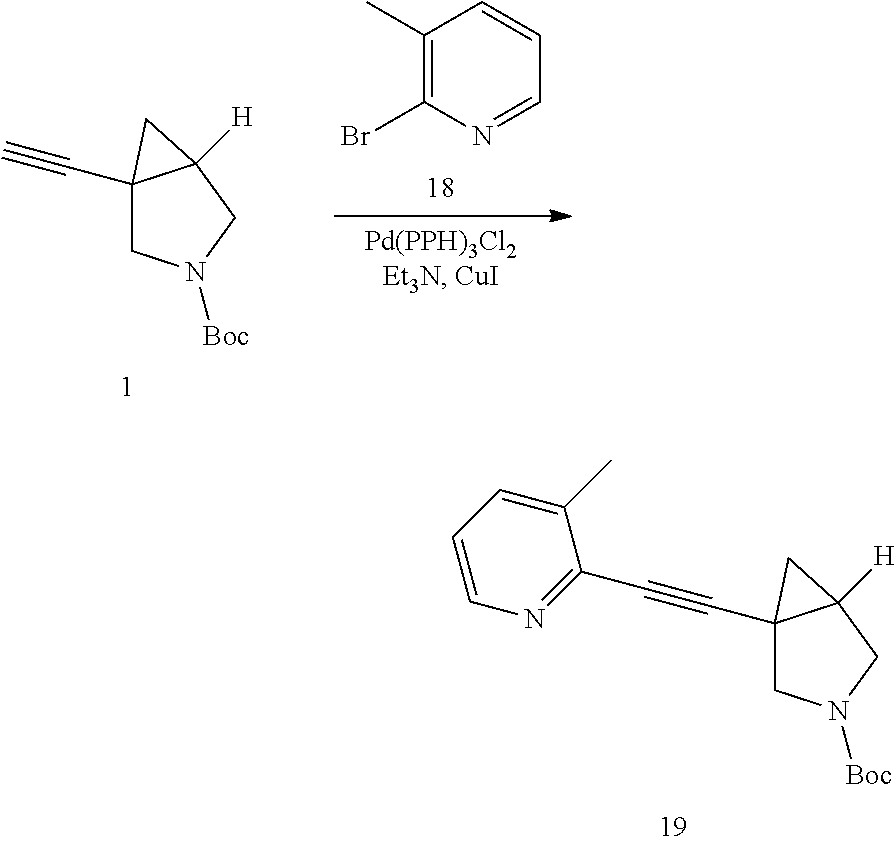
C00032

C00033

C00034

C00035
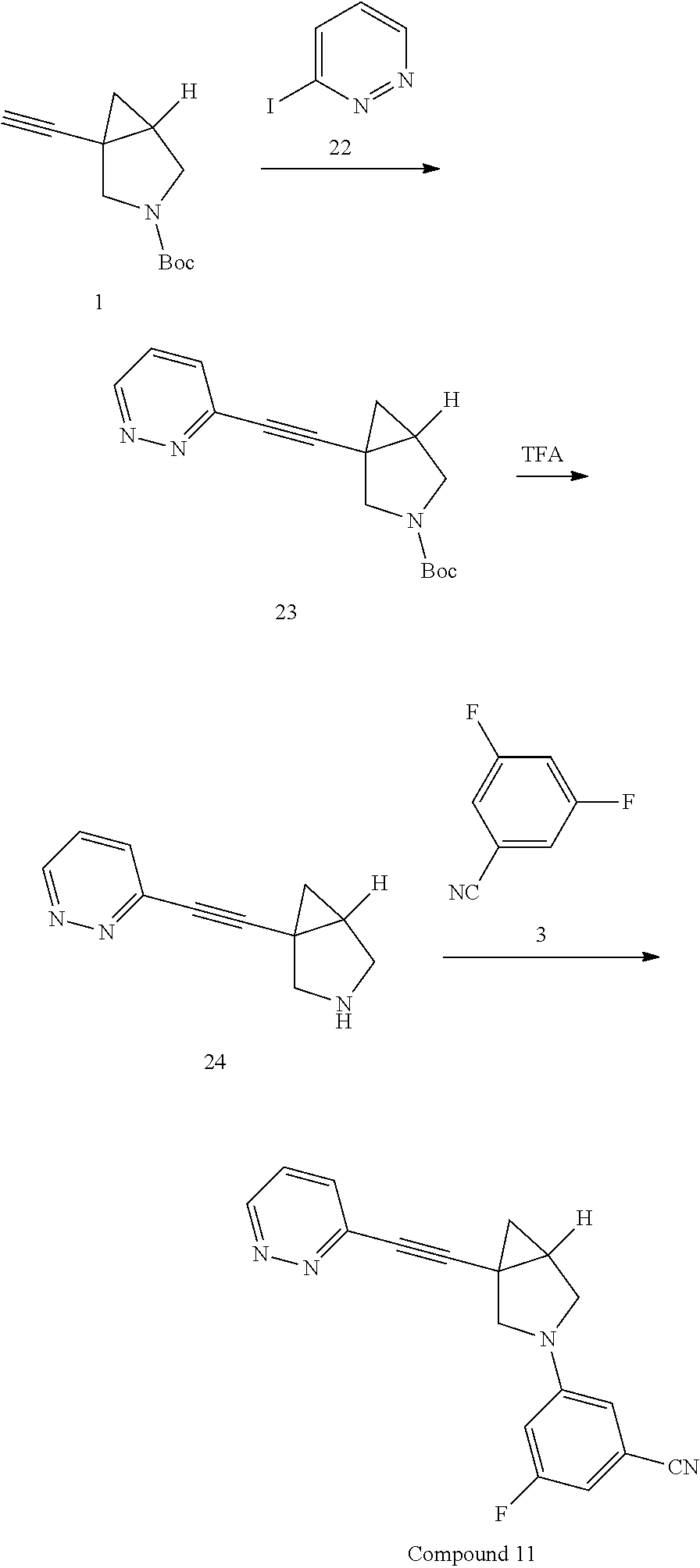
C00036

C00037
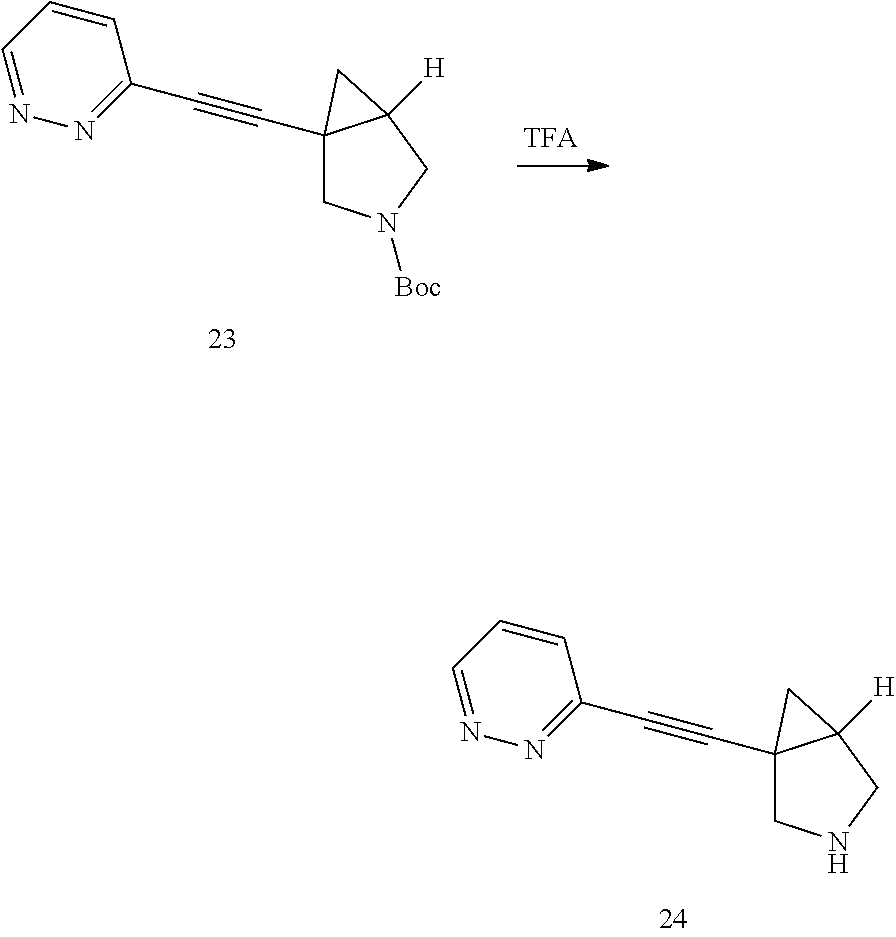
C00038

C00039
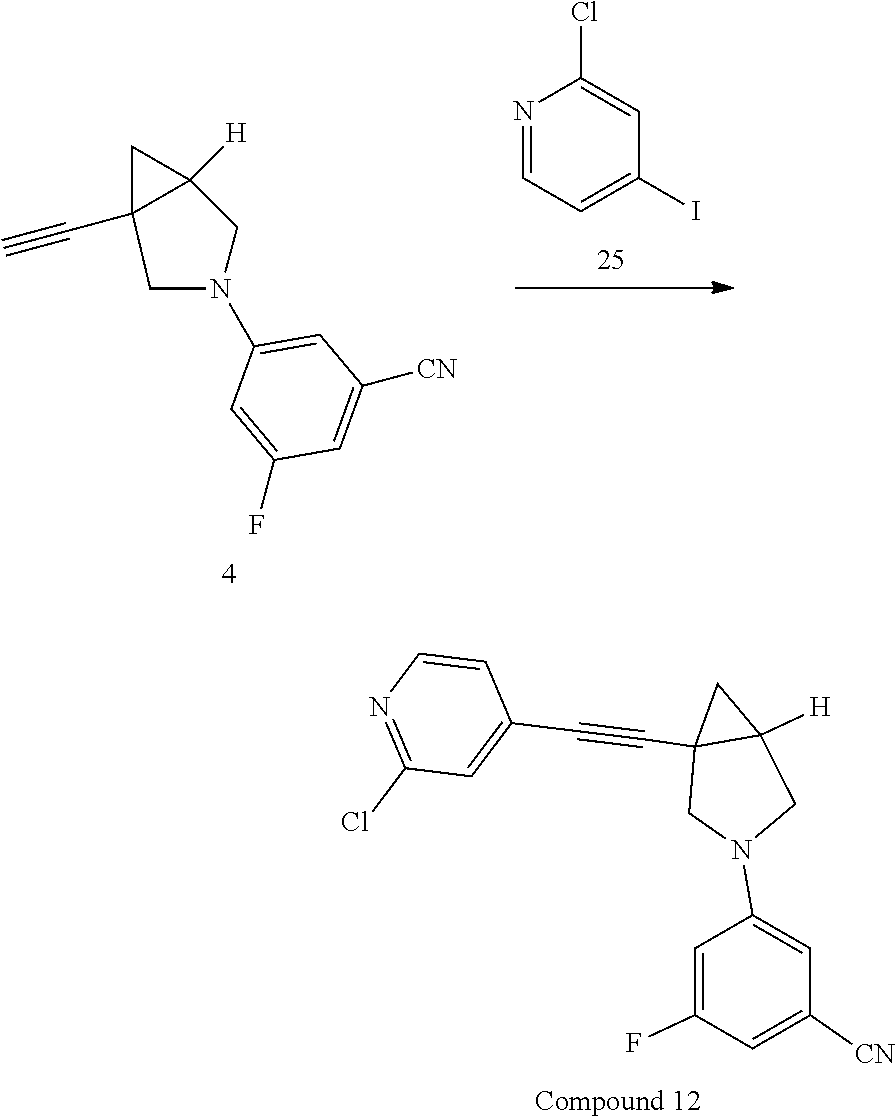
C00040

C00041
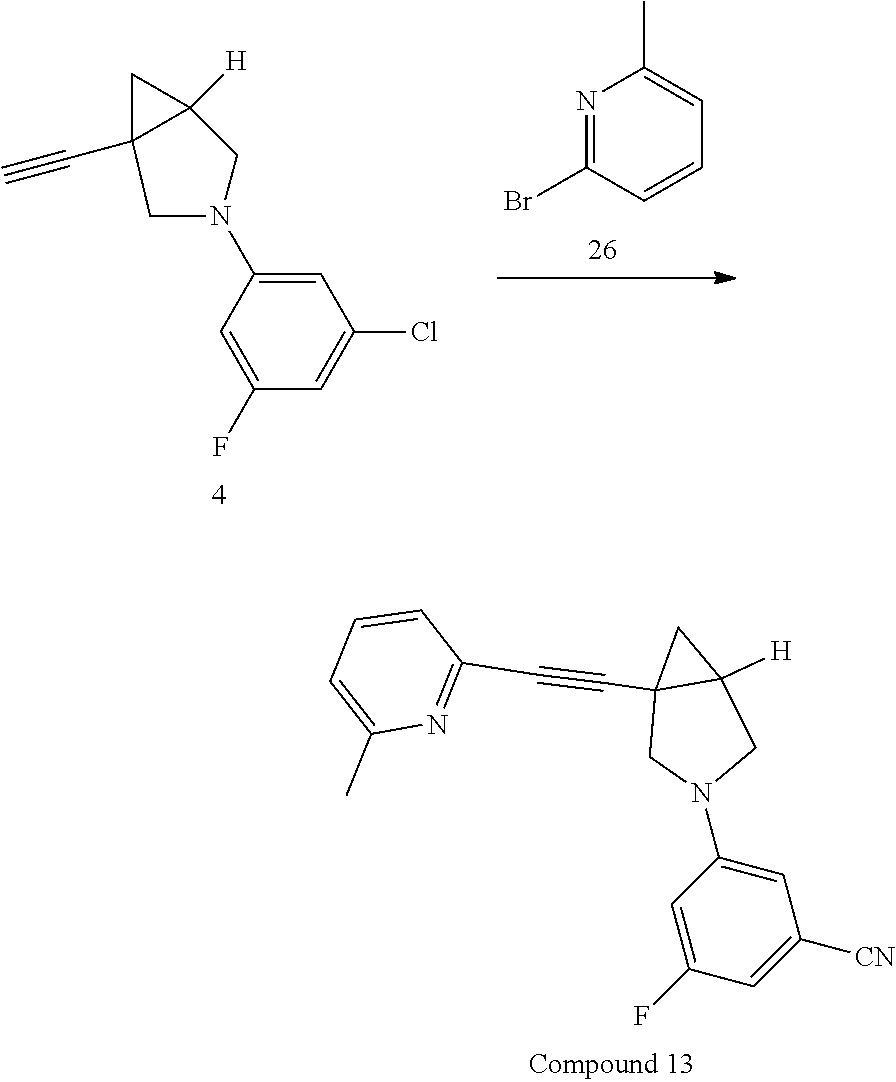
C00042

C00043

C00044

C00045
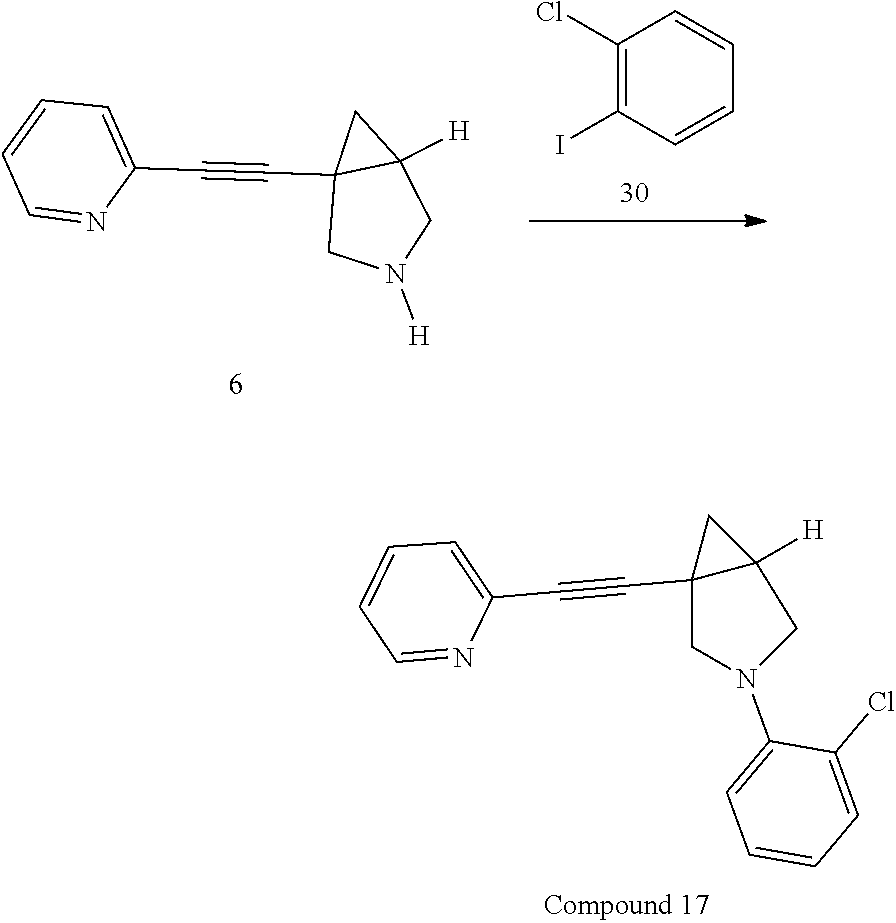
C00046

C00047
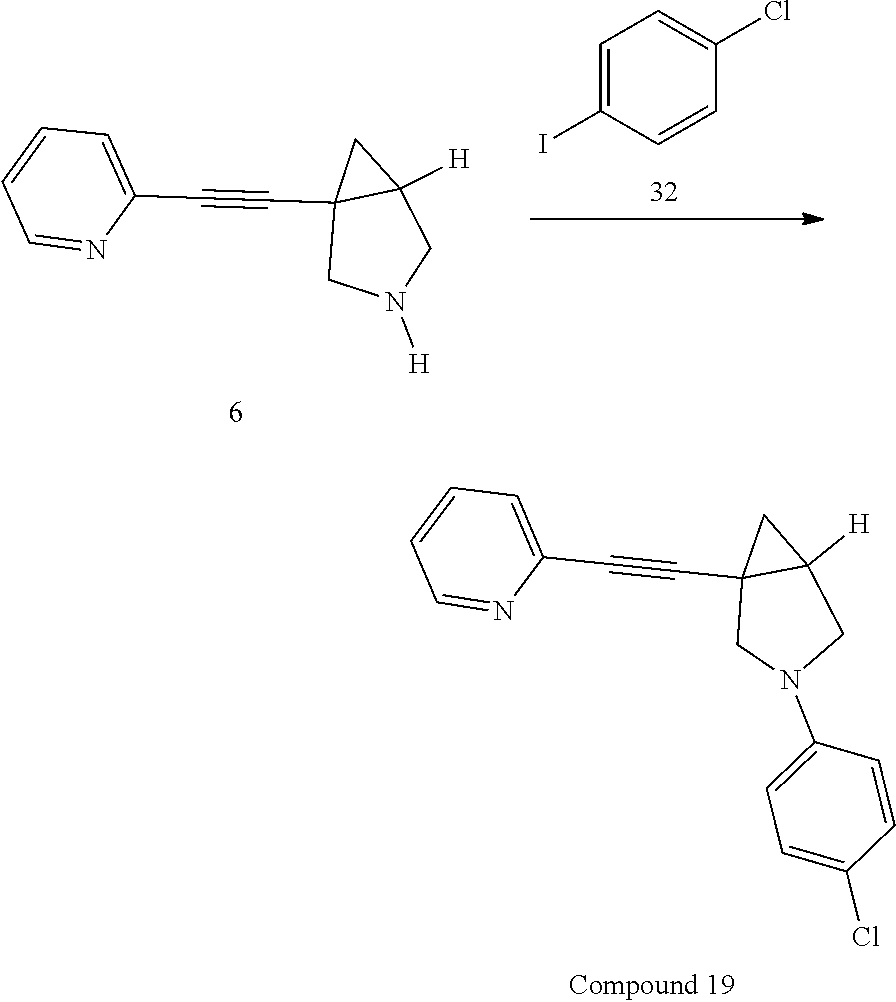
C00048

C00049

C00050

C00051

C00052

C00053

C00054

C00055

C00056

C00057

C00058

C00059

C00060

C00061

C00062

C00063

C00064

C00065

C00066
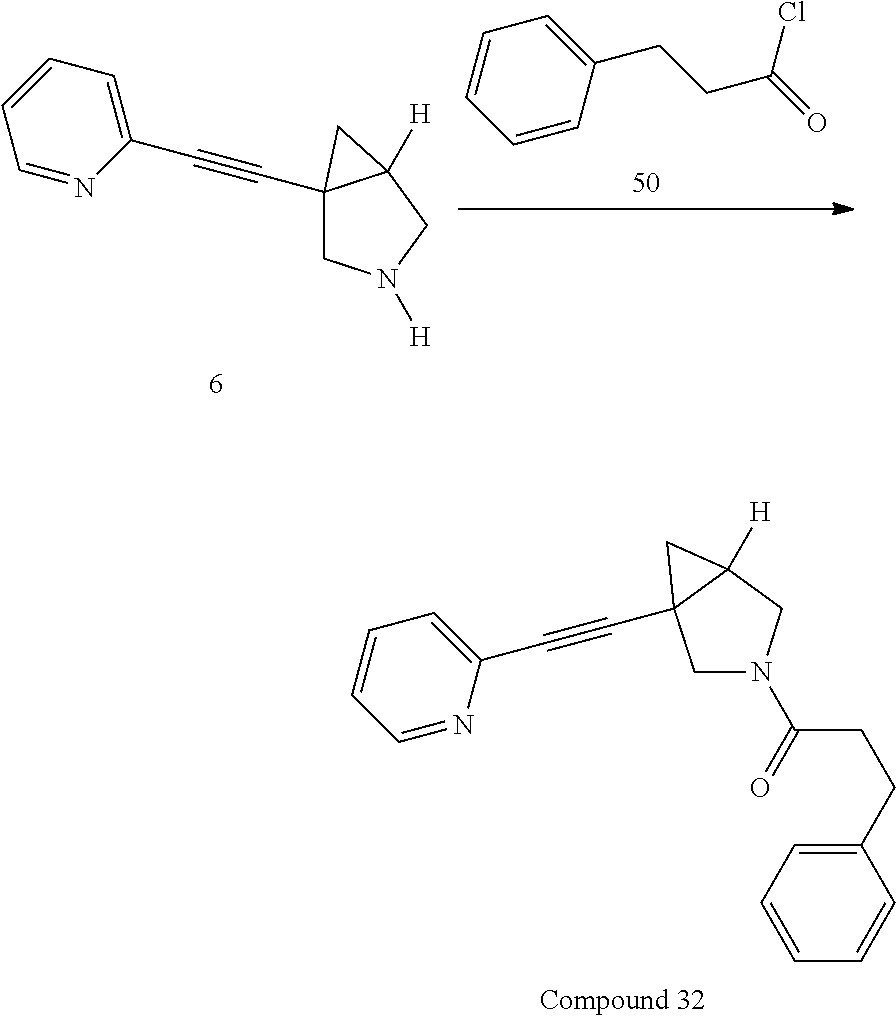
C00067

C00068

C00069

C00070

C00071

C00072

C00073

C00074

C00075

C00076

C00077

C00078

C00079

C00080

C00081

C00082

C00083

C00084
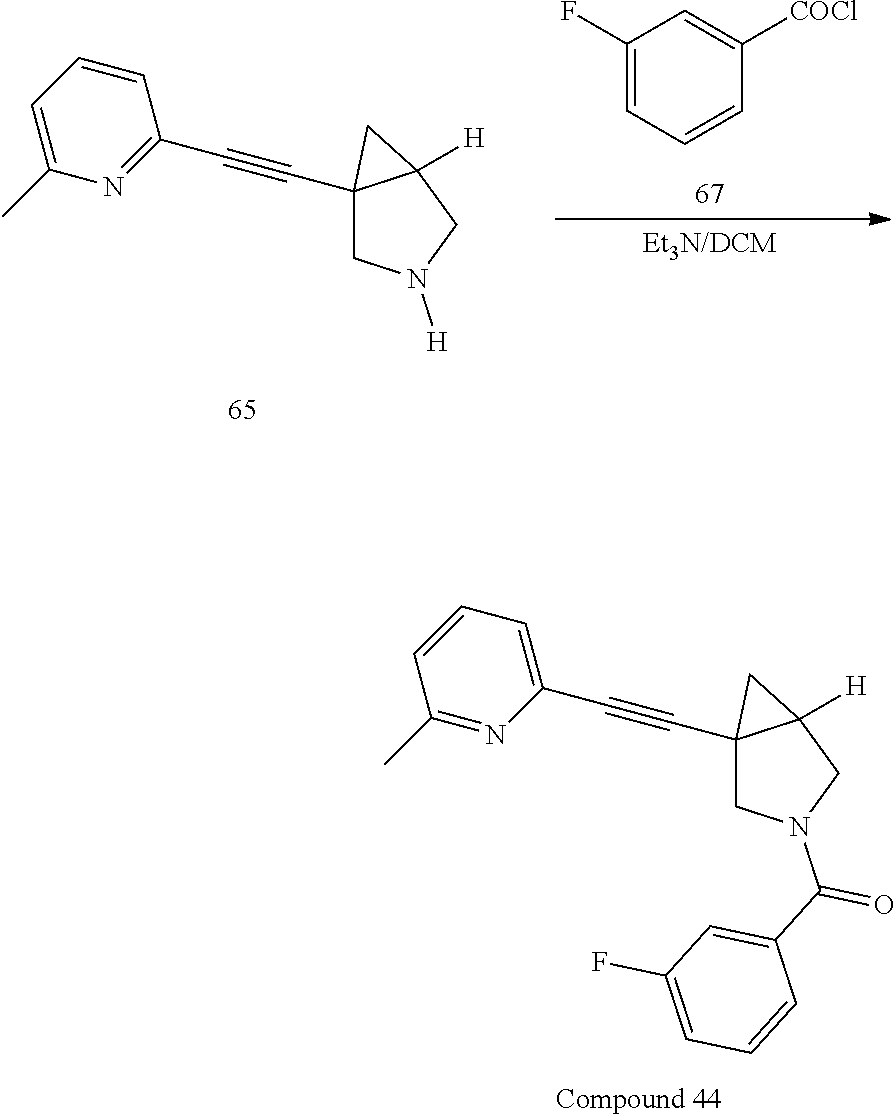
C00085

C00086

C00087

C00088

C00089

C00090

C00091
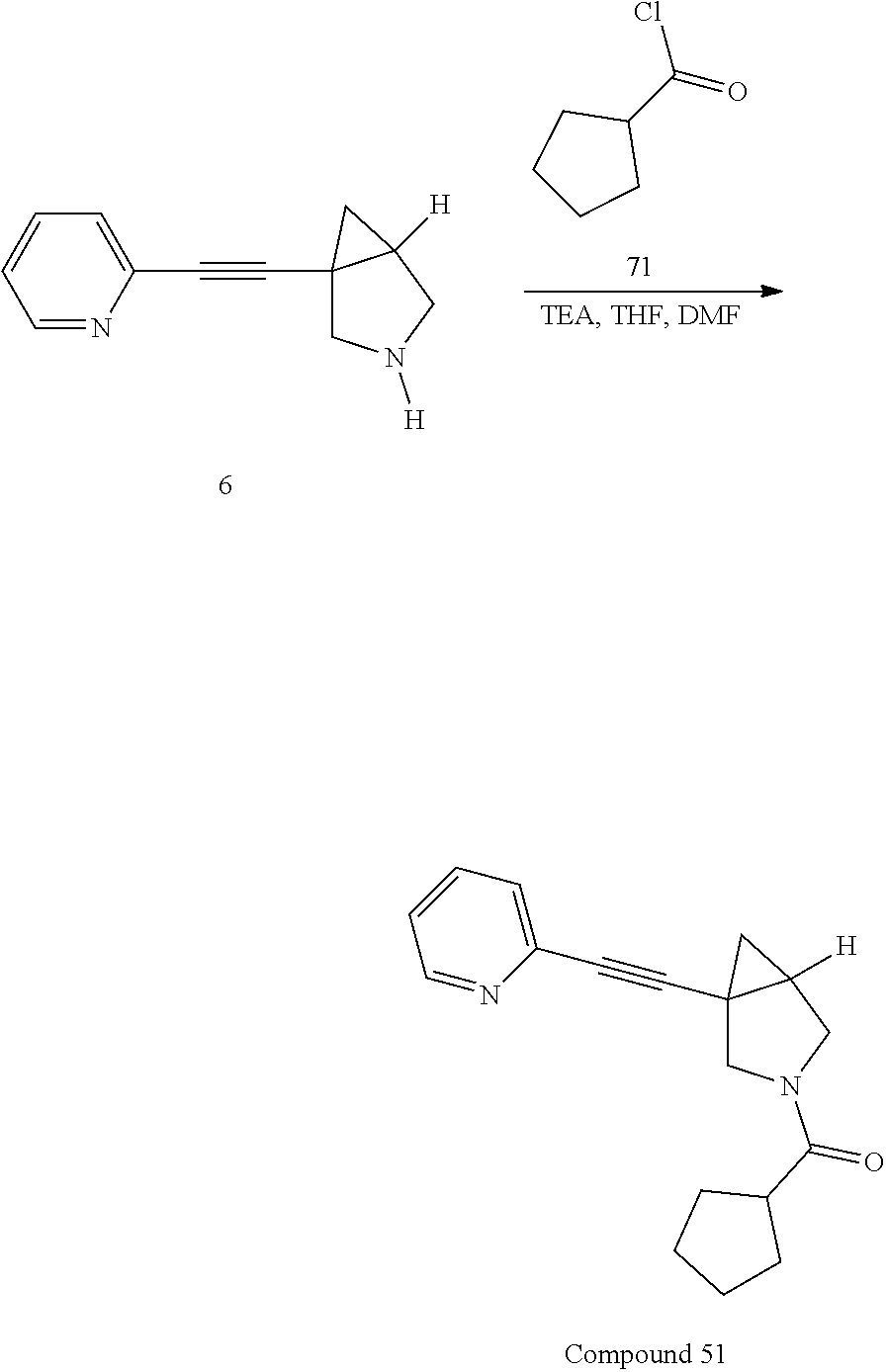
C00092
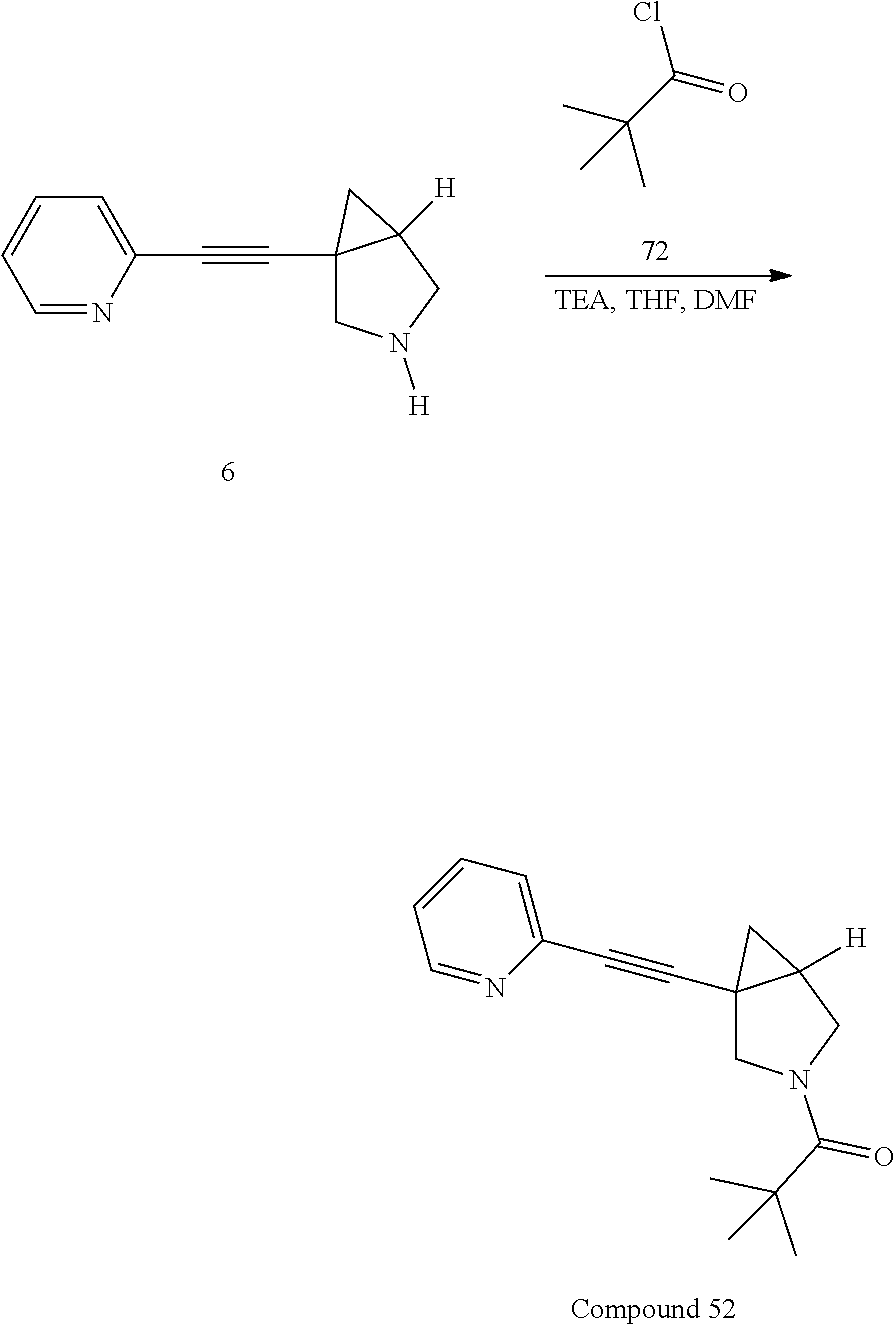
C00093
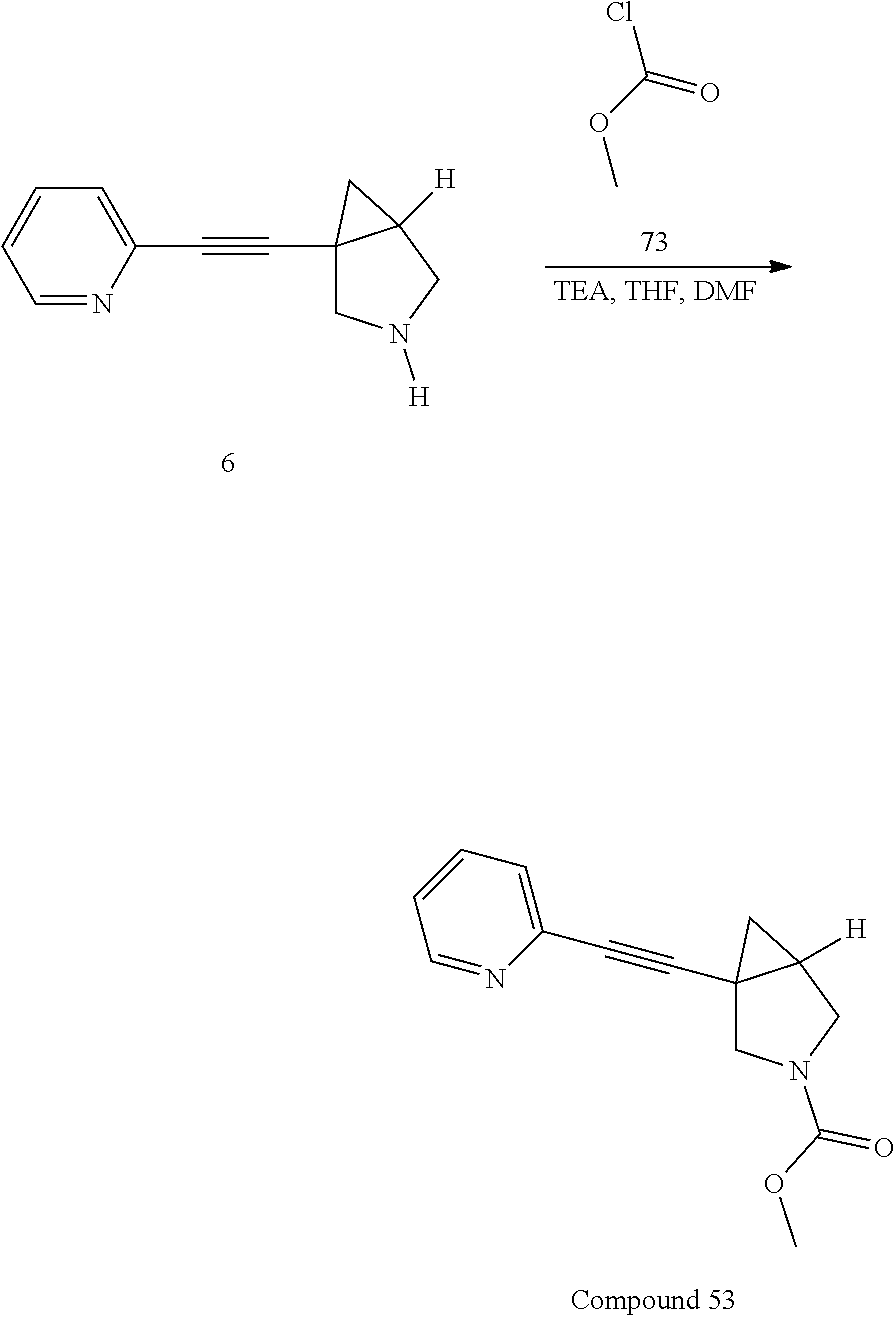
C00094

C00095

C00096

C00097

C00098

C00099

C00100

C00101

C00102

C00103

C00104
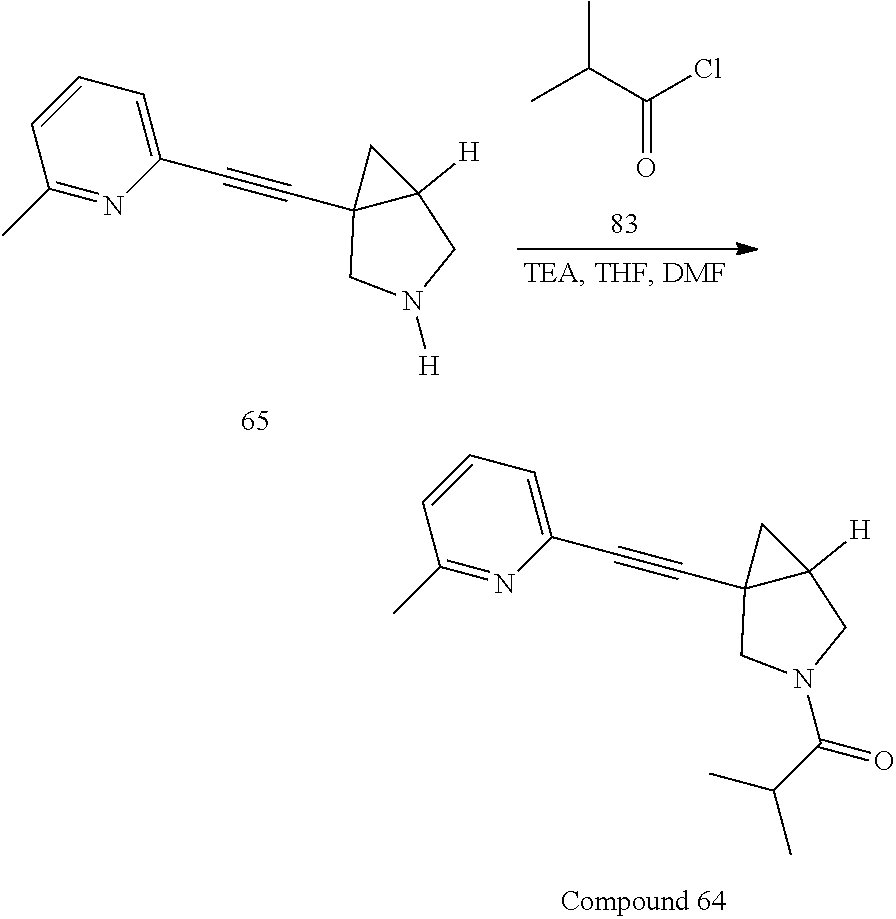
C00105
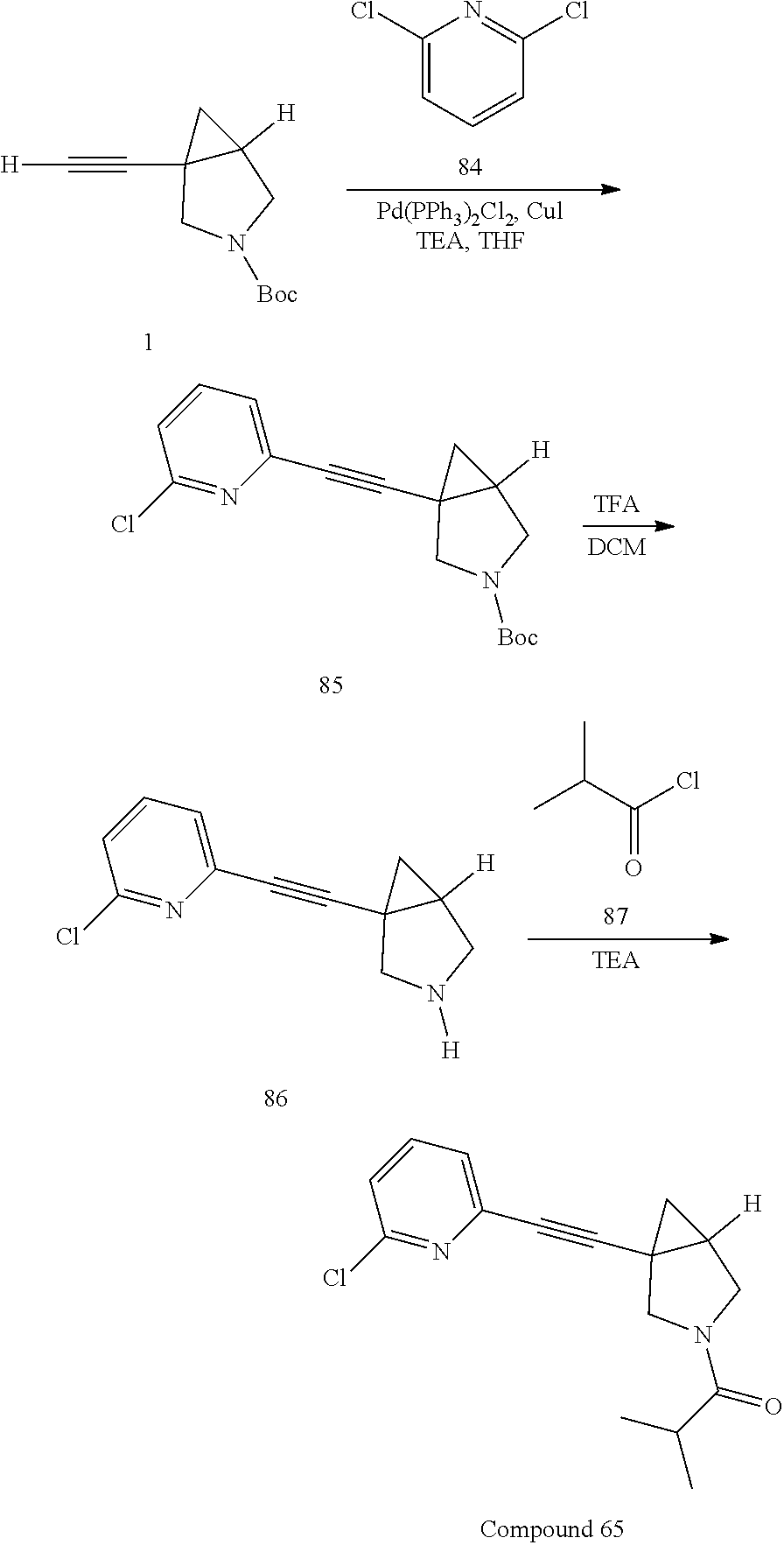
C00106

C00107

C00108

C00109
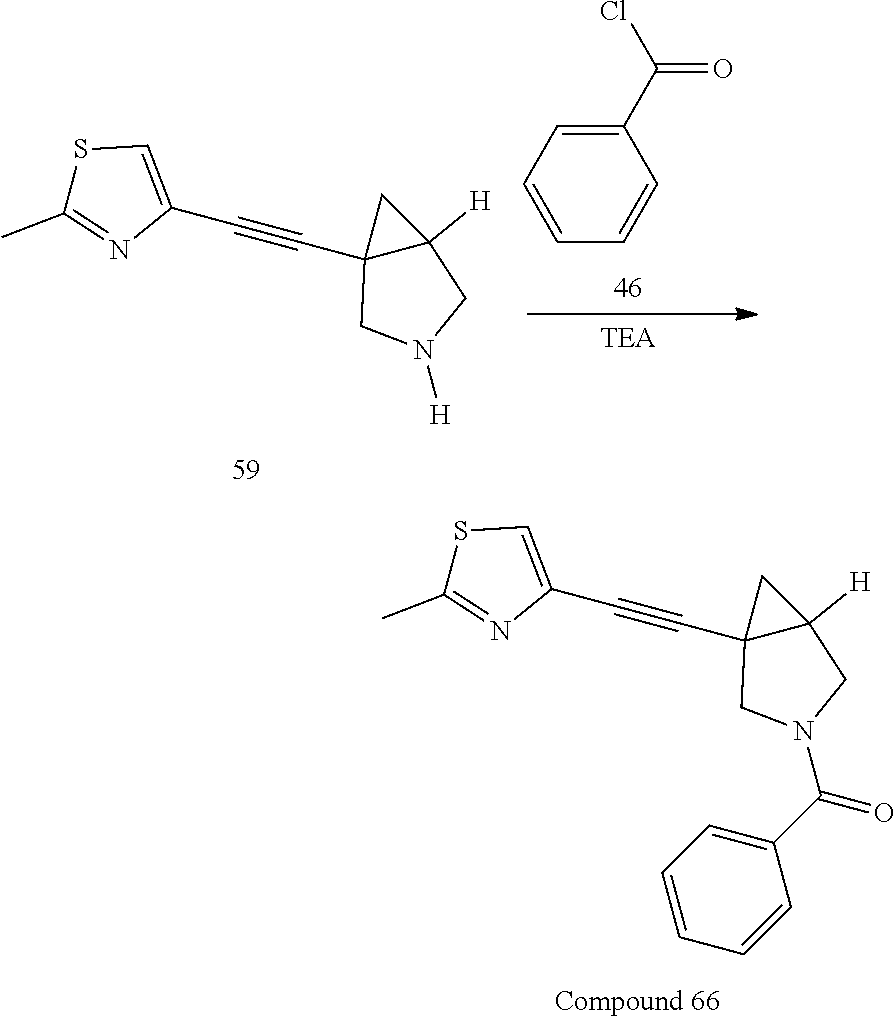
C00110

C00111

C00112

C00113

C00114
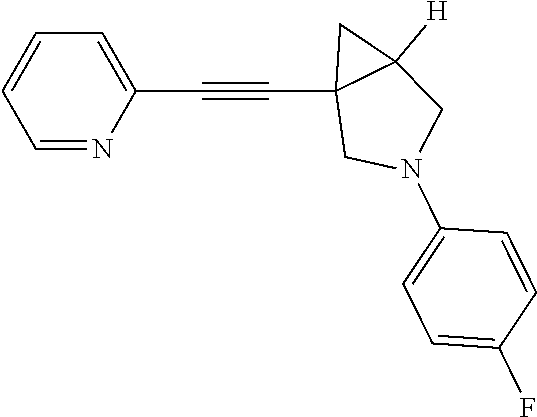
C00115
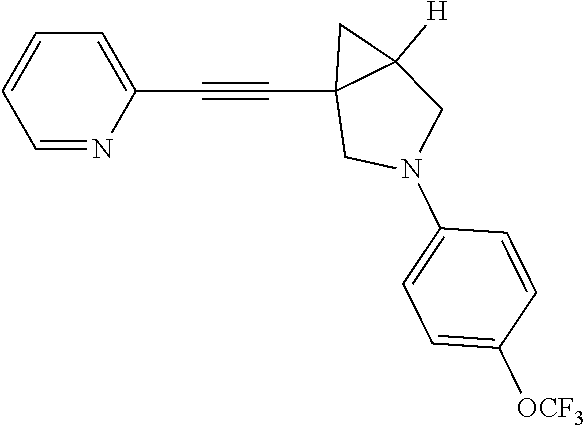
C00116

C00117

C00118
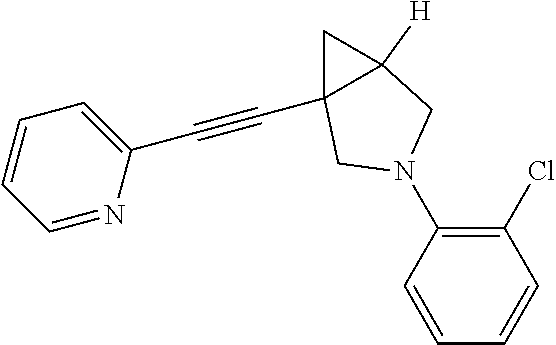
C00119

C00120

C00121

C00122

C00123
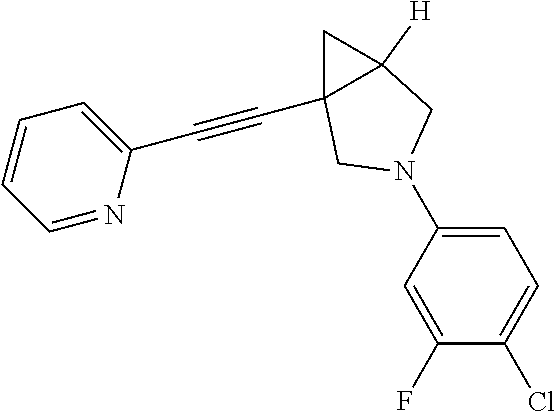
C00124
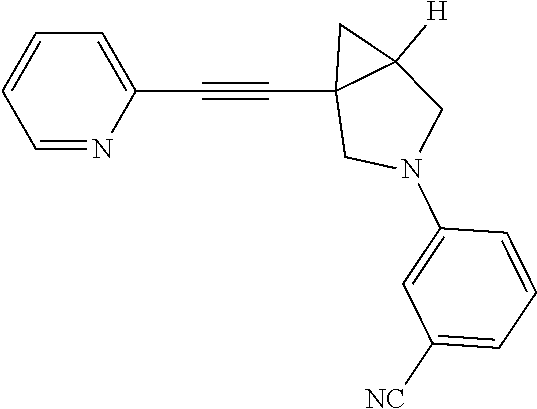
C00125

C00126
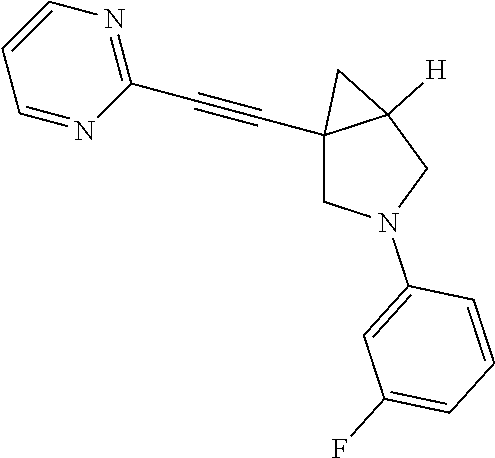
C00127

C00128

C00129
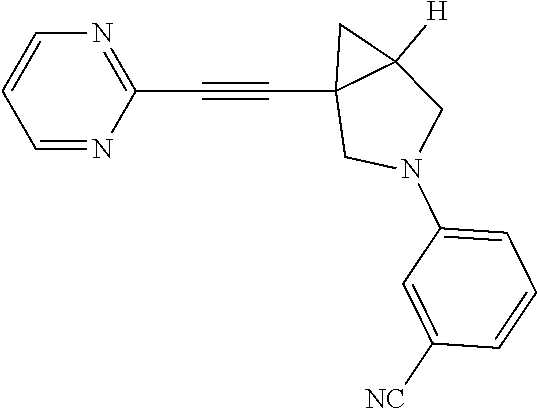
C00130

C00131

C00132

C00133

C00134

C00135

C00136

C00137
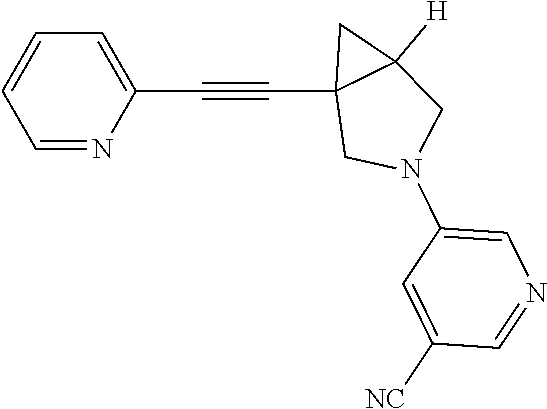
C00138

C00139

C00140

C00141

C00142

C00143

C00144
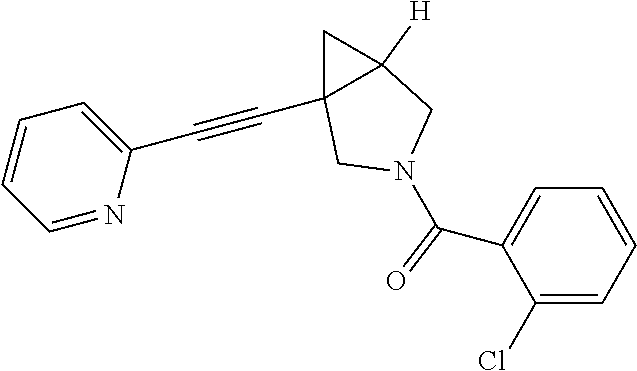
C00145

C00146
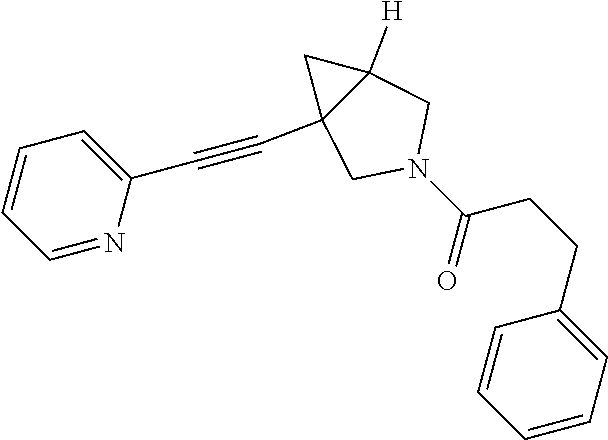
C00147

C00148

C00149
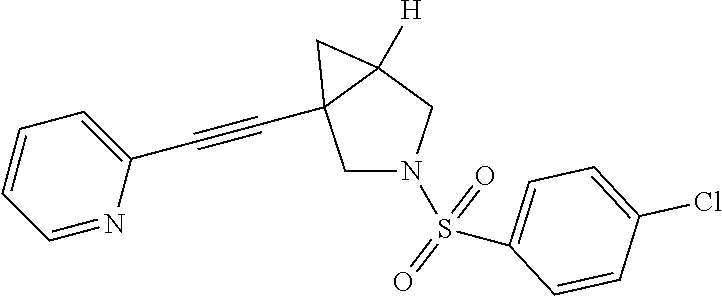
C00150

C00151
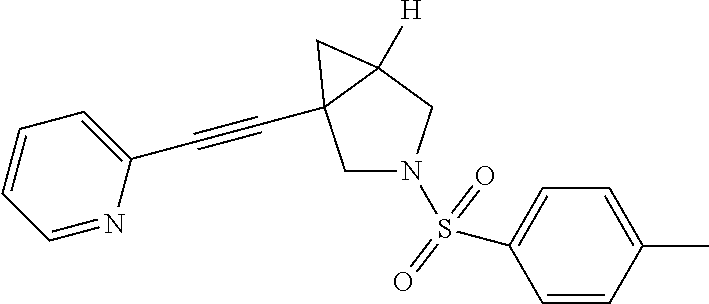
C00152

C00153

C00154

C00155

C00156

C00157

C00158
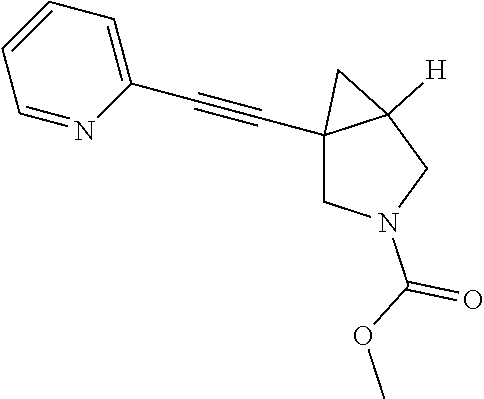
C00159
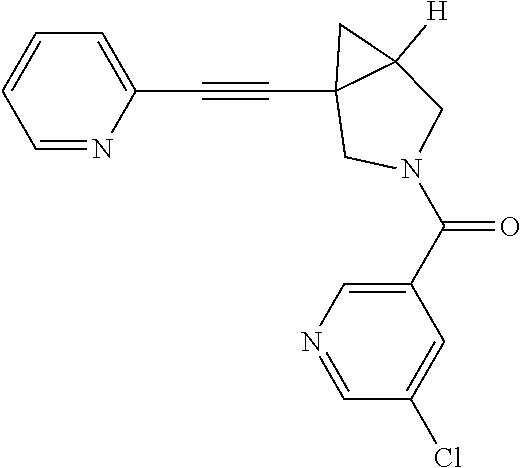
C00160

C00161

C00162

C00163

C00164

C00165

C00166

C00167

C00168

C00169

C00170

C00171

C00172

C00173

C00174

C00175

C00176

C00177

C00178

C00179

C00180

C00181

C00182

C00183

XML
uspto.report is an independent third-party trademark research tool that is not affiliated, endorsed, or sponsored by the United States Patent and Trademark Office (USPTO) or any other governmental organization. The information provided by uspto.report is based on publicly available data at the time of writing and is intended for informational purposes only.
While we strive to provide accurate and up-to-date information, we do not guarantee the accuracy, completeness, reliability, or suitability of the information displayed on this site. The use of this site is at your own risk. Any reliance you place on such information is therefore strictly at your own risk.
All official trademark data, including owner information, should be verified by visiting the official USPTO website at www.uspto.gov. This site is not intended to replace professional legal advice and should not be used as a substitute for consulting with a legal professional who is knowledgeable about trademark law.